Culture Invigoration – Workshop 1 (Corporate ID)

The Appleton Greene Corporate Training Program (CTP) for Culture Invigoration is provided by Ms. Elfouly Certified Learning Provider (CLP). Program Specifications: Monthly cost USD$2,500.00; Monthly Workshops 6 hours; Monthly Support 4 hours; Program Duration 24 months; Program orders subject to ongoing availability.
If you would like to view the Client Information Hub (CIH) for this program, please Click Here
Learning Provider Profile

With over a quarter-century of groundbreaking work in the technology sector, Ms. ElFouly is a beacon of multifaceted excellence, blending operational management, human resources, sales, digital transformation, communications, marketing, and strategy with unparalleled expertise. Their experience stretches across various business units, both globally and at the headquarters level, embodying a leadership style that breaks through conventional barriers.
Holding the distinguished title of Certified Chair™ of Advisory Boards, she excel in driving change management, devising organizational strategies, and fostering transformative cultures aimed at growth. Their leadership approach, deeply rooted in a Multi-certified Executive & Human Potential Coaching philosophy, employs a holistic, system-eclectic methodology that promises enduring success and the unlocking of full potential within collective projects.
Fueled by a passion for building profound relationships, empowering individuals, and developing talent, their compassionate and inclusive leadership style resonates deeply. An American-Egyptian and a Citizen of the World, they are a true Multipotentialite, showcasing an exceptional ability to excel across various fields with agility and excellence.
Currently, they are channeling their focus towards nurturing ventures in health, well-being, and people-centered projects, aiming for their successful and impactful realization. As a polymath and avid learner, they are deeply involved in exploring Quantum Physics-based Alternative Medicine, working towards a Double Board Certified Doctorate and Ph.D. in Natural Medicine.
Their interests extend into the realms of the Metaverse, Web3, Cryptocurrency, NFTs, and XR, with a commitment to unlocking the transformative potential of these technologies. Advocating for mental and physical health, mindfulness, energy work, biohacking, and personal growth, they are dedicated to fostering success, productivity, self-awareness, and the establishment of healthy boundaries.
A staunch supporter of diversity, equity, and inclusion, they stand beside those brave enough to share their truths. As a speaker, they engage in select discussions on the Metaverse, mindfulness, biohacking, and well-being. As a coach, they attract ambitious, empathetic executives, solopreneurs, and entrepreneurs looking to elevate their personal and professional lives.
Ms. ElFouly sits on multiple technology industry and start-up Advisory Boards with a key focus on establishing transformative cultures and supporting culture invigoration across enterprise organizations.
MOST Analysis
Mission Statement
Workshops to identify the organization’s core identity, Culture, and characteristics.
Objectives
01. Defining Identity: departmental SWOT analysis; strategy research & development. Time Allocated: 1 Month
02. Strong Culture: departmental SWOT analysis; strategy research & development. Time Allocated: 1 Month
03. Cultural Alignment: departmental SWOT analysis; strategy research & development. Time Allocated: 1 Month
04. Building Engagement: departmental SWOT analysis; strategy research & development. Time Allocated: 1 Month
05. Enhancing Collaboration: departmental SWOT analysis; strategy research & development. Time Allocated: 1 Month
06. Attracting Talent: departmental SWOT analysis; strategy research & development. Time Allocated: 1 Month
07. Positive Environment: departmental SWOT analysis; strategy research & development. 1 Month
08. Customer Experience: departmental SWOT analysis; strategy research & development. Time Allocated: 1 Month
09. Differentiating from Competitors: departmental SWOT analysis; strategy research & development. Time Allocated: 1 Month
10. Managing Change: departmental SWOT analysis; strategy research & development. Time Allocated: 1 Month
11. Ethical Framework: departmental SWOT analysis; strategy research & development. Time Allocated: 1 Month
12. Measuring Identity: departmental SWOT analysis; strategy research & development. Time Allocated: 1 Month
Strategies
01. Defining Identity: Each individual department head to undertake departmental SWOT analysis; strategy research & development.
02. Strong Culture: Each individual department head to undertake departmental SWOT analysis; strategy research & development.
03. Cultural Alignment: Each individual department head to undertake departmental SWOT analysis; strategy research & development.
04. Building Engagement: Each individual department head to undertake departmental SWOT analysis; strategy research & development.
05. Enhancing Collaboration: Each individual department head to undertake departmental SWOT analysis; strategy research & development.
06. Attracting Talent: Each individual department head to undertake departmental SWOT analysis; strategy research & development.
07. Positive Environment: Each individual department head to undertake departmental SWOT analysis; strategy research & development.
08. Customer Experience: Each individual department head to undertake departmental SWOT analysis; strategy research & development.
09. Differentiating from Competitors: Each individual department head to undertake departmental SWOT analysis; strategy research & development.
10. Managing Change: Each individual department head to undertake departmental SWOT analysis; strategy research & development.
11. Ethical Framework: Each individual department head to undertake departmental SWOT analysis; strategy research & development.
12. Measuring Identity: Each individual department head to undertake departmental SWOT analysis; strategy research & development.
Tasks
01. Create a task on your calendar, to be completed within the next month, to analyze Defining Identity.
02. Create a task on your calendar, to be completed within the next month, to analyze Strong Culture.
03. Create a task on your calendar, to be completed within the next month, to analyze Cultural Alignment.
04. Create a task on your calendar, to be completed within the next month, to analyze Building Engagement.
05. Create a task on your calendar, to be completed within the next month, to analyze Enhancing Collaboration.
06. Create a task on your calendar, to be completed within the next month, to analyze Attracting Talent.
07. Create a task on your calendar, to be completed within the next month, to analyze Positive Environment.
08. Create a task on your calendar, to be completed within the next month, to analyze Customer Experience.
09. Create a task on your calendar, to be completed within the next month, to analyze Differentiating from Competitors.
10. Create a task on your calendar, to be completed within the next month, to analyze Managing Change.
11. Create a task on your calendar, to be completed within the next month, to analyze Ethical Framework.
12. Create a task on your calendar, to be completed within the next month, to analyze Measuring Identity.
Introduction
The Purpose Of A Company Must Be Much More Than Just Words
The purpose of a corporation extends beyond its mission statement or chief executive officer’s vision. In fact, according to Gallup, actions speak louder than words when it comes to conveying an organization’s mission to its stakeholders, consumers, and employees.
A company’s purpose is fundamentally an outspoken declaration of why it is in business. It expresses the organization’s values in terms of history, ethics, emotion, and application. The driving factor behind a company’s ability to define its actual brand and establish the ideal culture, regardless of how it is expressed to employees and customers, is its mission.
Making that mission a reality, however, is a constant struggle for leaders, and it begins with their workforce. Gallup frequently discovers discrepancies between what organizations want their purpose to be and the brand and culture their workers actually produce through their activities when researching the significance of purpose alongside brand and culture — the linked factors that make up an organization’s identity.
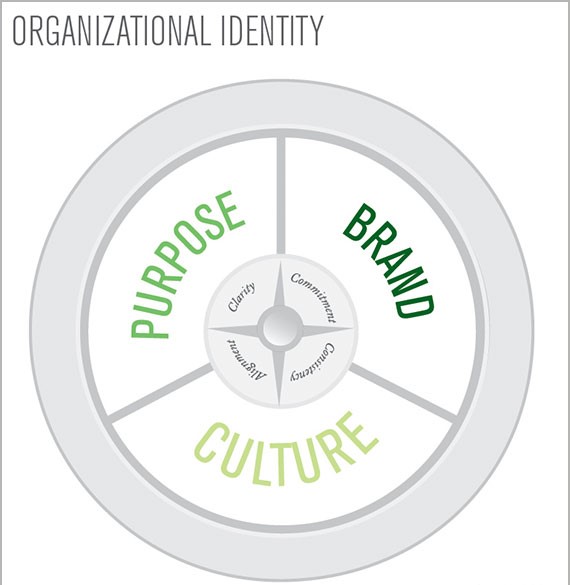
According to Gallup research, just around a third of American workers strongly think that their company’s mission or purpose gives them a sense of importance in their work. Only 28% of employees in the hotel sector strongly agree with the following statement: “I know what my company stands for and what makes our brand(s) different from our competitors.”
These results imply that businesses are having trouble making a strong connection between their stated mission and the goals for their brand and the work environment they foster for their employees. Misalignment is also expensive; Gallup research at a client organization shows that employees who are more in line with their company’s identity outperform employees who are less in line on important business performance criteria.
The ability of an organization to uphold its brand promise and create loyal patrons is also influenced by its purpose. Businesses create, develop, and expand thriving brands based on compelling, well-stated goals. Customers notice inconsistency between a company’s brand promise and its brand behavior when gaps exist between the company’s aspirational culture and its actual culture.
Customers give a brand twice as much of their wallets (47%) as those who aren’t associated with that same brand (23%), but, when promise and behavior are in line when they are aligned with a brand promise. Having and using a purpose as an anchor can provide you a competitive edge: Competitors may be able to copy a firm’s goods and services, but that company can successfully stand out from the crowd by enlisting the help of employees who can carry out and uphold its mission and brand in the marketplace.
How a Company Can Show Its Purpose by What It Chooses Not to Do
One of the most effective ways to make a company’s mission come to life is to let it guide important choices. Although statistics and projections are frequently used to inform strategic decisions, an organization’s purpose serves as a long-term constant guidance. Decisions made in the short term frequently conflict with the mission and long-term strategic objectives of an organization. Sometimes a corporation must forgo immediate financial rewards in order to establish and position itself for long-term success.

Case Study: Three instances
Southwest Airlines has decided not to charge passengers for checked luggage in the past. Yes, charging such a tax would bring the airline a quick windfall. In contrast, the airline’s mission statement reads, “To connect People to what’s important in their lives through welcoming, trustworthy, and affordable air travel.” This aim is congruent with the decision not to charge a client for her first two pieces of luggage, and the company distinguishes itself and shows its dedication to this mission in its national advertising campaign, “Bags Fly Free.”
CVS made the decision to stop selling tobacco products at its retail outlets in the United States, forgoing billions of dollars in potential profits. The CEO of the business at the time asserted, “Put simply, the sale of tobacco products is inconsistent with our purpose,” which is unwaveringly defined by the pharmacy as assisting individuals in achieving better health. It might have cost CVS money to prioritize mission over profit in a competitive market. According to a Gallup Panel research, however, five times as many consumers claimed they were more likely to shop the brand (25%) than not (5%), even though 51% of consumers indicated they were neither more nor less likely to do so as a result of the company’s choice. By making the decision to stop selling cigarettes, CVS furthered its mission and increased its chances of attracting new customers. The business is still steadfast in its choice, recently giving up its membership in the U.S. Chamber of Commerce to avoid any potential conflicts with its mission to “help people on their path to better health.”
A sizable local bank changed its practice of charging clients for debit cards. The penalty was actually eliminated by the bank when customers satisfied specified minimum deposit and balance requirements because it was comparatively minor. However, unintentionally, individuals with lower financial means frequently ended up paying the price. The bank’s mission, which focused on fostering great financial well-being for its consumers, was at odds with charging a fee to this particular customer segment. Following employee feedback to the company’s leaders, the decision was made to totally abolish the fee, making it apparent to both customers and staff that the bank was committed to its stated objective.
These businesses have a strong commitment to purpose, one of the four essential components (the others being clarity, alignment, and consistency) required to create an effective organizational identity. Though the majority of executives can easily describe the ideal identity of their business, they frequently struggle with making the strategic choices that strengthen the firm’s dedication to its purpose.
Every choice a leader makes puts them up against the task of living up to the mission of their organization. Sometimes businesses demonstrate their deepest dedication to their mission by refusing to accept short-term profits that are at odds with their declared goals. These choices present chances to enhance an organization’s reputation among existing and potential clients.

The Ideal Culture Is Not Just Concerned With Employee Satisfaction
Making employees happy or content isn’t what it takes to have a strong workplace culture with superstar employees who know how to win new business; firms struggle when they believe it is.
It’s true that motivated people have a positive outlook on their jobs and working environments. However, involvement is not based on a vague emotion. Measuring employee happiness or contentment levels and meeting their needs frequently fall short of achieving the core objective of employee engagement, which is improved company results.
When employees are treated as stakeholders in both the company’s and their own futures, organizations are more successful in increasing engagement and achieving better business performance. This entails concentrating on practical performance management tasks including outlining job requirements, supplying individuals with the tools they need to complete their tasks, offering development opportunities, and encouraging productive working relationships.
According to Gallup’s State of the American Workplace study, the majority of the American workforce (51%) is not engaged. These workers are uncaring and have no strong feelings about their work. They pose a risk, one that might lean either positively or negatively.
Many disengaged workers seek inspiration in their work. They are the “show me” group who require more encouragement to deliver their best work. Positive emotions, including happiness, are frequently byproducts of participation but shouldn’t be mistaken for the main results. Instead, the main focus should be on factors that motivate employees and influence outcomes, such as expectations that are clear, opportunities for employees to do what they do best, development opportunities, and voice in decision-making.
Commercial Strategy
Clearer and better results are obtained when engagement is approached as a business strategy. In order to ascertain the association between engagement, as determined by Gallup’s employee engagement survey, and business-/work-unit profitability, productivity, employee retention, and customer perception, Gallup conducted the ninth iteration of our meta-analysis (a study of studies) last year.
The results of the most recent meta-analysis are consistent with the results of every prior edition, despite significant changes in the economy and technology. Simply put, engaged workers outperform non-engaged workers in terms of business results across industries, firm sizes, nationalities, and both good and bad economic times.
Based on a composite of financial, customer, retention, retention, safety, quality, shrinkage, and absenteeism measures, business or work units that score in the top quartile of their company for employee engagement have nearly twice the odds of success compared to those in the bottom quartile. The success rate for individuals in the 99th percentile is four times higher than for those in the first percentile.
Business units in the top quartile experience benefits in the following areas, among others, when compared to those in the worst quartile of engagement:
Showing up and sticking around: Highly engaged business units experience a 41% drop in absenteeism and a 17% boost in productivity because highly engaged employees make it a point to show up to work and accomplish more work. Additionally, engaged employees are more inclined to stick with their company. Highly engaged business units experience a 24% decrease in turnover in organizations with high turnover. Gains in low-turnover organizations are much more striking: Business units with high levels of engagement turn over 59% less. Organizations with an annualized turnover of 40% or above are considered high-turnover, whereas those with an annually turnover of 40% or less are considered low-turnover.
Customer outcomes: Engaged staff members often show up for work and are more dedicated to quality and safety. Naturally, these personnel support their companies’ excellent organic development and efforts to enhance customer relationships. Business units with high levels of engagement enhance sales by 20% and customer ratings by 10%.
Profit: The above results combine to boost an organization’s profitability. Employees who are more engaged are more attentive, productive, and aware of client needs. They also pay closer attention to procedures, rules, and procedures. The collective actions of highly engaged business units lead to a 21% increase in profitability.
The Right Culture Can Be Created
Employee engagement has long been a problem in the American workforce, but it may now be more important than ever for attracting and keeping top talent. A stimulating workplace is a basic expectation and a prerequisite for the modern workforce. Many workers won’t accept working for a company that doesn’t strategically value engagement. This means that for leaders, fostering an engaged culture is no longer an option—it is essential.
It takes more than just completing an annual staff survey and handing it off to managers in the hopes that they would take something away from it that will alter the way they manage. It necessitates a detailed examination of how crucial engagement components fit into an organization’s performance growth and human capital plans.
It takes effort and dedication to engage staff, but it is not impossible. A third of the total U.S. workforce is actively employed. The typical level of involvement among our first-year clients is 30%, and many businesses come to Gallup with engagement levels of much lower percentages.
However, as they alter their strategy, these firms start to see gains in performance. The degree of involvement among most recent Gallup clients—the recipients of the Gallup Great Workplace Award—is 44%, and it is much higher among clients with the highest levels of engagement. In these firms, there are 14 engaged employees for every actively disengaged person, a ratio that is seven times higher than the national average, and an average of 70% of employees are engaged.
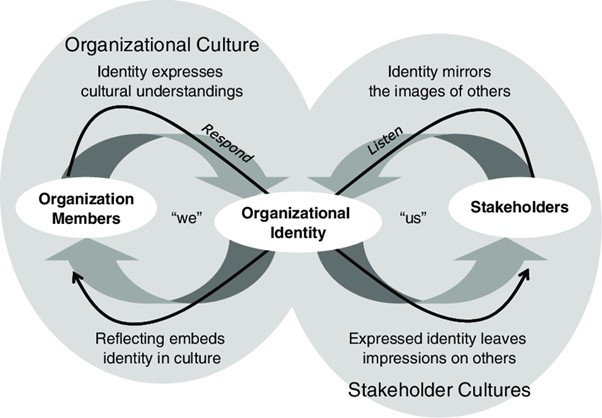
Organizations with high levels of engagement have similar beliefs and procedures. include the following:
• They understand that fostering an engaged culture begins at the top • Their leaders prioritize engagement as a competitive advantage.
• They are transparent and reliable in their communication.
• They give the utmost attention to selecting the appropriate KPIs and to selecting and training excellent managers.
Additionally, managers are held responsible for their teams’ measurable levels of engagement as well as how it connects to their teams’ overall performance in highly engaged businesses. They make certain that supervisors engage workers from the very first minute of their first day on the job.
These organizations put a strong emphasis on the development of both individuals and teams, and they offer well-defined, comprehensive programs for leaders and managers. Employee engagement is not a yearly “check-the-box” activity, but rather a vital factor in their people strategy.
Develop Your Organization’s Brand
Purpose, value, and culture are the three components of a cohesive and full identity that can support an organization’s long-term success.
Have you ever questioned how businesses can display lovely vision and values statements on their walls while giving you a different image as you walk through their hallways? What is said and what is real frequently feel like two distinct worlds.
Organizations, however, cannot afford this misalignment because, without it, they will struggle to connect their mission (reason for being), value agenda (what they stand for), and culture. By establishing an identity, translating it from the organizational to the individual level, and explaining the significance of the identity for each member in the organization, organizations of the future have closed this gap. These three components—purpose, values, and culture—combine to form a coherent and comprehensive identity.
1. Create an achievable goal to discover your “why.”
A company should begin with a clear and motivating declaration of its mission that explains how it will use its superpowers to improve the world. A worthwhile goal is both inspirational and doable. A purpose requires three things in order to be actionable:
o A small group of purpose themes—about three—that highlight the people and causes that matter to an organization.
o A series of audacious, ten- to thirty-year commitments for each theme. Reaching carbon net neutrality by 2050 might be a brave goal.
o Each bold promise has one to five-year metrics associated to it. A corporation could set a deadline for installing green technologies in order to attain carbon net neutrality.
By using this strategy, a company can transform its long-term goals into a list of doable, understandable present goals that are related to the value agenda.
2. Integrate your mission with your value agenda
Only when a company converts a purpose into a strategy with a value agenda that connects the organization with value creation can a purpose deliver outcomes. The strategy should outline the workstreams and activities required to attain the metrics outlined in the purpose, relating them to the actual tasks that need to be completed in order to benefit individuals who are important to the business.
As a result, the purpose and value agenda are logically linked from the purpose statement all the way down to the initiative charters that will be put into action the same year. By establishing this connection, the organization is pointed toward a shared goal while also bringing the board, C-suite, and management into alignment.
The organizational structure should be connected to the value agenda as well. Leaders should determine which roles are crucial to the organization’s success and make sure that the appropriate people are in each one.
3. Establish cultural norms that support your value goal.
An organization can quickly and sustainably capture value by consciously creating its culture. But culture only becomes the way things are done when a company has clear expectations for observable, measurable actions. These actions ought to be defined both at the organizational and personal levels and connected to a particular organizational value. For instance, a culture that prioritizes execution and ongoing operational improvement would demand the following conduct as an example of excellence: “Remains steadfast in practices and works tirelessly to enhance them.”
In less than six months, a major international metals player completely redefined their identity. All staff members participated in a thorough listening process that the organization used to assess and update the organization’s identity.
The outcome of the process was a purpose statement that included three purpose themes and two audacious, long-term pledges for each subject, such as lowering risk of harm to zero and tripling the organization’s GDP contribution in the nations where it operates. These pledges were further divided into precise measures over the next one to five years. When the concepts and commitments were set in stone, the business created a visual depiction of the identity, which acts as a constant visual reminder and road map for personnel.
Organizations can only prosper in uncertainty, contribute to the world, provide superior value, and give their employees a sense of purpose by developing a consistent and comprehensive identity.
Executive Summary
Chapter 1: Defining Identity
Organizational identity (OI) refers to the core characteristics and enduring qualities that members of an organization perceive as central and distinctive. It encompasses the values, purpose, mission, and vision of the organization. On the other hand, organizational identification (OID) occurs when employees see themselves as part of the organization and feel a sense of belonging to it. OID is associated with higher levels of employee involvement and commitment.
The importance of OI and OID lies in their impact on organizational performance. When employees have a strong sense of organizational identity and identification, they are more likely to be engaged and committed to their work. OID has been linked to employee creativity, with individuals who strongly identify with the organization being more inclined to introduce innovative ideas and contribute to organizational effectiveness.
However, developing a strong organizational identity can also present challenges. Some managers may view employees as disposable assets rather than fostering a sense of oneness with them. This can result in employees not identifying with the organization or its goals. Additionally, OI can create resistance to change as individuals who strongly identify with the legacy organization may be reluctant to embrace new initiatives.
Communication plays a crucial role in shaping organizational identity and facilitating change. Effective communication helps establish trust and transparency, creating a culture where employees feel valued and can actively participate in shaping the organizational identity. It also influences organizational climate and culture, supporting OI and OID.
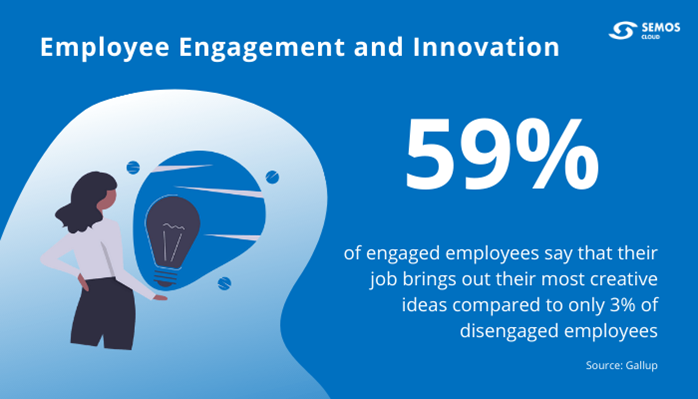
To intentionally develop a healthy organizational identity, it is important to clarify the organization’s purpose, values, and desired culture. This involves asking questions such as “Who are we?” “What are we doing?” and “Who do we want to be in the future?” By understanding the unique characteristics of the organization and fostering a sense of belonging among employees, organizations can create stability during times of uncertainty and foster trust within the marketplace.
By harnessing the power of organizational identity, organizations can support positive change and create a fulfilling work experience for their employees. Intentionally developing and nurturing a strong and positive organizational identity allows organizations to align their actions with their purpose, build trust with stakeholders, and adapt to evolving circumstances while maintaining a sense of stability and belonging.

Chapter 2: Strong Culture
Building a strong organizational culture is crucial for the success and well-being of a company. It involves a collective effort from all members of the organization, and there are ten key elements that contribute to a strong culture.
1. Core values: Core values provide a moral framework for the organization. They should be actionable, observable, and subject to change as the company evolves.
2. Collaboration: Core values should influence how people work together. Collaboration and open communication should be encouraged, allowing individuals to internalize and act upon the organization’s values.
3. Communication: Open and effective communication is essential for a healthy culture. Leaders should cater to different communication styles and create an environment where ideas and opinions can be freely shared.
4. Community: An engaged and interactive culture requires a sense of community. Breaking down silos and fostering relationships among employees is necessary to prevent a fragmented culture.
5. Unified purpose: Despite different roles and projects, a strong culture is cohesive because everyone shares a sense of purpose. Employees should understand how their work contributes to the company’s long-term goals and why it is meaningful.
6. Recognition: Recognition programs and acknowledging achievements publicly strengthen the culture. They bring positive contributions to the forefront, foster camaraderie, and enhance employee experience.
7. Connection: A connected workplace is built on relating to people, ideas, perspectives, and values. Empathy and understanding among employees help create a supportive environment and ensure shared goals are achieved.
8. Office layout: The physical workspace impacts culture. The layout should align with employees’ preferences and support their productivity and comfort. It should reflect the organization’s unique identity rather than imitating other companies.
9. Learning and development: Providing growth opportunities through training, mentorship, and continuous learning is vital. A culture that values learning keeps employees motivated and improves overall performance.
10. Listening and adapting: Organizational culture is constantly evolving. Listening to feedback and being open to change are crucial for preserving and improving the culture over time. Regular analysis and adaptation are necessary to ensure the culture works for everyone.
Creating a strong organizational culture is an ongoing process that requires continuous effort and adaptation. While these ten elements provide a foundation, organizations should tailor their culture to align with their unique values and the needs of their employees.

Chapter 3: Cultural Alignment
Cultural alignment refers to the process of ensuring that employees understand and embrace the values, norms, and behaviors of an organization’s culture. When employees are aligned with the culture, it has a positive impact on business outcomes, such as revenue goals, talent management, and employee performance. Achieving cultural alignment requires defining the culture, identifying areas for improvement, and implementing strategies to strengthen alignment.
To begin the process, it is beneficial to conduct a cultural assessment by an external party to gain an objective perspective. This assessment helps identify strengths and areas that need improvement. Once this information is gathered, a plan can be developed to address the areas of improvement. This plan may involve practical changes, such as reorganizing teams to align with the culture, as well as more intangible changes like promoting transparency. It is also helpful to engage experts or guides, like those from Stewart Leadership, who can provide support and guidance in implementing the necessary changes.
Implementing cultural alignment takes time, patience, and practice. Leaders must build trust with employees, and employees need time to understand and adapt to the new cultural expectations. Despite the challenges, the effort put into aligning employees with the culture can yield significant benefits. Just as immersing oneself in a different culture enriches one’s experience, aligning employees with the company culture can lead to personal satisfaction and improved business outcomes.
The power of cultural alignment lies in its ability to shape the values, expectations, and practices that guide employees’ daily work. However, many organizations struggle to create a culture that employees believe in and that positively impacts business performance. Studies have shown that only a small percentage of employees perceive culture as influencing their work, while HR leaders often underestimate the impact of culture on business performance.
Cultural alignment bridges this gap by connecting employees to the organization’s culture on an individual level. It establishes a shared understanding of the company’s goals and the best ways to achieve them. Research indicates that aligning the workforce with the culture can result in better performance against revenue goals, improved employee performance, and enhanced reputation outcomes for the company.
There are several strategies to build cultural alignment within an organization. One effective approach is to recognize and appreciate behaviors that align with the desired culture. Recognizing and rewarding employees for displaying these behaviors motivates them to continue practicing them. Implementing a mobile-friendly employee recognition platform can make recognition more accessible and engaging for remote workers, fostering a self-reinforcing cycle of cultural alignment.
Encouraging employee voice and providing avenues for feedback also contribute to cultural alignment. Employees should feel safe and confident in expressing their thoughts and concerns about the organization’s culture and values. Anonymous feedback channels, such as pulse surveys and HR chatbots, can facilitate open communication and enable prompt action to address areas of disconnect.
Creating a meaningful set of company values is another important aspect of cultural alignment. These values should be clear, inspiring, and unique to the organization. Communicating and training leaders to exemplify these values in their daily interactions helps foster alignment throughout the company.
Building a culture of trust and psychological safety is crucial for cultural alignment. When employees feel safe, welcomed, and listened to, they are more likely to align with the organization’s culture. This involves practices such as transparent decision-making, inclusive and diverse workplaces, and leaders who act as coaches rather than obstacles.
Hiring for culture fit and incorporating cultural alignment into the onboarding process are also essential. Hiring employees who genuinely resonate with the organization’s culture sets the foundation for alignment. Integrating culture into the onboarding process ensures that new hires understand and embrace the cultural expectations from the beginning of their journey.

Chapter 4: Building Engagement
In a study conducted by Gallup, it was found that engaged employees and disengaged employees have very different perceptions of their workplace culture. This difference in perception has a significant impact on an organization’s brand reputation. Engaged employees are 23 times more likely than disengaged employees to recommend their organization as a great place to work. Understanding how employees talk about their workplace provides valuable insights into the culture and reputation of the organization.
The study involved over 9,000 U.S. employees who were asked to describe their workplace culture using three words or short phrases. The responses were then compared between engaged and actively disengaged employees. Engaged employees used words such as friendly, open, family, teamwork, collaborative, caring, cooperative, integrity, efficient, and supportive to describe their workplace culture. On the other hand, actively disengaged employees used words like lazy, poor, lack, bad, disorganized, slow, old, busy, reactive, and gossip.
These lists of words reveal the stark differences in the employee experiences between engaged and disengaged cultures. Engaged cultures prioritize warm relationships, honesty, shared accountability and performance, and alignment on shared goals. In contrast, disengaged cultures tend to lack these positive characteristics, resulting in negative communication, inefficiency, and a sense of injustice among employees.
The implications of these findings are significant for organizations. Engaged workplaces, characterized by being supportive, friendly, and collaborative, have a distinct advantage over disengaged workplaces. Engaged cultures are more profitable, productive, and likely to attract potential customers and job candidates who are drawn to the positive reputation of the organization.

While organizations invest heavily in brand management through marketing and customer engagement initiatives, the importance of the workplace culture in creating brand ambassadors among employees is often overlooked. Employees who experience warm relationships, honesty, alignment on shared goals, and shared accountability and performance become candid brand ambassadors for the organization, reinforcing its reputation and attracting others to join.
Additionally, the study highlights the vital role of engagement in outcome-based cultures (OBCs). OBCs focus on achieving well-defined outcomes in a way that allows employees independence and responsibility. Leaders in OBCs need to align the right talent with the right jobs and ensure employee engagement to achieve the desired outcomes. Measuring engagement becomes crucial in determining the level of alignment and creating the conditions for OBCs to thrive.
Engagement is a prerequisite for better performance, and better performance leads to successful outcomes. Engaged employees are emotionally invested in the organization’s success, while disengaged employees may even sabotage outcomes. The value of engagement in OBCs cannot be overstated, as it provides the energy, innovation, efficiency, sense of ownership, and will to succeed that drive positive outcomes.
By measuring engagement, leaders can assess the degree of alignment and create a culture that allows employees to work autonomously, focus on strengths, and achieve outcomes without unnecessary oversight. Engaged workers are more adaptable, trust their leaders, and excel in outcome-based cultures. On the other hand, actively disengaged employees reject new initiatives and are unlikely to succeed in an OBC.
In the future of work, where performance, productivity, and efficient use of human capital are crucial, organizations that integrate technology, meet customer demands, and leverage individual talents aligned with outcomes will gain a competitive advantage. Outcome-based cultures democratize control, accountability, freedom, and responsibility, resulting in efficiency, innovation, and engagement. Leaders need to be willing to embrace the necessary changes to build an OBC and assess their organization’s readiness to thrive in the evolving workplace landscape.

Chapter 5: Enhancing Collaboration
The increasing complexity of tasks in companies requires the formation of large, diverse teams consisting of highly skilled professionals. These teams are often assembled quickly to address urgent needs and work digitally, relying on online communication even across long distances. However, an interesting paradox arises from a study of team dynamics in international corporations, which reveals that the very traits necessary for success can hinder team effectiveness. Large, virtual, diverse teams of highly educated professionals are less likely to exchange knowledge, learn from each other, adapt to bottlenecks, assist one another, share resources, or align their goals. Factors such as team size, virtual collaboration, diversity, and expertise can impede collaboration unless organizations take steps to create a collaborative culture.
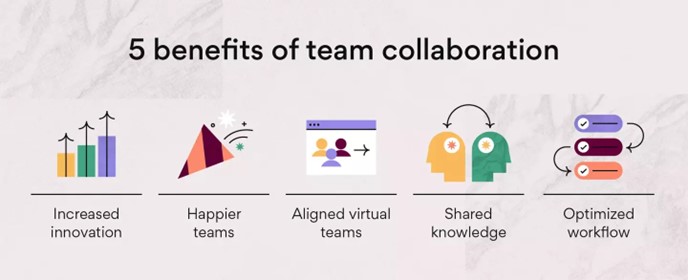
To overcome these challenges and foster collaboration, leaders can implement several strategies. Firstly, promoting honesty and openness by sharing company objectives and difficulties can create alignment and encourage employees to work collaboratively towards common goals. Secondly, creating a culture that values idea exchange without bias and encourages employees to contribute their ideas, regardless of their size or nature, can unlock creativity and fruitful collaborations. Thirdly, encouraging cooperation between departments and diverse teams can lead to the generation of innovative ideas by combining different perspectives, personalities, and skill sets. Fourthly, leaders should take an active role in fostering collaboration by adopting an open-door policy, working alongside employees, and demonstrating collaboration across different hierarchies. Fifthly, providing encouragement, recognizing individual and group contributions, and offering rewards can motivate employees to continue collaborating and contribute to a positive work environment. Lastly, leveraging appropriate technologies, such as cloud-based collaboration tools, can facilitate communication, task completion, and idea sharing among team members.
In summary, fostering collaboration in the workplace is essential for unlocking the potential of large, diverse teams. By promoting honesty, creating a culture of idea exchange, encouraging departmental cooperation, leading by example, providing incentives, and leveraging technology, companies can overcome the challenges associated with collaboration and create a collaborative and innovative work environment.

Chapter 6: Attracting Talent
Attracting the best employees to a company requires the development of a focused employee value proposition (EVP) that aligns with the company’s culture and appeals to top performers. An effective EVP articulates the balance of rewards and benefits that employees receive in return for their contributions. Companies can enhance their EVP by understanding their best performers and translating their characteristics into messages that attract similar high-talent individuals. Connecting these applicant messages to the company’s culture helps ensure a good fit and engagement. Furthermore, differentiation from competitors is crucial, and companies should analyze their employment brand’s effectiveness and authenticity to capitalize on unique qualities. By highlighting future-oriented aspects of the job, such as opportunities for growth and advancement, companies can attract individuals who are likely to have successful careers.
Institutional moments and interpersonal moments contribute to building or breaking a company’s culture. Institutional moments occur throughout the employee life cycle, such as onboarding, performance management, promotion, and leadership development. Four key populations play a role in shaping these institutional moments:
1. Leadership: They create the vision for the culture, prioritize it, and set an example for others to follow. They also provide resources and accountability for culture-building initiatives.
2. Supporting teams: HR, finance, accounting, legal, and analytics teams develop policies, procedures, and programs to bring the culture to life. They distribute best practices, provide education, and measure outcomes.
3. Everyday champions: These individuals are influencers and change agents who encourage others, advocate for culture initiatives, and serve as vocal ambassadors for the company’s brand.
4. Management: Managers directly interact with employees throughout the employee life cycle and significantly impact their engagement and culture experience.
For successful culture-building, these four groups must coordinate and align their efforts. Leadership enables behavior change, supporting teams facilitate the implementation of culture initiatives, champions activate the culture on the ground, and managers deliver the culture experience to employees. When one population fails, the success of others is limited.
The coordination of these populations is evident in institutional moments like onboarding, performance management, promotion, and leadership development. Examples include offering a “test drive” policy during onboarding to ensure the right fit, encouraging managers to become certified strengths coaches for performance development, providing a “new house” bonus for employee loyalty during promotion, and offering unlimited tuition reimbursement to emphasize learning and development in leadership development.
These institutional moments create a tangible culture that employees can commit to and bring the company’s values to life. Ultimately, it is the responsibility of every individual in the organization to choose to engage with and belong to the company’s culture.
In summary, attracting the best employees requires a well-defined EVP that appeals to top performers and aligns with the company’s culture. Institutional moments created by leadership, support functions, champions, and managers play a crucial role in building a strong culture that fosters employee engagement and a sense of belonging.

Chapter 7: Positive Environment
Creating a positive work environment is crucial for human resources (HR) directors in order to manage employees effectively and achieve organizational goals. By implementing strategies to boost employee happiness, HR directors can address communication, turnover, productivity, and profitability issues. A positive work environment not only improves the employees’ experience but also contributes to the overall success of the company.
A positive work environment is characterized by clear communication, positive reinforcement, compassionate team members, growth opportunities, positive thinking, and a good work-life balance. Effective communication, including asking questions, providing feedback, and brainstorming ideas, fosters healthy relationships and enhances the quality of work. Positive reinforcement, such as praising employees and offering tangible benefits like pay raises or bonuses, creates a supportive work environment. Maintaining empathy, respect, and understanding among team members promotes collaboration and makes employees feel valued. Encouraging individual growth and skill development empowers employees, boosts their motivation, and enhances productivity. Promoting a positive mindset helps employees overcome challenges with optimism. Finally, emphasizing a healthy work-life balance allows team members to find fulfillment both inside and outside of work.
Two common types of positive work environments are the team-based work environment and the independent work environment. In a team-based work environment, collaboration is encouraged, and projects are structured to incorporate teamwork, fostering bonds and improving teamwork skills. On the other hand, an independent work environment allows employees to work separately, giving them more control over their work and the opportunity to develop individual skills. Some workplaces may incorporate elements from both environments, assigning projects that require individual work as well as team collaboration.
Implementing steps to foster a positive work environment offers several benefits. Firstly, it increases productivity by 12% as happy employees are motivated to complete tasks efficiently and engage with others on the team. Secondly, a positive workplace improves employee engagement, which leads to 21% more profitability for companies. Low engagement can result in the loss of valuable employees and negatively impact the bottom line, costing companies approximately $550 billion annually in the U.S. alone. Thirdly, a positive work environment promotes collaboration, allowing team members to support and encourage each other, leading to improved relationships and increased innovation. Fourthly, it enhances employee retention by creating a workplace where employees feel appreciated, respected, and understood. High turnover rates can be costly, impact morale, and waste resources. Finally, a positive work environment supports employees’ wellbeing by empowering them to manage stress, avoid burnout, and maintain a healthy work-life balance.
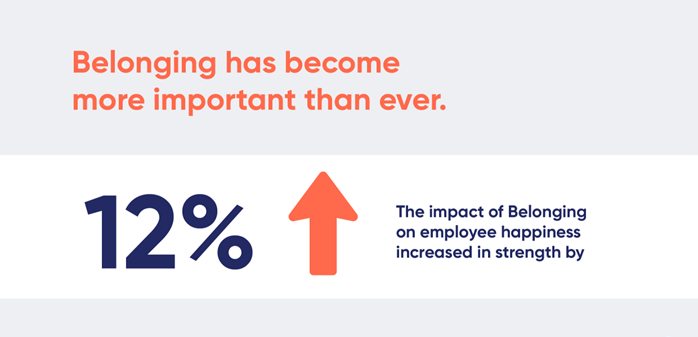
To create a positive work environment, HR directors can start small and gradually implement changes. Welcoming new hires with a warm introduction and providing a tour can create a positive first impression. Encouraging connection and collaboration among employees fosters a sense of teamwork. Backing up organizational values with actions demonstrates their importance and builds trust. Prioritizing diversity and inclusion creates a welcoming and forward-thinking company culture. Regular check-ins with team members show care and support for their wellbeing, leading to increased productivity. Additionally, optimizing the physical workspace by considering natural lighting, comfortable furniture, and collaborative areas can positively impact employees’ moods and productivity.
By focusing on creating a positive work environment, HR directors can enhance employee satisfaction, improve performance, and contribute to the success of the organization.

Chapter 8: Customer Experience
Culture plays a vital role in customer centricity, even though it is often overlooked. Employees are the ones who interact with customers directly, understand their concerns, and witness what delights them. Therefore, creating a healthy organizational environment directly impacts customers. Research shows that healthy companies outperform unhealthy ones by a factor of three, and organizations that prioritize culture increase their odds of a successful transformation by 30 to 79 percent. Customer-centric organizations exhibit behaviors that distinguish them from those with lower net promoter scores (NPS).
Culture is not a one-size-fits-all formula but varies based on strategic goals and industry. However, customer-centric organizations have common behaviors. Companies that fail to prioritize employees in the customer experience equation tend to rely on structures, metrics, and feedback mechanisms, which can hinder employee performance and fail to provide a high-quality experience. In contrast, successful customer-centric companies foster open and transparent communication, have supportive leaders who challenge their teams to think differently, and empower employees to make decisions. These organizations create an environment where employees have a say in matters that concern them, ultimately leading to better customer experiences.
Building a customer-centric culture requires a three-stage process: discover, design, and deliver. In the discover stage, organizations identify behaviors that support or impede customer centricity and root causes for negative behaviors. In the design stage, they develop an enterprise-wide effort to reinforce the desired culture and role model it through major business initiatives. For example, some companies create customer-experience teams and embed customer-experience metrics to reward desired actions and behaviors. Finally, in the deliver stage, organizations adjust the work environment, create opportunities for employees to overcome barriers, and ensure top-level commitment to the change.
Companies that prioritize individual responsibility for customer service can improve customer satisfaction, enhance organizational health, and achieve sustainable results. To initiate this transformation, organizations need to assess their current culture, define their ideal culture, and identify cultural barriers or mindsets that need to change.
In summary, customer-centric excellence requires organizations to prioritize culture and employee engagement. By fostering a people-first culture, companies can create a competitive advantage, drive performance, and deliver exceptional customer experiences. This involves aligning organizational purpose, structure, products, and services with customer needs and empowering employees to make a difference. Building a customer-centric culture involves a rigorous process of discovery, design, and delivery, where behaviors and mindsets are addressed and transformed to achieve lasting success.

Chapter 9: Differentiating from Competitors
Organizational identity and culture play a crucial role in providing businesses with a competitive advantage and setting them apart from their competitors. This summary will highlight the significance of organizational identity and culture in shaping brand image, attracting and retaining top talent, enhancing customer loyalty, and driving innovation and adaptability.
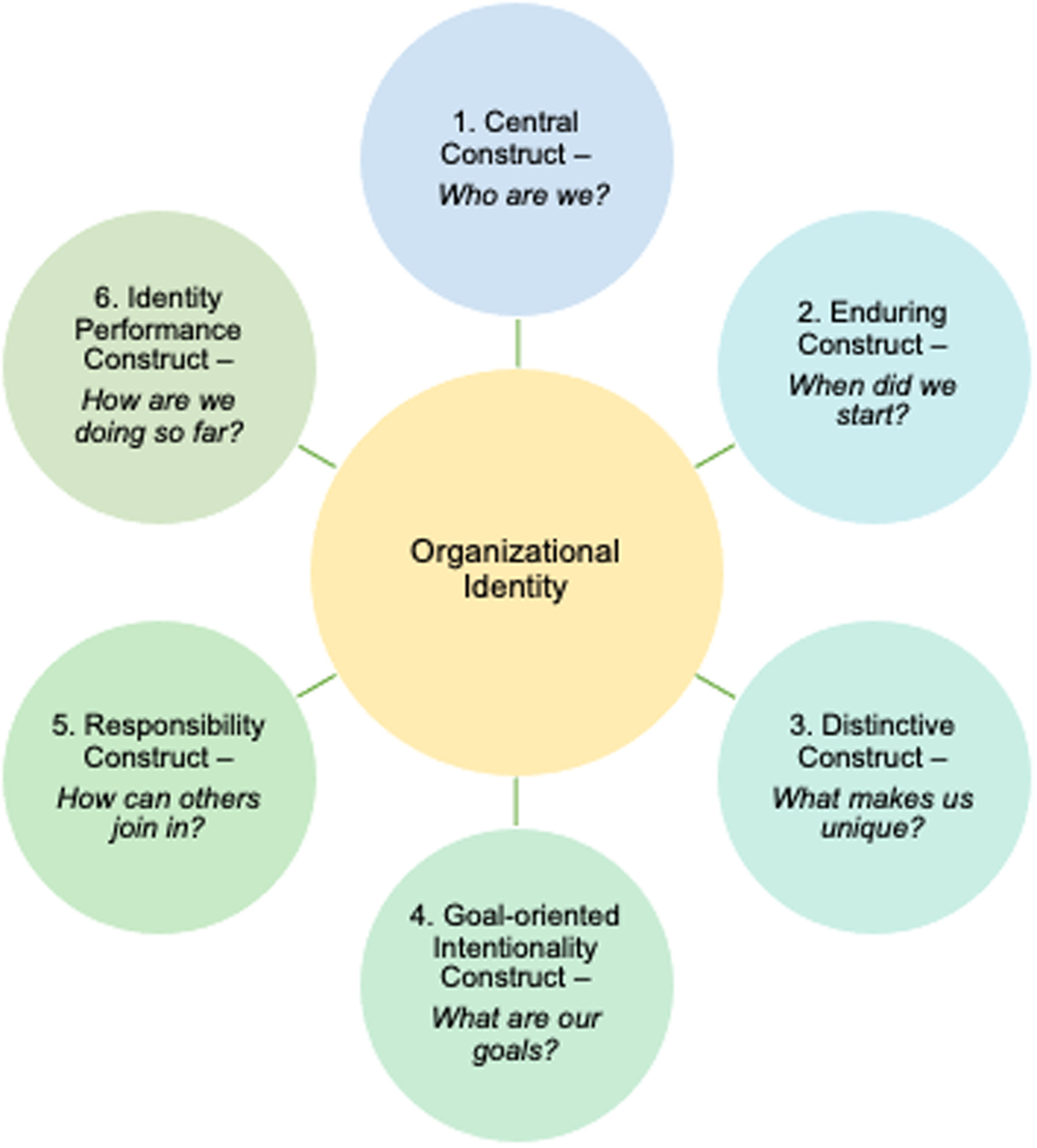
Firstly, a strong organizational identity and culture contribute to shaping brand image and reputation. When a company clearly communicates its values, purpose, and mission, it establishes a distinct brand positioning that resonates with customers. By consistently aligning its actions and behaviors with its declared values, an organization builds trust and credibility, creating a positive brand image that differentiates it from competitors. Customers are more likely to connect with brands that share their values, leading to stronger loyalty and advocacy.
Secondly, a unique organizational identity and culture are instrumental in attracting and retaining top talent. A well-defined identity that is compelling and distinctive attracts individuals seeking alignment with their own values and aspirations. Talented professionals are more inclined to choose organizations that provide a sense of purpose beyond monetary rewards. Additionally, a strong organizational culture that fosters employee development, engagement, and inclusivity creates a positive work environment that attracts and retains high-performing employees. This, in turn, leads to higher productivity, job satisfaction, and reduced turnover rates.
Thirdly, a distinct organizational identity and culture significantly enhance customer loyalty. When customers connect with a company’s values and purpose, they develop an emotional attachment and affinity towards the brand. By consistently aligning products, services, and the overall customer experience with its identity and culture, a business can create a unique value proposition that resonates with its target audience. Furthermore, a strong organizational culture that emphasizes customer-centricity and responsiveness enables employees to provide exceptional customer service, further strengthening customer loyalty and advocacy.
Moreover, a unique organizational identity and culture drive innovation and adaptability. Organizations with a culture that encourages experimentation, creativity, and a growth mindset foster an environment conducive to innovation. When employees feel empowered to take risks and share ideas, they are more likely to contribute innovative solutions to challenges. Furthermore, a strong culture built on open communication, collaboration, and continuous learning enables organizations to adapt swiftly to changing market dynamics, technological advancements, and customer preferences. This adaptability provides a competitive advantage, allowing businesses to remain relevant and thrive in a rapidly changing market.
In conclusion, a unique organizational identity and culture can serve as a powerful differentiator, providing businesses with a competitive advantage in the market. By shaping brand image, attracting and retaining top talent, enhancing customer loyalty, and driving innovation and adaptability, a strong organizational identity and culture contribute to long-term success. Organizations that invest in defining and cultivating their identity and culture are better equipped to differentiate themselves and build lasting success in a competitive marketplace.

Chapter 10: Managing Change
In today’s rapidly evolving business environment, organizations must navigate change and adaptability to remain competitive. Change management is crucial in this process, and a strong organizational identity and culture are key factors in facilitating successful change management and promoting adaptability. This article explores the importance of organizational identity and culture in driving change management and adaptability in a dynamic business environment, focusing on their impact on change readiness, employee engagement, communication, and innovation.
To understand the role of organizational identity and culture, it is necessary to define these concepts. Organizational identity encompasses the unique characteristics of a company, such as its values, purpose, mission, and vision, which guide its actions and decisions. Organizational culture, on the other hand, represents the shared beliefs, values, norms, behaviors, and practices that shape employees’ mindset and interactions within the organization.
A strong organizational identity and culture contribute to change readiness, the organization’s ability to effectively respond and adapt to change. A well-defined and compelling identity provides a sense of purpose and direction, enabling employees to embrace change as an opportunity rather than a threat. Additionally, a culture that encourages continuous learning, flexibility, and agility prepares employees to adapt to new situations. By fostering change readiness, a strong organizational identity and culture lay the foundation for successful change management and adaptability.
Employee engagement is crucial during change as it influences their commitment and willingness to adapt. A strong organizational identity and culture significantly impact employee engagement. When employees identify with the organization’s values and vision, they are more likely to actively participate in the change process. An organizational culture that promotes open communication, collaboration, and involvement empowers employees and makes them feel valued, leading to higher engagement levels. Furthermore, a culture that embraces transparency and trust creates an environment where employees are more likely to embrace change and contribute their ideas. Engaging employees through a strong organizational identity and culture enhances their commitment to change and supports successful implementation.
Clear and effective communication is essential in change management. A strong organizational identity and culture facilitate effective communication during change initiatives. A well-defined identity provides a clear framework for communicating the reasons and objectives behind the change. Moreover, a culture that values open and transparent communication creates an environment where employees feel comfortable sharing their concerns and feedback, reducing resistance to change. Effective communication, supported by a strong organizational identity and culture, ensures that messages are conveyed clearly, facilitating understanding and alignment with the desired change.
Innovation and adaptability are crucial in a dynamic business environment. A strong organizational identity and culture promote innovation and adaptability by providing a supportive environment for change and experimentation. When an organization’s identity and culture encourage creativity, risk-taking, and a growth mindset, employees are more likely to embrace new ideas. A culture that supports learning, collaboration, and knowledge-sharing enables employees to adapt and seek innovative solutions. By fostering innovation and adaptability, a strong organizational identity and culture help organizations thrive amidst change.

Chapter 11: Ethical Framework
An ethical framework in a company refers to a set of principles, values, and guidelines that guide behavior and decision-making. It consists of core values, a code of conduct, an ethical decision-making process, training and education, ethical leadership, and compliance mechanisms. Establishing an ethical framework is crucial for several reasons and brings numerous benefits to a company.
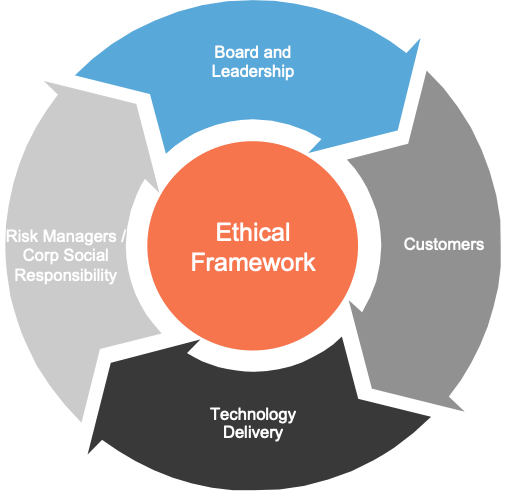
Firstly, an ethical framework provides clarity and guidance, helping employees understand what is expected of them in terms of ethical behavior. It reduces ambiguity, promotes consistency, and guides decision-making processes across the organization. This fosters a culture of integrity, creating a positive work environment built on trust and respect.
Secondly, operating with integrity enhances a company’s reputation and builds trust among stakeholders. When a company demonstrates a commitment to ethical conduct, it is more likely to attract customers, employees, investors, and business partners who align with its values. This positive reputation can lead to increased loyalty, positive brand perception, and long-term sustainability.
Thirdly, an ethical framework helps identify and address potential ethical risks and compliance issues proactively. By setting clear guidelines, it reduces the likelihood of misconduct or legal violations. This protects the company from reputational damage, legal liabilities, and financial losses.
Fourthly, a strong ethical framework attracts and retains top talent. Employees seek organizations that prioritize ethical behavior and align with their values. Demonstrating a commitment to ethical standards makes the company an attractive workplace for individuals who value integrity and ethical conduct.
Furthermore, an ethical framework improves decision-making and problem-solving. It provides a structured approach to decision-making, encouraging employees to consider ethical implications and make choices aligned with the company’s values. This promotes sound judgment and enhances problem-solving skills within the organization.
Additionally, an ethical framework engages stakeholders and builds relationships. Ethical behavior fosters trust, transparency, and open communication with customers, suppliers, investors, and the community. This positive engagement can lead to collaboration, partnerships, and mutually beneficial relationships that contribute to the company’s success.
In summary, establishing an ethical framework is essential for setting expectations, fostering a culture of integrity, protecting reputation, mitigating risks, attracting talent, improving decision-making, and building strong stakeholder relationships. It ultimately contributes to the long-term success and sustainability of the company.

Chapter 12: Measuring Identity
Companies often rely on large and diverse teams of specialists to tackle complex projects and initiatives. These teams are typically assembled quickly and work digitally, communicating online and across great distances. However, an interesting paradox arises from a recent study of team dynamics in international corporations: the very traits that make these teams necessary for success can also hinder their ability to accomplish their goals. Large, virtual, diverse, and highly educated teams are less likely to openly exchange knowledge, learn from one another, accommodate unforeseen challenges, assist one another, or align their goals. This lack of collaboration can impede their effectiveness.
The study reveals that team size plays a significant role in collaboration. Over the past decade, teams have grown significantly larger, with some complex projects involving 100 or more members. However, collaboration tends to decline as team size exceeds 20 members. While large teams can still cooperate effectively, it requires careful investment in creating a collaborative environment within the organization.
Virtual collaboration also poses challenges. Many teams now include members dispersed across multiple locations, sometimes spanning the globe. However, as teams become more virtual, cooperation tends to decrease unless the organization has taken steps to foster a collaborative culture.
Diversity is another factor that both benefits and hinders collaboration. Complex tasks often require input and knowledge from individuals with diverse backgrounds and perspectives. However, when team members perceive themselves as dissimilar, collaboration becomes more difficult. Differences in nationality, tenure, age, and educational attainment can hinder cooperation. Furthermore, teams with a higher percentage of strangers and a wider range of backgrounds and experiences are less likely to exchange knowledge or engage in other cooperative activities.
Interestingly, the study finds that the more educated team members are, the more difficult collaboration becomes. Teams with a high number of experts tend to experience more conflict and deadlock.
To address these challenges and improve collaboration within organizations, leaders can implement several strategies. Firstly, promoting honesty and openness by sharing company objectives and challenges can foster loyalty and productivity. Transparency enables alignment among employees and strategic goals, encouraging collaboration toward shared objectives. Secondly, creating a culture that values idea exchange without bias allows employees to contribute their thoughts freely, regardless of their magnitude or unconventional nature. This openness cultivates creativity and fruitful collaborations. Encouraging cooperation between departments, especially through cross-functional teams, enhances the generation of innovative ideas by combining diverse goals, personalities, and skill sets.
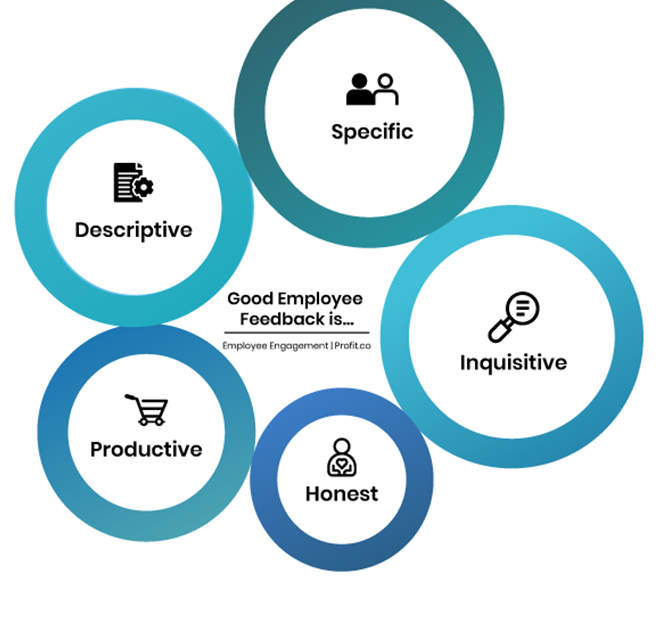
Leaders should take an active role in fostering collaboration by adopting an open-door policy, working alongside employees, and promoting collaboration across different hierarchies. By leading by example, managers can inspire their teams to follow suit, enhancing overall productivity. Additionally, providing encouragement, recognizing individual and group contributions, and offering rewards help maintain high levels of collaboration. Constructive feedback is crucial for progress, but it should be balanced with acknowledgment of employees’ efforts and value.
Lastly, leveraging appropriate technologies is essential for promoting collaboration. Implementing cloud-based collaboration tools enables rapid and seamless participation and idea sharing among team members. These technologies streamline tasks, freeing up more time for collaboration and creativity.
Curriculum
Culture Invigoration – Workshop 1 – Corporate ID
- Defining Identity
- Strong Culture
- Cultural Alignment
- Building Engagement
- Enhancing Collaboration
- Attracting Talent
- Positive Environment
- Customer Experience
- Differentiating from Competitors
- Managing Change
- Ethical Framework
- Measuring Identity
Distance Learning
Introduction
Welcome to Appleton Greene and thank you for enrolling on the Culture Invigoration corporate training program. You will be learning through our unique facilitation via distance-learning method, which will enable you to practically implement everything that you learn academically. The methods and materials used in your program have been designed and developed to ensure that you derive the maximum benefits and enjoyment possible. We hope that you find the program challenging and fun to do. However, if you have never been a distance-learner before, you may be experiencing some trepidation at the task before you. So we will get you started by giving you some basic information and guidance on how you can make the best use of the modules, how you should manage the materials and what you should be doing as you work through them. This guide is designed to point you in the right direction and help you to become an effective distance-learner. Take a few hours or so to study this guide and your guide to tutorial support for students, while making notes, before you start to study in earnest.
Study environment
You will need to locate a quiet and private place to study, preferably a room where you can easily be isolated from external disturbances or distractions. Make sure the room is well-lit and incorporates a relaxed, pleasant feel. If you can spoil yourself within your study environment, you will have much more of a chance to ensure that you are always in the right frame of mind when you do devote time to study. For example, a nice fire, the ability to play soft soothing background music, soft but effective lighting, perhaps a nice view if possible and a good size desk with a comfortable chair. Make sure that your family know when you are studying and understand your study rules. Your study environment is very important. The ideal situation, if at all possible, is to have a separate study, which can be devoted to you. If this is not possible then you will need to pay a lot more attention to developing and managing your study schedule, because it will affect other people as well as yourself. The better your study environment, the more productive you will be.
Study tools & rules
Try and make sure that your study tools are sufficient and in good working order. You will need to have access to a computer, scanner and printer, with access to the internet. You will need a very comfortable chair, which supports your lower back, and you will need a good filing system. It can be very frustrating if you are spending valuable study time trying to fix study tools that are unreliable, or unsuitable for the task. Make sure that your study tools are up to date. You will also need to consider some study rules. Some of these rules will apply to you and will be intended to help you to be more disciplined about when and how you study. This distance-learning guide will help you and after you have read it you can put some thought into what your study rules should be. You will also need to negotiate some study rules for your family, friends or anyone who lives with you. They too will need to be disciplined in order to ensure that they can support you while you study. It is important to ensure that your family and friends are an integral part of your study team. Having their support and encouragement can prove to be a crucial contribution to your successful completion of the program. Involve them in as much as you can.
Successful distance-learning
Distance-learners are freed from the necessity of attending regular classes or workshops, since they can study in their own way, at their own pace and for their own purposes. But unlike traditional internal training courses, it is the student’s responsibility, with a distance-learning program, to ensure that they manage their own study contribution. This requires strong self-discipline and self-motivation skills and there must be a clear will to succeed. Those students who are used to managing themselves, are good at managing others and who enjoy working in isolation, are more likely to be good distance-learners. It is also important to be aware of the main reasons why you are studying and of the main objectives that you are hoping to achieve as a result. You will need to remind yourself of these objectives at times when you need to motivate yourself. Never lose sight of your long-term goals and your short-term objectives. There is nobody available here to pamper you, or to look after you, or to spoon-feed you with information, so you will need to find ways to encourage and appreciate yourself while you are studying. Make sure that you chart your study progress, so that you can be sure of your achievements and re-evaluate your goals and objectives regularly.
Self-assessment
Appleton Greene training programs are in all cases post-graduate programs. Consequently, you should already have obtained a business-related degree and be an experienced learner. You should therefore already be aware of your study strengths and weaknesses. For example, which time of the day are you at your most productive? Are you a lark or an owl? What study methods do you respond to the most? Are you a consistent learner? How do you discipline yourself? How do you ensure that you enjoy yourself while studying? It is important to understand yourself as a learner and so some self-assessment early on will be necessary if you are to apply yourself correctly. Perform a SWOT analysis on yourself as a student. List your internal strengths and weaknesses as a student and your external opportunities and threats. This will help you later on when you are creating a study plan. You can then incorporate features within your study plan that can ensure that you are playing to your strengths, while compensating for your weaknesses. You can also ensure that you make the most of your opportunities, while avoiding the potential threats to your success.
Accepting responsibility as a student
Training programs invariably require a significant investment, both in terms of what they cost and in the time that you need to contribute to study and the responsibility for successful completion of training programs rests entirely with the student. This is never more apparent than when a student is learning via distance-learning. Accepting responsibility as a student is an important step towards ensuring that you can successfully complete your training program. It is easy to instantly blame other people or factors when things go wrong. But the fact of the matter is that if a failure is your failure, then you have the power to do something about it, it is entirely in your own hands. If it is always someone else’s failure, then you are powerless to do anything about it. All students study in entirely different ways, this is because we are all individuals and what is right for one student, is not necessarily right for another. In order to succeed, you will have to accept personal responsibility for finding a way to plan, implement and manage a personal study plan that works for you. If you do not succeed, you only have yourself to blame.
Planning
By far the most critical contribution to stress, is the feeling of not being in control. In the absence of planning we tend to be reactive and can stumble from pillar to post in the hope that things will turn out fine in the end. Invariably they don’t! In order to be in control, we need to have firm ideas about how and when we want to do things. We also need to consider as many possible eventualities as we can, so that we are prepared for them when they happen. Prescriptive Change, is far easier to manage and control, than Emergent Change. The same is true with distance-learning. It is much easier and much more enjoyable, if you feel that you are in control and that things are going to plan. Even when things do go wrong, you are prepared for them and can act accordingly without any unnecessary stress. It is important therefore that you do take time to plan your studies properly.
Management
Once you have developed a clear study plan, it is of equal importance to ensure that you manage the implementation of it. Most of us usually enjoy planning, but it is usually during implementation when things go wrong. Targets are not met and we do not understand why. Sometimes we do not even know if targets are being met. It is not enough for us to conclude that the study plan just failed. If it is failing, you will need to understand what you can do about it. Similarly if your study plan is succeeding, it is still important to understand why, so that you can improve upon your success. You therefore need to have guidelines for self-assessment so that you can be consistent with performance improvement throughout the program. If you manage things correctly, then your performance should constantly improve throughout the program.
Study objectives & tasks
The first place to start is developing your program objectives. These should feature your reasons for undertaking the training program in order of priority. Keep them succinct and to the point in order to avoid confusion. Do not just write the first things that come into your head because they are likely to be too similar to each other. Make a list of possible departmental headings, such as: Customer Service; E-business; Finance; Globalization; Human Resources; Technology; Legal; Management; Marketing and Production. Then brainstorm for ideas by listing as many things that you want to achieve under each heading and later re-arrange these things in order of priority. Finally, select the top item from each department heading and choose these as your program objectives. Try and restrict yourself to five because it will enable you to focus clearly. It is likely that the other things that you listed will be achieved if each of the top objectives are achieved. If this does not prove to be the case, then simply work through the process again.
Study forecast
As a guide, the Appleton Greene Culture Invigoration corporate training program should take 12-18 months to complete, depending upon your availability and current commitments. The reason why there is such a variance in time estimates is because every student is an individual, with differing productivity levels and different commitments. These differentiations are then exaggerated by the fact that this is a distance-learning program, which incorporates the practical integration of academic theory as an as a part of the training program. Consequently all of the project studies are real, which means that important decisions and compromises need to be made. You will want to get things right and will need to be patient with your expectations in order to ensure that they are. We would always recommend that you are prudent with your own task and time forecasts, but you still need to develop them and have a clear indication of what are realistic expectations in your case. With reference to your time planning: consider the time that you can realistically dedicate towards study with the program every week; calculate how long it should take you to complete the program, using the guidelines featured here; then break the program down into logical modules and allocate a suitable proportion of time to each of them, these will be your milestones; you can create a time plan by using a spreadsheet on your computer, or a personal organizer such as MS Outlook, you could also use a financial forecasting software; break your time forecasts down into manageable chunks of time, the more specific you can be, the more productive and accurate your time management will be; finally, use formulas where possible to do your time calculations for you, because this will help later on when your forecasts need to change in line with actual performance. With reference to your task planning: refer to your list of tasks that need to be undertaken in order to achieve your program objectives; with reference to your time plan, calculate when each task should be implemented; remember that you are not estimating when your objectives will be achieved, but when you will need to focus upon implementing the corresponding tasks; you also need to ensure that each task is implemented in conjunction with the associated training modules which are relevant; then break each single task down into a list of specific to do’s, say approximately ten to do’s for each task and enter these into your study plan; once again you could use MS Outlook to incorporate both your time and task planning and this could constitute your study plan; you could also use a project management software like MS Project. You should now have a clear and realistic forecast detailing when you can expect to be able to do something about undertaking the tasks to achieve your program objectives.
Performance management
It is one thing to develop your study forecast, it is quite another to monitor your progress. Ultimately it is less important whether you achieve your original study forecast and more important that you update it so that it constantly remains realistic in line with your performance. As you begin to work through the program, you will begin to have more of an idea about your own personal performance and productivity levels as a distance-learner. Once you have completed your first study module, you should re-evaluate your study forecast for both time and tasks, so that they reflect your actual performance level achieved. In order to achieve this you must first time yourself while training by using an alarm clock. Set the alarm for hourly intervals and make a note of how far you have come within that time. You can then make a note of your actual performance on your study plan and then compare your performance against your forecast. Then consider the reasons that have contributed towards your performance level, whether they are positive or negative and make a considered adjustment to your future forecasts as a result. Given time, you should start achieving your forecasts regularly.
With reference to time management: time yourself while you are studying and make a note of the actual time taken in your study plan; consider your successes with time-efficiency and the reasons for the success in each case and take this into consideration when reviewing future time planning; consider your failures with time-efficiency and the reasons for the failures in each case and take this into consideration when reviewing future time planning; re-evaluate your study forecast in relation to time planning for the remainder of your training program to ensure that you continue to be realistic about your time expectations. You need to be consistent with your time management, otherwise you will never complete your studies. This will either be because you are not contributing enough time to your studies, or you will become less efficient with the time that you do allocate to your studies. Remember, if you are not in control of your studies, they can just become yet another cause of stress for you.
With reference to your task management: time yourself while you are studying and make a note of the actual tasks that you have undertaken in your study plan; consider your successes with task-efficiency and the reasons for the success in each case; take this into consideration when reviewing future task planning; consider your failures with task-efficiency and the reasons for the failures in each case and take this into consideration when reviewing future task planning; re-evaluate your study forecast in relation to task planning for the remainder of your training program to ensure that you continue to be realistic about your task expectations. You need to be consistent with your task management, otherwise you will never know whether you are achieving your program objectives or not.
Keeping in touch
You will have access to qualified and experienced professors and tutors who are responsible for providing tutorial support for your particular training program. So don’t be shy about letting them know how you are getting on. We keep electronic records of all tutorial support emails so that professors and tutors can review previous correspondence before considering an individual response. It also means that there is a record of all communications between you and your professors and tutors and this helps to avoid any unnecessary duplication, misunderstanding, or misinterpretation. If you have a problem relating to the program, share it with them via email. It is likely that they have come across the same problem before and are usually able to make helpful suggestions and steer you in the right direction. To learn more about when and how to use tutorial support, please refer to the Tutorial Support section of this student information guide. This will help you to ensure that you are making the most of tutorial support that is available to you and will ultimately contribute towards your success and enjoyment with your training program.
Work colleagues and family
You should certainly discuss your program study progress with your colleagues, friends and your family. Appleton Greene training programs are very practical. They require you to seek information from other people, to plan, develop and implement processes with other people and to achieve feedback from other people in relation to viability and productivity. You will therefore have plenty of opportunities to test your ideas and enlist the views of others. People tend to be sympathetic towards distance-learners, so don’t bottle it all up in yourself. Get out there and share it! It is also likely that your family and colleagues are going to benefit from your labors with the program, so they are likely to be much more interested in being involved than you might think. Be bold about delegating work to those who might benefit themselves. This is a great way to achieve understanding and commitment from people who you may later rely upon for process implementation. Share your experiences with your friends and family.
Making it relevant
The key to successful learning is to make it relevant to your own individual circumstances. At all times you should be trying to make bridges between the content of the program and your own situation. Whether you achieve this through quiet reflection or through interactive discussion with your colleagues, client partners or your family, remember that it is the most important and rewarding aspect of translating your studies into real self-improvement. You should be clear about how you want the program to benefit you. This involves setting clear study objectives in relation to the content of the course in terms of understanding, concepts, completing research or reviewing activities and relating the content of the modules to your own situation. Your objectives may understandably change as you work through the program, in which case you should enter the revised objectives on your study plan so that you have a permanent reminder of what you are trying to achieve, when and why.
Distance-learning check-list
Prepare your study environment, your study tools and rules.
Undertake detailed self-assessment in terms of your ability as a learner.
Create a format for your study plan.
Consider your study objectives and tasks.
Create a study forecast.
Assess your study performance.
Re-evaluate your study forecast.
Be consistent when managing your study plan.
Use your Appleton Greene Certified Learning Provider (CLP) for tutorial support.
Make sure you keep in touch with those around you.

Tutorial Support
Programs
Appleton Greene uses standard and bespoke corporate training programs as vessels to transfer business process improvement knowledge into the heart of our clients’ organizations. Each individual program focuses upon the implementation of a specific business process, which enables clients to easily quantify their return on investment. There are hundreds of established Appleton Greene corporate training products now available to clients within customer services, e-business, finance, globalization, human resources, information technology, legal, management, marketing and production. It does not matter whether a client’s employees are located within one office, or an unlimited number of international offices, we can still bring them together to learn and implement specific business processes collectively. Our approach to global localization enables us to provide clients with a truly international service with that all important personal touch. Appleton Greene corporate training programs can be provided virtually or locally and they are all unique in that they individually focus upon a specific business function. They are implemented over a sustainable period of time and professional support is consistently provided by qualified learning providers and specialist consultants.
Support available
You will have a designated Certified Learning Provider (CLP) and an Accredited Consultant and we encourage you to communicate with them as much as possible. In all cases tutorial support is provided online because we can then keep a record of all communications to ensure that tutorial support remains consistent. You would also be forwarding your work to the tutorial support unit for evaluation and assessment. You will receive individual feedback on all of the work that you undertake on a one-to-one basis, together with specific recommendations for anything that may need to be changed in order to achieve a pass with merit or a pass with distinction and you then have as many opportunities as you may need to re-submit project studies until they meet with the required standard. Consequently the only reason that you should really fail (CLP) is if you do not do the work. It makes no difference to us whether a student takes 12 months or 18 months to complete the program, what matters is that in all cases the same quality standard will have been achieved.
Support Process
Please forward all of your future emails to the designated (CLP) Tutorial Support Unit email address that has been provided and please do not duplicate or copy your emails to other AGC email accounts as this will just cause unnecessary administration. Please note that emails are always answered as quickly as possible but you will need to allow a period of up to 20 business days for responses to general tutorial support emails during busy periods, because emails are answered strictly within the order in which they are received. You will also need to allow a period of up to 30 business days for the evaluation and assessment of project studies. This does not include weekends or public holidays. Please therefore kindly allow for this within your time planning. All communications are managed online via email because it enables tutorial service support managers to review other communications which have been received before responding and it ensures that there is a copy of all communications retained on file for future reference. All communications will be stored within your personal (CLP) study file here at Appleton Greene throughout your designated study period. If you need any assistance or clarification at any time, please do not hesitate to contact us by forwarding an email and remember that we are here to help. If you have any questions, please list and number your questions succinctly and you can then be sure of receiving specific answers to each and every query.
Time Management
It takes approximately 1 Year to complete the Culture Invigoration corporate training program, incorporating 12 x 6-hour monthly workshops. Each student will also need to contribute approximately 4 hours per week over 1 Year of their personal time. Students can study from home or work at their own pace and are responsible for managing their own study plan. There are no formal examinations and students are evaluated and assessed based upon their project study submissions, together with the quality of their internal analysis and supporting documents. They can contribute more time towards study when they have the time to do so and can contribute less time when they are busy. All students tend to be in full time employment while studying and the Culture Invigoration program is purposely designed to accommodate this, so there is plenty of flexibility in terms of time management. It makes no difference to us at Appleton Greene, whether individuals take 12-18 months to complete this program. What matters is that in all cases the same standard of quality will have been achieved with the standard and bespoke programs that have been developed.
Distance Learning Guide
The distance learning guide should be your first port of call when starting your training program. It will help you when you are planning how and when to study, how to create the right environment and how to establish the right frame of mind. If you can lay the foundations properly during the planning stage, then it will contribute to your enjoyment and productivity while training later. The guide helps to change your lifestyle in order to accommodate time for study and to cultivate good study habits. It helps you to chart your progress so that you can measure your performance and achieve your goals. It explains the tools that you will need for study and how to make them work. It also explains how to translate academic theory into practical reality. Spend some time now working through your distance learning guide and make sure that you have firm foundations in place so that you can make the most of your distance learning program. There is no requirement for you to attend training workshops or classes at Appleton Greene offices. The entire program is undertaken online, program course manuals and project studies are administered via the Appleton Greene web site and via email, so you are able to study at your own pace and in the comfort of your own home or office as long as you have a computer and access to the internet.
How To Study
The how to study guide provides students with a clear understanding of the Appleton Greene facilitation via distance learning training methods and enables students to obtain a clear overview of the training program content. It enables students to understand the step-by-step training methods used by Appleton Greene and how course manuals are integrated with project studies. It explains the research and development that is required and the need to provide evidence and references to support your statements. It also enables students to understand precisely what will be required of them in order to achieve a pass with merit and a pass with distinction for individual project studies and provides useful guidance on how to be innovative and creative when developing your Unique Program Proposition (UPP).
Tutorial Support
Tutorial support for the Appleton Greene Culture Invigoration corporate training program is provided online either through the Appleton Greene Client Support Portal (CSP), or via email. All tutorial support requests are facilitated by a designated Program Administration Manager (PAM). They are responsible for deciding which professor or tutor is the most appropriate option relating to the support required and then the tutorial support request is forwarded onto them. Once the professor or tutor has completed the tutorial support request and answered any questions that have been asked, this communication is then returned to the student via email by the designated Program Administration Manager (PAM). This enables all tutorial support, between students, professors and tutors, to be facilitated by the designated Program Administration Manager (PAM) efficiently and securely through the email account. You will therefore need to allow a period of up to 20 business days for responses to general support queries and up to 30 business days for the evaluation and assessment of project studies, because all tutorial support requests are answered strictly within the order in which they are received. This does not include weekends or public holidays. Consequently you need to put some thought into the management of your tutorial support procedure in order to ensure that your study plan is feasible and to obtain the maximum possible benefit from tutorial support during your period of study. Please retain copies of your tutorial support emails for future reference. Please ensure that ALL of your tutorial support emails are set out using the format as suggested within your guide to tutorial support. Your tutorial support emails need to be referenced clearly to the specific part of the course manual or project study which you are working on at any given time. You also need to list and number any questions that you would like to ask, up to a maximum of five questions within each tutorial support email. Remember the more specific you can be with your questions the more specific your answers will be too and this will help you to avoid any unnecessary misunderstanding, misinterpretation, or duplication. The guide to tutorial support is intended to help you to understand how and when to use support in order to ensure that you get the most out of your training program. Appleton Greene training programs are designed to enable you to do things for yourself. They provide you with a structure or a framework and we use tutorial support to facilitate students while they practically implement what they learn. In other words, we are enabling students to do things for themselves. The benefits of distance learning via facilitation are considerable and are much more sustainable in the long-term than traditional short-term knowledge sharing programs. Consequently you should learn how and when to use tutorial support so that you can maximize the benefits from your learning experience with Appleton Greene. This guide describes the purpose of each training function and how to use them and how to use tutorial support in relation to each aspect of the training program. It also provides useful tips and guidance with regard to best practice.
Tutorial Support Tips
Students are often unsure about how and when to use tutorial support with Appleton Greene. This Tip List will help you to understand more about how to achieve the most from using tutorial support. Refer to it regularly to ensure that you are continuing to use the service properly. Tutorial support is critical to the success of your training experience, but it is important to understand when and how to use it in order to maximize the benefit that you receive. It is no coincidence that those students who succeed are those that learn how to be positive, proactive and productive when using tutorial support.
Be positive and friendly with your tutorial support emails
Remember that if you forward an email to the tutorial support unit, you are dealing with real people. “Do unto others as you would expect others to do unto you”. If you are positive, complimentary and generally friendly in your emails, you will generate a similar response in return. This will be more enjoyable, productive and rewarding for you in the long-term.
Think about the impression that you want to create
Every time that you communicate, you create an impression, which can be either positive or negative, so put some thought into the impression that you want to create. Remember that copies of all tutorial support emails are stored electronically and tutors will always refer to prior correspondence before responding to any current emails. Over a period of time, a general opinion will be arrived at in relation to your character, attitude and ability. Try to manage your own frustrations, mood swings and temperament professionally, without involving the tutorial support team. Demonstrating frustration or a lack of patience is a weakness and will be interpreted as such. The good thing about communicating in writing, is that you will have the time to consider your content carefully, you can review it and proof-read it before sending your email to Appleton Greene and this should help you to communicate more professionally, consistently and to avoid any unnecessary knee-jerk reactions to individual situations as and when they may arise. Please also remember that the CLP Tutorial Support Unit will not just be responsible for evaluating and assessing the quality of your work, they will also be responsible for providing recommendations to other learning providers and to client contacts within the Appleton Greene global client network, so do be in control of your own emotions and try to create a good impression.
Remember that quality is preferred to quantity
Please remember that when you send an email to the tutorial support team, you are not using Twitter or Text Messaging. Try not to forward an email every time that you have a thought. This will not prove to be productive either for you or for the tutorial support team. Take time to prepare your communications properly, as if you were writing a professional letter to a business colleague and make a list of queries that you are likely to have and then incorporate them within one email, say once every month, so that the tutorial support team can understand more about context, application and your methodology for study. Get yourself into a consistent routine with your tutorial support requests and use the tutorial support template provided with ALL of your emails. The (CLP) Tutorial Support Unit will not spoon-feed you with information. They need to be able to evaluate and assess your tutorial support requests carefully and professionally.
Be specific about your questions in order to receive specific answers
Try not to write essays by thinking as you are writing tutorial support emails. The tutorial support unit can be unclear about what in fact you are asking, or what you are looking to achieve. Be specific about asking questions that you want answers to. Number your questions. You will then receive specific answers to each and every question. This is the main purpose of tutorial support via email.
Keep a record of your tutorial support emails
It is important that you keep a record of all tutorial support emails that are forwarded to you. You can then refer to them when necessary and it avoids any unnecessary duplication, misunderstanding, or misinterpretation.
Individual training workshops or telephone support
Please be advised that Appleton Greene does not provide separate or individual tutorial support meetings, workshops, or provide telephone support for individual students. Appleton Greene is an equal opportunities learning and service provider and we are therefore understandably bound to treat all students equally. We cannot therefore broker special financial or study arrangements with individual students regardless of the circumstances. All tutorial support is provided online and this enables Appleton Greene to keep a record of all communications between students, professors and tutors on file for future reference, in accordance with our quality management procedure and your terms and conditions of enrolment. All tutorial support is provided online via email because it enables us to have time to consider support content carefully, it ensures that you receive a considered and detailed response to your queries. You can number questions that you would like to ask, which relate to things that you do not understand or where clarification may be required. You can then be sure of receiving specific answers to each individual query. You will also then have a record of these communications and of all tutorial support, which has been provided to you. This makes tutorial support administration more productive by avoiding any unnecessary duplication, misunderstanding, or misinterpretation.
Tutorial Support Email Format
You should use this tutorial support format if you need to request clarification or assistance while studying with your training program. Please note that ALL of your tutorial support request emails should use the same format. You should therefore set up a standard email template, which you can then use as and when you need to. Emails that are forwarded to Appleton Greene, which do not use the following format, may be rejected and returned to you by the (CLP) Program Administration Manager. A detailed response will then be forwarded to you via email usually within 20 business days of receipt for general support queries and 30 business days for the evaluation and assessment of project studies. This does not include weekends or public holidays. Your tutorial support request, together with the corresponding TSU reply, will then be saved and stored within your electronic TSU file at Appleton Greene for future reference.
Subject line of your email
Please insert: Appleton Greene (CLP) Tutorial Support Request: (Your Full Name) (Date), within the subject line of your email.
Main body of your email
Please insert:
1. Appleton Greene Certified Learning Provider (CLP) Tutorial Support Request
2. Your Full Name
3. Date of TS request
4. Preferred email address
5. Backup email address
6. Course manual page name or number (reference)
7. Project study page name or number (reference)
Subject of enquiry
Please insert a maximum of 50 words (please be succinct)
Briefly outline the subject matter of your inquiry, or what your questions relate to.
Question 1
Maximum of 50 words (please be succinct)
Maximum of 50 words (please be succinct)
Question 3
Maximum of 50 words (please be succinct)
Question 4
Maximum of 50 words (please be succinct)
Question 5
Maximum of 50 words (please be succinct)
Please note that a maximum of 5 questions is permitted with each individual tutorial support request email.
Procedure
* List the questions that you want to ask first, then re-arrange them in order of priority. Make sure that you reference them, where necessary, to the course manuals or project studies.
* Make sure that you are specific about your questions and number them. Try to plan the content within your emails to make sure that it is relevant.
* Make sure that your tutorial support emails are set out correctly, using the Tutorial Support Email Format provided here.
* Save a copy of your email and incorporate the date sent after the subject title. Keep your tutorial support emails within the same file and in date order for easy reference.
* Allow up to 20 business days for a response to general tutorial support emails and up to 30 business days for the evaluation and assessment of project studies, because detailed individual responses will be made in all cases and tutorial support emails are answered strictly within the order in which they are received.
* Emails can and do get lost. So if you have not received a reply within the appropriate time, forward another copy or a reminder to the tutorial support unit to be sure that it has been received but do not forward reminders unless the appropriate time has elapsed.
* When you receive a reply, save it immediately featuring the date of receipt after the subject heading for easy reference. In most cases the tutorial support unit replies to your questions individually, so you will have a record of the questions that you asked as well as the answers offered. With project studies however, separate emails are usually forwarded by the tutorial support unit, so do keep a record of your own original emails as well.
* Remember to be positive and friendly in your emails. You are dealing with real people who will respond to the same things that you respond to.
* Try not to repeat questions that have already been asked in previous emails. If this happens the tutorial support unit will probably just refer you to the appropriate answers that have already been provided within previous emails.
* If you lose your tutorial support email records you can write to Appleton Greene to receive a copy of your tutorial support file, but a separate administration charge may be levied for this service.

How To Study
Your Certified Learning Provider (CLP) and Accredited Consultant can help you to plan a task list for getting started so that you can be clear about your direction and your priorities in relation to your training program. It is also a good way to introduce yourself to the tutorial support team.
Planning your study environment
Your study conditions are of great importance and will have a direct effect on how much you enjoy your training program. Consider how much space you will have, whether it is comfortable and private and whether you are likely to be disturbed. The study tools and facilities at your disposal are also important to the success of your distance-learning experience. Your tutorial support unit can help with useful tips and guidance, regardless of your starting position. It is important to get this right before you start working on your training program.
Planning your program objectives
It is important that you have a clear list of study objectives, in order of priority, before you start working on your training program. Your tutorial support unit can offer assistance here to ensure that your study objectives have been afforded due consideration and priority.
Planning how and when to study
Distance-learners are freed from the necessity of attending regular classes, since they can study in their own way, at their own pace and for their own purposes. This approach is designed to let you study efficiently away from the traditional classroom environment. It is important however, that you plan how and when to study, so that you are making the most of your natural attributes, strengths and opportunities. Your tutorial support unit can offer assistance and useful tips to ensure that you are playing to your strengths.
Planning your study tasks
You should have a clear understanding of the study tasks that you should be undertaking and the priority associated with each task. These tasks should also be integrated with your program objectives. The distance learning guide and the guide to tutorial support for students should help you here, but if you need any clarification or assistance, please contact your tutorial support unit.
Planning your time
You will need to allocate specific times during your calendar when you intend to study if you are to have a realistic chance of completing your program on time. You are responsible for planning and managing your own study time, so it is important that you are successful with this. Your tutorial support unit can help you with this if your time plan is not working.
Keeping in touch
Consistency is the key here. If you communicate too frequently in short bursts, or too infrequently with no pattern, then your management ability with your studies will be questioned, both by you and by your tutorial support unit. It is obvious when a student is in control and when one is not and this will depend how able you are at sticking with your study plan. Inconsistency invariably leads to in-completion.
Charting your progress
Your tutorial support team can help you to chart your own study progress. Refer to your distance learning guide for further details.
Making it work
To succeed, all that you will need to do is apply yourself to undertaking your training program and interpreting it correctly. Success or failure lies in your hands and your hands alone, so be sure that you have a strategy for making it work. Your Certified Learning Provider (CLP) and Accredited Consultant can guide you through the process of program planning, development and implementation.
Reading methods
Interpretation is often unique to the individual but it can be improved and even quantified by implementing consistent interpretation methods. Interpretation can be affected by outside interference such as family members, TV, or the Internet, or simply by other thoughts which are demanding priority in our minds. One thing that can improve our productivity is using recognized reading methods. This helps us to focus and to be more structured when reading information for reasons of importance, rather than relaxation.
Speed reading
When reading through course manuals for the first time, subconsciously set your reading speed to be just fast enough that you cannot dwell on individual words or tables. With practice, you should be able to read an A4 sheet of paper in one minute. You will not achieve much in the way of a detailed understanding, but your brain will retain a useful overview. This overview will be important later on and will enable you to keep individual issues in perspective with a more generic picture because speed reading appeals to the memory part of the brain. Do not worry about what you do or do not remember at this stage.
Content reading
Once you have speed read everything, you can then start work in earnest. You now need to read a particular section of your course manual thoroughly, by making detailed notes while you read. This process is called Content Reading and it will help to consolidate your understanding and interpretation of the information that has been provided.
Making structured notes on the course manuals
When you are content reading, you should be making detailed notes, which are both structured and informative. Make these notes in a MS Word document on your computer, because you can then amend and update these as and when you deem it to be necessary. List your notes under three headings: 1. Interpretation – 2. Questions – 3. Tasks. The purpose of the 1st section is to clarify your interpretation by writing it down. The purpose of the 2nd section is to list any questions that the issue raises for you. The purpose of the 3rd section is to list any tasks that you should undertake as a result. Anyone who has graduated with a business-related degree should already be familiar with this process.
Organizing structured notes separately
You should then transfer your notes to a separate study notebook, preferably one that enables easy referencing, such as a MS Word Document, a MS Excel Spreadsheet, a MS Access Database, or a personal organizer on your cell phone. Transferring your notes allows you to have the opportunity of cross-checking and verifying them, which assists considerably with understanding and interpretation. You will also find that the better you are at doing this, the more chance you will have of ensuring that you achieve your study objectives.
Question your understanding
Do challenge your understanding. Explain things to yourself in your own words by writing things down.
Clarifying your understanding
If you are at all unsure, forward an email to your tutorial support unit and they will help to clarify your understanding.
Question your interpretation
Do challenge your interpretation. Qualify your interpretation by writing it down.
Clarifying your interpretation
If you are at all unsure, forward an email to your tutorial support unit and they will help to clarify your interpretation.
Qualification Requirements
The student will need to successfully complete the project study and all of the exercises relating to the Culture Invigoration corporate training program, achieving a pass with merit or distinction in each case, in order to qualify as an Accredited Culture Invigoration Specialist (APTS). All monthly workshops need to be tried and tested within your company. These project studies can be completed in your own time and at your own pace and in the comfort of your own home or office. There are no formal examinations, assessment is based upon the successful completion of the project studies. They are called project studies because, unlike case studies, these projects are not theoretical, they incorporate real program processes that need to be properly researched and developed. The project studies assist us in measuring your understanding and interpretation of the training program and enable us to assess qualification merits. All of the project studies are based entirely upon the content within the training program and they enable you to integrate what you have learnt into your corporate training practice.
Culture Invigoration – Grading Contribution
Project Study – Grading Contribution
Customer Service – 10%
E-business – 05%
Finance – 10%
Globalization – 10%
Human Resources – 10%
Information Technology – 10%
Legal – 05%
Management – 10%
Marketing – 10%
Production – 10%
Education – 05%
Logistics – 05%
TOTAL GRADING – 100%
Qualification grades
A mark of 90% = Pass with Distinction.
A mark of 75% = Pass with Merit.
A mark of less than 75% = Fail.
If you fail to achieve a mark of 75% with a project study, you will receive detailed feedback from the Certified Learning Provider (CLP) and/or Accredited Consultant, together with a list of tasks which you will need to complete, in order to ensure that your project study meets with the minimum quality standard that is required by Appleton Greene. You can then re-submit your project study for further evaluation and assessment. Indeed you can re-submit as many drafts of your project studies as you need to, until such a time as they eventually meet with the required standard by Appleton Greene, so you need not worry about this, it is all part of the learning process.
When marking project studies, Appleton Greene is looking for sufficient evidence of the following:
Pass with merit
A satisfactory level of program understanding
A satisfactory level of program interpretation
A satisfactory level of project study content presentation
A satisfactory level of Unique Program Proposition (UPP) quality
A satisfactory level of the practical integration of academic theory
Pass with distinction
An exceptional level of program understanding
An exceptional level of program interpretation
An exceptional level of project study content presentation
An exceptional level of Unique Program Proposition (UPP) quality
An exceptional level of the practical integration of academic theory
Preliminary Analysis
Online Article
By Abdul Raziq & Raheela Maulabakhsh,
Procedia Economics and Finance,
October 2014.
“ Impact of Working Environment on Job Satisfaction
Abstract
In the modern era, organizations are facing several challenges due to the dynamic nature of the environment. One of the many challenges for a business is to satisfy its employees in order to cope up with the ever changing and evolving environment and to achieve success and remain in competition. In order to increase efficiency, effectiveness, productivity and job commitment of employees, the business must satisfy the needs of its employees by providing good working conditions.The objective of this paper is to analyse the impact of working environment on employee job satisfaction.The study employed a quantitative methodology. Data was collected through a self-administered survey questionnaire. The questionnaire is adopted from a previous validated survey. The target population consists of educational institutes, banking sector and telecommunication industry operating in the city of Quetta, Pakistan. Simple random sampling is used for collection of data from 210 employees.Theresults indicates a positive relationship between working environment and employee job satisfaction.The study concludes with some brief prospects that the businesses need to realize the importance of good working environment for maximizing the level of job satisfaction. This paper may benefit society by encouraging people to contribute more to their jobs and may help them in their personal growth and development. Hence, it is essential for an organization to motivate their employees to work hard for achieving the organizational goals and objectives.
1. Introduction
Many businesses fail to understand the importance of working environment for employee job satisfaction and thus face a lot of difficulties during their work. Such organizations are internally weak therefore unable to introduce innovative products into the market to outshine their competitors (Aiken, Clarke, & Sloane, 2002). Employee is an essential component in the process of achieving the mission and vision of a business. Employees should meet the performance criteria set by the organization to ensure the quality of their work. To meet the standards of organization, employees need a working environment that allows them to work freely without problems that may restrain them from performing upto the level of their full potential. The objective of this research paper is to analyse the impact of working environment on employee job satisfaction.
1.1. Job Satisfaction
According to Vroom (1964) Job satisfaction is an orientation of emotions that employees possess towards role they are performing at the work place. Job Satisfaction is the essential component for employee motivation and encouragement towards better performance .Many people have defined job satisfaction over the years. Hoppok & Spielgler (1938) defines job satisfaction as the integrated set of psychological, physiological and environmental conditions that encourage employees to admit that they are satisfied or happy with their jobs .Further, the role of employees at workplace is emphasized as there is an influence of various elements on an employee within the organization. Clark (1997) argue that if employees are not satisfied with the task assigned to them, they are not certain about factors such as their rights, working conditions are unsafe, co-workers are not cooperative, supervisor is not giving them respect and they are not considered in the decision making process; resulting them to feel separate from the organization. Furthermore, he highlighted that in current times, firms cannot afford dissatisfied employees as they will not perform up to the standards or the expectations of their supervisor, they will be fired, resulting firms to bear additional costs for recruiting new staff. So, it is beneficial for firms to provide flexible working environment to employees where they feel their opinions are valued and they are a part of the organization. Employee morale should be high as it will be reflected in their performance because with low morale, they will make lesser efforts to improve.
1.2. Working Environment
The working environment consists of two broader dimensions such as work and context. Work includes all the different characteristics of the job like the way job is carried out and completed, involving the tasks like task activities training, control on one’s own job related activities, a sense of achievement from work, variety in tasks and the intrinsic value for a task. Many research papers have focused on the intrinsic aspect of the job satisfaction Results have shown that there is a positive link between work environment and intrinsic aspect of the job satisfaction. Further they described the second dimension of job satisfaction known as context comprises of the physical working conditions and the social working conditions (Sousa-Poza & Sousa-Poza, 2000; Gazioglu & Tanselb, 2006; Skalli, Theodossiou, & Vasileiou, 2008).
Spector (1997) observed that most businesses ignore the working environment within their organization resulting in an adverse effect on the performance of their employees. According to him, working environment consists of safety to employees, job security, good relations with co-workers, recognition for good performance, motivation for performing well and participation in the decision making process of the firm. He further elaborated that once employees realize that the firm considers them important, they will have high level of commitment and a sense of ownership for their organization.”
If you would like to know more, Click Here

Online Book
By Tony Watson,
The Oxford Handbook of Organizational Identity (Chapter 7),
December 2016.
“ Organizational Identity and Organizational Identity Work as Valuable Analytical Resources
Abstract
“Organizational identity” is best understood, not as a phenomenon that exists in the social and organizational world, but as a concept—a tool which social scientists use to improve human beings’ understanding of how the social and organizational world “works.” Pragmatist methodological thinking is applied to the development of a formal new conceptualization of the notion of organizational identity and a concept of organizational identity work which may help future researchers, either directly or indirectly. The new apparatus builds on existing thinking and is developed in a way which avoids the metaphor-influenced tendency of organizational identity research to treat organizations in too unitary or personified a manner—a tendency which does not do justice to the fluidity, conflict, and contestation which is inherent in organizations, and arises in managerial efforts to manipulate organizational identities.”
If you would like to know more, Click Here

Online Article
By Gioia, Schultz & Corley,
The Academy of Management Review,
January 2000.
“Organizational Identity, Image, and Adaptive Instability
In recent years identity and image have become the subjects of rather intensive organisational study, perhaps because both concepts are multi level notions dealing with individual and organisational issues and because both can lend insight into the character and behaviour of organisations and their members. Whether those insights concern personal versus organisational identity (Ashforth & Mael, 1989), threat to identity(Elsbach & Kramer, 1996), organisational image and identification (Dutton, Dukerich, & Harquail, 1994), organisational image as an end state (Alvesson, 1990), issue interpretation (Gioia &Thomas, 1996), or member commitment (Whetten, Lewis & Mischel, 1992), identity and image have acquired the status of key concepts employed to describe and explain individual and organisational behaviour. In this article we focus attention primarily on the concepts of organisational identity and image.
Essential to most theoretical and empirical treatments of organisational identity is a view, specified by Albert and Whetten (1985), defining identity as that which is central, enduring, and distinctive about an organisations character. Scholars have predicted virtually all later treatments of organisational identity on these definition of pillars. In contrast, scholars have seen organisational image as a broader concept, which includes notions involving the ways organisation members believe others see the organisation (Dutton & Dukereich, 1991); Fabricated, projected pictures aimed at various constituencies (Bernstein, 1984); On the public’s perception of a given organisation (Berg, 1985).
In this article we argue that there is a close reciprocal relationship between organisational identity and various forms of image-a relationship that augurs for some reconsideration of the basis for the normally accepted conception of identity. We argue further that this reconsideration is important, because the consequences of a daring to the now taken for granted conception have implications not only for our ways of thinking about organisations and their members but especially for the way in which we think about how organisations change. This is particularly the case as organisations deal with increasingly complex and turbulent environments and as the role of the media in organisational life becomes more pronounced.”
If you would like to know more, Click Here

Online Article
By Yueh-Ysen Lin,
University of Minnesota,
2004.
“Organizational Identity and Its Implication on Organization Development
For the last decade, organizational identity has emerged as a new focus in organizational research. Organizational identity is defined as an enduring, distinctive, and central statement perceived by an organization’s members (Albert & Whetten, 1985) to answer questions such as “Who are we?” “What are we doing?” “What do we want to be in the future?” Research of organizational identity focuses on several dimensions, such as the formation of organizational identity, and its relationship to organizational culture and image (Ashforth & Mael, 1989; Gioia, Schultz, & Corley, 2000; Hatch & Schultz, 2002), multiple identities and identity management (Albert & Whetten, 1985; Pratt & Foreman, 2000), and identity and organizational change (Brown & Starkey, 2000; Dutton & Dukerich, 1991). Organizational identity is important since it affects actions, interpretation, and decision making of organizational members and the management. Several studies also show that organizational identity has a huge impact on organizational change processes.
This paper attempts to address the following questions. What is organizational identity? How does organizational identity affect organizational change? Is it a barrier that hinders an organization’s change plan? Can it be a means for organizations to facilitate planned change processes? In this paper, I focus on the influence of organizational identity on planned change process, or organization development (OD), which is referred to any kind of planned, system-wide, managed, and behavioral-scientific change effort initiated by the management or change agents in order to improve an organization’s effectiveness and performance through planned interventions (Beckhard, 1969). A planned change process is different from other kinds of organizational change processes (i.e. life cycle, evolution, dialectic, see Van de Ven & Poole, 1995) by some distinctive characteristics, such as its goal orientation, adaptation through strategic choices, and single organization as the unit of change (Van de Ven & Poole,1995).
The purpose of this paper is to delineate the relationship between organizational identity and planned organizational change. By reviewing current literature and research regarding organizational identity, this paper presents a general picture about organizational identity and its influential role within an organization. It also articulates the importance of organizational identity to organizational planned change processes. This paper contains three sections. First, the definition of organizational identity, its influence on organizations, its formation, as well as its relationship with organizational culture will be introduced. Second, the influence of organizational identity on organizational change process, both positive and negative, will be discussed. Last, a holistic framework of the relationship between organizational identity and planned organizational change is proposed. Possible directions for future research are addressed in the conclusion section, as well.”
If you would like to know more, Click Here
Course Manuals 1-12
Course Manual 1: Defining Identity
What do organizational identification and identity mean?
Organizational identity (OI), according to Albert and Whetten (1985), is what members perceive to be fundamental, persistent, and distinctive about their organization. Lin (2004) asserts that OI provides solutions to queries like “Who are we?” The question “What are we doing?” “What do we want to become in the future?” On the other side, organizational identification (OID) is the perception and feeling among employees that they are a part of the employing organization (Ashforth & Mael, 1989). Employees are frequently more involved and dedicated when they feel a connection to the company.
High levels of organizational performance depend on OI and OID. But a lot of managers don’t try to be one with their staff; some even see workers as expendable resources. As a result, many workers do not consider themselves to be a part of the hiring management or the company.
OID and employee creativity have a good relationship, according to He and Brown (2013). According to Amabile, Conti, Coon, Lazenby, and Herron (1996), creativity is the introduction of ideas that increase organizational effectiveness and efficiency. He and Brown contend that managers’ actions influence how staff members see their connections to and social identifications with their workplaces. Therefore, according to Carmeli et al. (2011), OID has a favorable relationship with several types of leadership, including transformational leadership.

Case Study: Tesla
Tesla, an electric vehicle and clean energy company, has a strong organizational identity centered around its mission to accelerate the world’s transition to sustainable energy. The company’s vision, commitment to innovation, and disruptive approach to the automotive industry contribute to its unique identity. Tesla’s employees are passionate about the company’s mission and share a sense of purpose, which helps foster a strong organizational identity.
Because some managers and employees regard themselves as part of the legacy organization and are hesitant to change, OI establishes limits on how much a company can change. Adaptive capability may be limited by an organization’s inability to modify its identity (Bouchikhi, 2003). According to Bouchikhi, businesses are frequently rooted by a mix of factors including geography, nationality, strategy, core competencies, technology, knowledge base, organizational structure, and operational philosophies. The identity of a company, however, might be negatively impacted by market or other changes, turning it into a liability.

Case Study: Sears
Sears, a once-prominent American department store chain, has faced challenges in recent years and struggled to maintain a strong organizational identity. The company has experienced declining sales and store closures, which have impacted its brand perception and customer loyalty. Sears has struggled to differentiate itself in the highly competitive retail industry, and its organizational identity has become less distinct over time.
According to Bouchikhi (2003), someone who works for a steel company and self-identifies as a steel worker is likely to experience emotional stress in response to any efforts to downplay steel. Stress can also result from the introduction or suggestion of innovations that cause managers’ and employees’ identification to diverge from the OI.
When managers and their employees have divergent definitions of OI, it can severely effect organizational performance. In this case, OI is more concerned with “Who they are?” than “Who we are?” resulting in resentments and intergroup confrontations like management versus union.
Organizational culture is covered by OI and OID, and if there are intergroup disputes, cultural changes take place slowly or not at all. The establishment of a culture of trust between managers and employees will help management and employees embody the same company culture.
As the “lifeblood of the organization,” “glue that binds the organization,” “oil that smooths the organization’s functions,” “the thread that ties the system together,” “the force that pervades the organization,” and “the biding agent that cements relationships,” communication fosters trust (Goldhaber, 1993). According to Goldhaber’s analysis of the study, good organizational performance and effective communication go hand in hand. Unfortunately, a lot of managers mistakenly think that keeping things quiet improves performance and trust while failing to recognize the impact of communication on organizational success. Others don’t realize that communication is a two-way process and think it’s all about command and control, disregarding employee feedback.
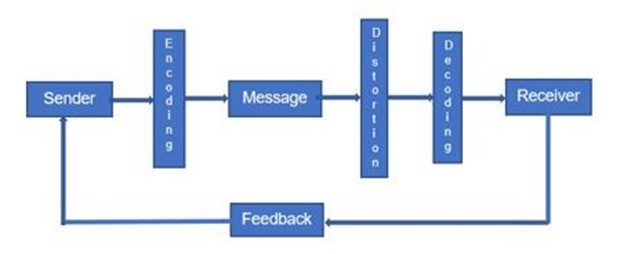
Figure 1: Communication Process
Organizational change, organizational environment, and organizational culture are all influenced by communication. In order to achieve corporate shared values and a feeling of unity with managers and the company, employee input is crucial.
Why is organizational identity important
One of the biggest illusions about organizations is the idea that they are independent, self-contained units that are somehow unrelated to the individuals who work there. Contrary to popular belief, an organization’s vitality and purpose are actually given by its members. People are sophisticated, social creatures that naturally form a group identity when they cooperate to achieve shared objectives. Institutions that act as a framework for this dynamic have the chance to develop a strong, unified organizational identity that will benefit both the institution and its members.
Although it may seem simple, purposefully creating an organizational identity requires effort. So, in the essay that follows, I’ll go into greater detail about organizational identity, why it’s important, and how to use it to tap into the potential of your workforce and create a world-class future.
How Important Is Organizational Identity?
Why does it matter, then? Why is having a strong identity important for organizations? It is thus because uncertainty and a sense of belonging shape most human decisions. And it has an impact on a company’s capacity to meet both short-term and long-term objectives.
Uncertainty

Uncertainty has and always will have a tremendous impact on our geopolitical and economic stability, as the past few years have served as a reminder. Despite the fact that we have been feeling the effects of uncertainty on a macroeconomic level, it is important to keep in mind that companies are merely smaller, more efficient representations of the larger world. Therefore, it promotes stability in times of uncertainty when you foster a strong collective identity within a business.
You can move from being reactive to responsive by deliberately creating and sharing your vision for the organization’s identity, or your “north star” per se. It is simpler for people to collaborate to address problems or changes in the ecosystem when they are clear about the organization’s purpose, values, and intended organizational culture.
Signaling stability promotes market trust, which is equally vital. All stakeholders are more comfortable aligning, investing in, and working with a company that exudes strength and stability. And you can’t make that; you have to radiate it from within.
Belonging
Belonging is another essential psychological force. There are now up to four or five generations working for certain organizations at once, which has led to institutional changes.
For instance, it has been fascinating to observe how Gen Z and younger millennials are developing their value systems. These generations place a higher importance on an organization’s ideals than other incentives and also give more consideration to where and when they work. That has an effect on businesses, especially those that formerly relied on in-person contacts to promote a sense of belonging—a crucial factor in employee engagement and retention.
But it is evidently time for a change because numerous firms operate across all locations, cultures, and identities in addition to a growing workplace environment. To create a culture of trust with their employees, partners, customers, and the wider community, institutions must deliberately construct and cultivate strong, healthy, and positive organizational identities and adhere to them at all levels of management.
How Is A Company’s Identity Created?
This is where it gets problematic because when people cooperate toward a similar objective, they naturally develop a collective identity. Either let your identity emerge naturally or deliberately direct the process. The latter strategy will give you more control over the story and make it simpler to deal with any problematic organizational practices that surface.
The process of creating corporate identity is rather complex, but at the highest level, it all begins with three key questions for all stakeholders:
• Who are we?
• What are we doing?
• How do we envision ourselves evolving?
Who are we?
What distinguishing qualities do you think your company has? In other words, how does your organization respect and value the various identities of the people that make up its membership?
The answer to this question will influence a lot of aspects of your business. For instance, it will influence your hiring procedures because you will try to draw candidates who exhibit these qualities and find them motivating.
What are we doing?
A lot of what businesses “do” depends on their forward motion. To put it another way, it’s easy to become stuck doing things a certain way just because you’ve always done them.
By periodically challenging that momentum and getting stakeholders to elaborate on the organization’s goals and motivations, it can be helpful. This will enable you to assess your strengths, shortcomings, and areas for growth, which is crucial for comprehending the character of an organization.
How do we envision ourselves evolving?

There is frequently conflict when describing an organization’s identity between being present and future-focused and being tradition-bound. Although there should ideally be a throughline, the institution and its identity will change over time, therefore it is crucial to periodically review it to determine whether it is still relevant.
Unfortunately, most people only think about who they are during crucial times. These moments generally occur when something isn’t working out or when the organization needs to make a major structural change, such a change in leadership or a challenge to long-standing traditions. However, it is preferable to be proactive because change is rarely comfortable. That will enable you to lead your employees with clarity and purpose while navigating these difficult times with grace.
How to Support Positive Change Using Organization Identity
Unavoidably, an organization develops its identity. Which do you prefer—intentional or organic identity development for your company? Identity is a potent motivator of behavior and decision-making in people. An organization can support its pursuit of market leadership and excellent goods and services while also fostering a meaningful and rewarding work environment for its workers by comprehending, recognizing, and utilizing the power of that collective identity.

Exercise 1.1: Building Organizational Identity and Identification
1. Flipchart or whiteboard
2. Markers
3. Sticky notes
4. Handouts with guiding questions (optional)
• Divide participants into small groups of 5 individuals.
• Distribute sticky notes and markers to each group.
• Instruct the groups to discuss and answer the following questions:
o a. What are the core characteristics and enduring qualities that define your organization’s identity?
o b. How do employees currently perceive your organization’s identity and their sense of belonging?
o c. What aspects of your organizational identity can be strengthened or improved?
o d. How can effective communication be utilized to shape and promote a positive organizational identity?
Course Manual 2: Strong Culture
10 Characteristics Of An Effective Company Culture
What components make up your workplace culture, and what are they? Ten essential components of powerful corporate cultures are broken down in this essay.
It takes more than just recruiting the right people and developing catchy core principles to create a positive organizational culture. To make those ideals a reality, there is a determined effort on the part of everyone, not just the CEO or high management. Building your culture requires effort from the entire company.
What constitutes a strong corporate culture and how can you create one? The 10 components of a great company culture are examined in this article. It is by no means an exhaustive list of issues that both businesses and employees should concentrate on. Let’s look at it.
The Essential Elements Of A Successful Corporate Culture
1. Principles
Your company’s list of core values is essentially the moral foundation upon which your business is built, so it is imperative that you give your values some serious consideration. After all, they serve as the standards by which your employees decide how to behave within your company and develop the ideal culture.
However, they cannot just be a list that is briefly reviewed by new employees before being immediately forgotten. Your core values should be cultural characteristics that are demonstrated, put into practice, and visible at all levels in the regular business of your corporation. Additionally, when your business develops and the culture shifts, your values should be flexible and open to change.
2. How you collaborate
In the end, how your team members interact with one another should be profoundly and permanently impacted by your fundamental beliefs. Say “Transparency” is one of your core principles. Do people behave freely and honestly at work and in meetings? Have they assimilated the value, as evidenced by the way they behave in your organization?
Perhaps the most obvious manifestation of your culture in action is how your employees work with one another and collaborate. individuals should be able to see a typical meeting and reasonably infer from how individuals behaved what your culture is like and which of your values are paramount.
This should also be apparent in the ways that teams are set up, workflows advance, tasks are assigned, and other things. Your company should have taken the time to make sure that each of its defining values is present in some tangible way in every area of how it conducts business.
3. Interaction
Communication is a crucial component of a positive organizational culture. What type of communication do your people prefer—informally, formally, in private or possibly in public? Does it align with the values of your business and the team? One of your top priorities as a leader is to support the communication style that works best for your team. The fact remains, though, that you’ll also need to put up substitute channels for folks who prefer different communication methods.
Strong company cultures typically place the utmost importance on honest and efficient communication. People should feel at ease discussing ideas, thoughts, opinions, and anything else in your organization. Any company must promote open, free-flowing communication.
4. A feeling of belonging
A strong culture is one that is energetic, communicative, and collaborative. You might need to engage in some community building if your organization is divided into silos, islands, or fragments. Otherwise, you run the risk of having a stagnant, polarized, or even worse, nonexistent culture.
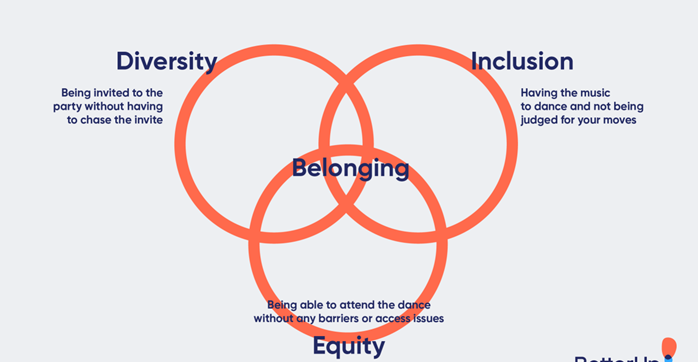
This entails tearing down any barriers, real or imagined, that are limiting how your employees communicate and collaborate. The best way to unite your community varies depend on the issue you’re trying to address, but it almost always involves mending fences: giving isolated teams the chance to interact and get to know one another better or, even better, work together to tackle a common issue.
Events that are held for the entire company, such as internal conferences and social gatherings, are also excellent for reuniting your employees.

Case Study: Airbnb
Airbnb, an online marketplace for vacation rentals, has a distinct organizational culture centered around “Belonging and Diversity.” The company values diversity and inclusion and believes that everyone should feel a sense of belonging, whether they are hosts, guests, or employees. Airbnb has implemented initiatives and policies to promote diversity, such as setting diversity goals, providing unconscious bias training, and implementing inclusive hiring practices. They also prioritize community building through programs like “Airbnb Experiences” that encourage guests to connect with local hosts and create meaningful experiences. Airbnb’s strong culture of belonging has helped create a unique brand and fostered a sense of community among its users.
5. A single goal
Because employees in firms frequently work on various projects or employ distinct skill sets, communication between them can be difficult. They occasionally have isolated processes and methods of thinking. The IT staff may not understand what the Marketing team works on a daily basis, and vice versa.
But this is irrelevant to a business that has a strong sense of purpose. Because everyone in a good culture shares a sense of purpose, the group is united despite its diversity. They comprehend how their work contributes to the company’s long-term objectives and why it is important, and management makes this evident.
Why? People feel important when there is a feeling of purpose that everyone shares and when they can see how their efforts fit into that mission.
6. Understanding
If it isn’t already, acknowledgment ought to be a part of your corporate culture. An informal thank you for a job well done can be part of a recognition program, as can an organization-wide announcement of a promotion. Making it known when your team members go above and beyond is one of the nicest things you can do for them and the rest of your team.
Publicly praising people for their accomplishments also has a significant influence on your society. It highlights helpful contributions and encourages your workers to support one another. This strengthens the bonds between members of your community and provides an opportunity for everyone to, so to speak, shine.
People feel more purposeful and have better employee experiences in an environment where supervisors and coworkers constantly recognize one another in frequent and meaningful ways.
7. Relationship
Relationships with individuals, ideas, aims, opinions, backgrounds, and values are more important in the workplace than creating close, familial ties. Your employees will already be closer to one another if you can help them relate to one another just a little bit better.
Empathy is the focal point of a great culture. People are better able to step up and offer support to guarantee that common objectives are reached when they can relate to one another, understand where the other is coming from, and recognize the pain areas for various teams. It’s essential to have connections like these.
8. Office design
Any culture auditor worth their salt should be able to explain how your employees’ relationships with one another and how they view the culture are affected by your office design. Are your employees scattered among a number of offices across a region, or are they all confined to one dreary, drab office?
Perhaps you don’t have an office and your employees all work from home. Your company culture is greatly influenced by how leaders assist their staff in setting up a successful home office.
Only when the workplace is appropriate for the business and its employees, including their preferred methods of operation, amenities and design that affect their employee experience, and whatever makes them feel most comfortable or productive, does a strong organizational culture emerge.
For instance, the above-described office’s dreary, soulless, and endlessly long rows of cubicles could seem incongruous if it were staffed by trendy Generation Z advertising professionals. Or, who knows, it might make great sense to them. Whether you like it or not, the design of your office should convey the distinct identity of your business (avoid copying other businesses if at all possible).
9. Education and growth
Planning and creating genuine growth opportunities for workers, such as casual lunch and learns, more involved leadership training, and a reward for self-improvement, are key to creating a strong culture. Because your organization grows as your people do.
All of these methods—coaching, mentoring, education, and training—help us become better at what we do. Because it keeps us humble but also hungry, a culture that values education is better off. We can always learn more by exploring the world.

Case Study: Apple
Apple, a global technology company, is known for its innovative products and unique organizational culture. One of the key elements of Apple’s culture is “Excellence and Simplicity.” The company values simplicity in design and aims for excellence in every aspect of its products and services. Apple promotes a culture of secrecy, where employees work on confidential projects and adhere to strict non-disclosure policies. They encourage cross-functional collaboration and have a strong commitment to employee development and learning. Apple’s strong culture of excellence and innovation has played a crucial role in its market success and brand loyalty.
10. Hearing others and adapting
Organizations undergo constant change. The culture will change as seasoned employees depart and new hires arrive, as well as your business expands or contracts. How can you maintain your culture then?
An organization with a strong culture is constantly improving, evolving, and changing, much like its workforce. And for that, it’s important to hear criticism and take action. Even though your culture appears to be robust at first glance, you should always check to make sure it benefits everyone.
It takes years of arduous work to establish the ideal company culture, and guess what? That job is never finished. In order to determine what works, what doesn’t, and what has to change in order to maintain a strong culture, regular observation and analysis are necessary.
Create Powerful Organizational Cultures
A perfect culture cannot be established using a formula. The development of your corporate culture will always be a product of your employees. The things that are important to them might not be on this list or any other list because how we each interpret our employment experience varies greatly. Think about how you may build on these ten components to address the issues that are significant to your company.

Exercise 1.2: Building a Strong Organizational Culture
1. Flipchart or whiteboard
2. Markers
3. Sticky notes
4. Handouts with guiding questions (optional)
1. Introduction:
• Begin the workshop by providing a brief overview of the importance of a strong organizational culture as outlined in the provided description.
• Explain that the workshop will focus on the ten key elements that contribute to a strong culture.
• Emphasize that the exercise aims to generate ideas and strategies that participants can implement within their organization.
2. Small Group Discussion:
• Divide participants into pairs.
• Assign each group one or two key elements from the list (e.g., Group 1: Core Values, Group 2: Collaboration, etc.).
• Provide guiding questions related to their assigned elements (optional) to help stimulate the discussion.
• Instruct the groups to discuss and answer the following questions: a. How can we actively incorporate this element into our organizational culture? b. What specific actions or practices can we implement to strengthen this aspect of our culture?
3. Group Sharing and Reflection:
• Bring the groups back together and provide each group with an opportunity to share their key insights and strategies.
• Facilitate a discussion by encouraging participants to reflect on the commonalities and differences in their group’s responses.
• Prompt participants to build upon or combine ideas from different groups to create a comprehensive set of strategies for building a strong culture.

Course Manual 3: Cultural Alignment
Cultural Alignment: What Is It?
It can be challenging to fully define culture. For many workers, assimilating into the corporate culture might be just as difficult as relocating. One facet of the culture, such leadership openness and transparency, may be noticeable to employees. They might also be attracted to the business because of certain rules, such flexible work hours and procedures that reflect a family-friendly culture.
Employees should understand how to define the culture as well as how to live it, according to the concept of cultural alignment. They are aware of the unwritten laws and customs, and ideally they embrace the culture and take up its cause.
Business outcomes increase when people are in line with the culture. According to Gartner, there is up to a 9% improvement in revenue targets, an 8% increase in talent management goals, and a 22% boost in employee performance when employees and workplace culture are in alignment.
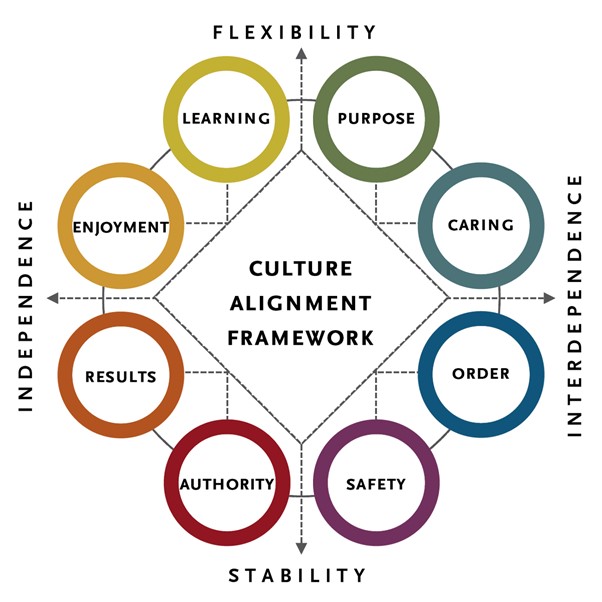
How Can Cultural Alignment Be Achieved?
Defining your culture is the first step in obtaining cultural alignment. Now might be a good time for someone from outside your company to conduct a cultural analysis. Strengths and areas for growth can be more accurately identified by someone with outsider perspective.
Create a strategy to target areas for development to build the culture after having this information at your disposal. This strategy could involve anything from the more concrete, like rearranging personnel to better match teams with your company culture, to the more nebulous, like promoting transparency. Changing something that is more of a soft skill will probably take much longer than other useful, hard-skill centered alterations, even though behaviors are linked to the areas targeted for improvement.
To assist you in integrating your workforce with your corporate culture, think about using a handbook. If you were visiting a foreign nation, you might at first employ a local guide—someone who can assist you in navigating tricky situations and enhancing your interactions. The specialists at Stewart Leadership can act as your mentors to assist with implementing adjustments and enhancing alignment.
Keep in mind that it takes time, patience, and a lot of practice to get people to align with your culture as you carry out your plan. Employees may need time to “learn a new language,” to use a metaphor, and leaders may need to develop trust with their team members.
It may be difficult to concentrate on getting employees to align with your culture, but the outcomes may be worth the effort. Your employees and your organization can both experience great personal satisfaction and greater business outcomes by enhancing cultural alignment, just as someone who has immersed themselves in another culture comes away wealthier and more fulfilled as a consequence.

Case Study: Southwest Airlines
Southwest Airlines is renowned for its strong company alignment and employee-centric culture. The company places a significant emphasis on its core values, known as the “Southwest Warrior Spirit.” These values include a focus on delivering excellent customer service, fostering a fun and friendly work environment, and valuing employees’ contributions. Southwest Airlines has consistently ranked high in employee satisfaction and engagement, which is reflected in its strong company culture. The company’s commitment to aligning employees with its values and mission has helped create a cohesive and high-performing organization.
The Influence Of Cultural Convergence
The values, standards, and behaviors that direct team members on a daily basis and define your organization’s culture are collectively referred to as its culture. Regardless of whether it actively shapes it or not, every organization has its own unique culture. But whether or whether employees adhere to that culture, and whether or not that culture is deserving of belief, is a completely separate issue. According to a study by Gartner, only 24% of workers claim their workplace culture affects how they work, and only 31% of HR executives think their organization’s culture influences business results.
Here’s when cultural alignment enters the picture. According to the same Gartner report, an organization’s workforce and culture alignment can boost employee performance by up to 22%, improve revenue performance by up to 9%, and enhance the company’s reputation by up to 16%. A shared understanding of what your company is attempting to accomplish and the best ways to do so is established by introducing everyone within your corporation to its culture.
There are numerous approaches to enhance cultural congruence within your company. Here are some of the top ones.
Recognize The Conduct That Your Organization Values
When you are praised at work for a particular action, you remember and are inspired to repeat it. According to a study by Achievers, 92% of workers think they are more inclined to repeat an action for which they have received praise. A wonderful technique to foster alignment is to express gratitude for conduct that adheres to your ideal organizational culture.
Opportunities for praise are, of course, simple to overlook, particularly when team members increasingly work remotely. Because of this, your company ought to make recognition as simple, approachable, and interesting as possible. Consider using a mobile-friendly employee appreciation program that enables staff to express gratitude whenever and however they like. Find a platform that enables your business to offer reward points that employees may include with notes of appreciation, which the recipients can then redeem for fantastic things they genuinely find meaningful. Cultural alignment may become a natural, self-reinforcing cycle by creating a top-notch recognition experience in which everyone actively participates.
Encourage Employee Input To Identify Disconnects
If they feel safe saying so, most employees are more than willing to share with your firm whether and why they don’t align with its culture and values. By offering anonymous, user-friendly feedback methods, you can make sure that workers can confidently express their opinions in any situation. These comprise regular pulse surveys and knowledgeable HR chatbots, both of which are present in several contemporary systems for employee engagement. Your team can quickly resolve problems that could otherwise prevent cultural alignment when they routinely share input on areas where they see space for growth.

Case Study: Microsoft
Microsoft recognizes the importance of employee feedback in understanding and addressing any gaps or misalignments within the organization. The company has implemented various initiatives to actively seek input from its employees and promote a culture of open communication.
One such initiative is the “Microsoft Listening and Learning” program. Through this program, employees are encouraged to share their thoughts, ideas, and concerns about the company’s operations, processes, and culture. Microsoft holds regular town hall meetings, feedback sessions, and surveys to gather employee input on a wide range of topics.
Additionally, Microsoft has internal platforms and tools that facilitate employee feedback and collaboration. One notable platform is “Microsoft Pulse,” an online feedback platform that allows employees to provide real-time feedback, voice concerns, and share suggestions anonymously.
By valuing and actively seeking employee input, Microsoft demonstrates its commitment to fostering a culture of transparency, inclusivity, and continuous improvement. The company recognizes that employees are valuable sources of insights and perspectives that can help identify disconnects, improve processes, and drive positive change throughout the organization.
Establish Meaningful Organizational Values And Uphold Them
Any organization’s culture must be anchored by its company values. They serve as guiding principles that should influence everything from enterprise-level strategy to specific client encounters. They are the reason your organization does what it does. A strong set of organizational values is simple for team members to support, which improves alignment across the organization. On the other hand, inconsistent or uninteresting values can act as a significant barrier to bringing people and company culture together.
By establishing a brief, direct statement that outlines your organization’s internal and external aims in simple, understandable language, your business may develop a great set of values. Also, refrain from too closely emulating another company’s ideals. Instead, concentrate on what actually distinguishes your company. Then, spread awareness of these principles throughout the entire organization and give leaders training on how to live them out every day. Soon, the rest of the crew will do the same.
Create A Culture Of Psychological Safety And Trust
Cultural alignment is impossible if workers don’t believe that your organization would treat them properly and allow them to be who they really are. After all, how can workers support a company when they don’t feel secure or at home? Create a culture of listening, especially to the criticism that staff members have for managers and other leaders. While working to create a diverse, inclusive workplace, your company should also practice transparency in both minor and important business choices. Your company has successfully created a culture of psychological safety when workers see bosses as teachers rather than hurdles and understand they can express themselves freely without worrying about consequences.
Culture Is Prioritized During Hiring And During The Onboarding Process
The kinds of team members your business brings on board have a significant role in developing cultural alignment. Your company is setting itself and its new hires up for failure if it hires people with the correct skills but the wrong viewpoint or attitude. Employers should hire for culture by seeking out candidates that are truly enthusiastic about the company’s culture and keeping culture at the forefront of the onboarding process.
Ensure Cultural Compatibility With Achievers
Cultural alignment is built over time, not overnight. Look for assistance in the shape of a cutting-edge software solution focused on strengthening culture and the employee experience to make sure your firm doesn’t run out of steam along the road.

Exercise 1.3: Building Cultural Alignment
1. Flipchart or whiteboard
2. Markers
1. Introduction:
• Begin the workshop by briefly explaining the concept of cultural alignment as described in the provided description.
• Emphasize the importance of cultural alignment in driving business outcomes and employee performance.
2. Small Group Discussion:
• Divide participants into small groups of individuals.
• Assign each group one or two strategies for building cultural alignment (e.g., Group 1: Recognizing and Appreciating Behaviors, Group 2: Encouraging Employee Voice, etc.).
• Instruct the groups to discuss and answer the following questions: a. How can we implement this strategy within our organization? b. What specific actions or practices can we adopt to strengthen cultural alignment using this strategy?
3. Group Sharing:
• Bring the groups back together and provide each group with an opportunity to share their key insights and strategies.
• Facilitate a brief discussion by encouraging participants to reflect on the commonalities and differences in their group’s responses.
• Prompt participants to build upon or combine ideas from different groups to create a comprehensive set of strategies for building cultural alignment.

Course Manual 4: Building Engagement
What Your Brand’s Engaged Employees Have to Say
Although they are not the same, workplace culture and employee engagement are frequently confused. In order to achieve excellent performance, employers must address their staff members’ needs. The performance component of an organization’s culture is engagement. According to Gallup, culture refers to “how we do things around here.” It is what distinguishes and distinguishes your company from others.
Years of Gallup data demonstrate that effective company cultures just function differently. However, a recent Gallup Panel analysis shows that engaged cultures actually speak differently as well.
That has a significant effect on the reputation of your company’s brand. People discuss what it’s like to work for your firm, shop at your store, or use your services on a daily basis. Additionally, the opinions of your engaged and disengaged employees regarding “how we do things around here” are significantly different.
In fact, employees who are engaged are 23 times more likely to strongly agree that they would suggest their company as a terrific place to work than those who are disengaged.

Understanding how people communicate about their workplace can give leaders important insights into the culture and reputation of their company. These findings demonstrate how your company’s identity to the general public, potential clients, and job applicants is fueled by the workplace culture and employee engagement.
Over 9,000 U.S. workers were asked to sum up their work environment in three words or less. The outcomes of individuals who are actively engaged and those who are not were then compared by researchers.
They discovered that motivated workers were more likely to utilize the following words:
• friendly
• open
• family
• teamwork
• collaborative
• caring
• cooperative
• integrity
• efficient
• supportive
Additionally, actively disengaged workers were more likely to utilize the following phrases:
• lazy
• poor
• lack
• bad
• disorganized
• slow
• old
• busy
• reactive
• gossip
These two lists suggest drastically different working conditions for employees. By examining the four essential traits that define engaged cultures, we may observe how these disparities manifest.
1. Pleasant Connections
Friendships and considerate relationships among coworkers were cited as important aspects of company culture by engaged employees. Their coworkers are like family to them. But warm or positive ties with others were not mentioned in any of the top responses from disengaged workers.
2. Sincerity
Words like “open” and “integrity” were much more frequently used by engaged employees to define their culture, implying sincerity and humility in their relationships with others. However, “gossip” was referenced far more frequently by the actively disengaged. That kind of negative communication encourages distrust and bad practices.

Case Study: Uber
Uber, the ride-sharing company, has faced numerous controversies related to workplace culture, including issues with workplace gossip. In 2017, a former employee published a blog post describing her experiences of harassment and gender discrimination at Uber, which highlighted a toxic work environment where gossip and inappropriate behavior were prevalent. The company faced significant backlash and had to undertake various initiatives to address these issues and improve its workplace culture.
3. Performance and Shared Accountability
Close working relationships are best described by the phrases “family,” “teamwork,” and “supportive,” which are all among the top words used by engaged workers. Colleagues are available for support and to remove obstacles rather than to point out errors in an engaged culture. Disengaged workplaces and, frequently, employee outcomes are described as “bad” and “poor”.
4. Agreement on Common Goals
When discussing their jobs, those who are engaged frequently utilize phrases like “cooperative,” “collaborative,” and “efficient” that are associated with agility. The actively disengaged, on the other hand, criticize ineffectiveness and haphazard work as “lazy,” “slow,” and “disorganized.” That has a lazy quality to it as well as an unjust feeling: Most likely, just a small number of people are actually working, with the majority deliberately obstructing it.
What Does This Imply For Your Business?
The differences between “disorganized, gossipy, and lazy” workplaces and those that are “supportive, friendly, and collaborative” are significant. They also produce quite different outcomes; engaged workplaces are far more successful and productive than ones that lack engagement. Additionally, motivated staff are more likely to promote your business in a way that intrigues potential clients and job prospects.
Through marketing initiatives, ad campaigns, consumer interaction programs, social media platforms, and other means, leaders invest a tremendous amount of resources in managing their brands. But what’s as important—and sometimes disregarded—is how your workplace culture fosters—or fails to foster—honest brand ambassadors among your workforce.
You should be happy if those open brand advocates mention friendly interactions, openness, agreement on shared objectives, and shared accountability and performance. They are demonstrating to the outside world that your company’s commitment to excellence is just “how we do things around here.”

Why Engagement Is Required for Outcome-Based Cultures to Succeed
Employees are encouraged to attain well-defined results in the way that suits them best in outcome-based cultures (OBCs).
These cultures place a high value on independence, yet with freedom comes a great deal of responsibility for workers. more so still for their leaders.
The main duty of leaders in an outcomes-oriented culture is to specify the proper outcomes.
But if leaders don’t also match the right talent with the proper positions and concentrate on engaging the people in those professions, the organization won’t ever attain them and this culture will disintegrate.
However, how will executives know if that alignment is effective? No business leader would accept that since doing so informs you what you need to know long after you need to know it. As soon as the outcome is specified, leaders need to assess whether their team members possess the traits that are essential to attaining the goal.
Here Is The Issue: Many Important Things Are Difficult To Measure
According to research, more involvement is a requirement for improved performance. Furthermore, results depend on performance. Measuring engagement is an excellent place to start if executives want to set the stage for an OBC to thrive.
Operate at Your Best
When employees are engaged, all workplaces—OBC or not—are more productive and profitable, safer, and have lower turnover. Unengaged employees will typically just meet minimum standards. Employees who are actively disengaged are worse since they may even undermine the team and results.
However, motivated employees have an emotional stake in the success of their organization.
Reports occasionally point to more serious issues, such as widespread ambiguity regarding the company’s purpose and mission. In spite of the fact that mission-driven workgroups have 30% to 50% fewer accidents and 15% to 30% lower turnover, only 41% of American employees claim to understand what their firm stands for.
Leaders cannot address the engagement deficit until they are aware of it. And it’s impossible to exaggerate how valuable that engagement was. Every organization may benefit from employee involvement, but for an OBC, it offers the drive, creativity, efficiency, sense of ownership, and determination to achieve that improves results.
Saying that OBCs need a high degree of engagement to perform at their best is not overstating the issue. A highly motivated, engaged staff is considerably more likely to produce the results that management desires. A highly disengaged workforce will cause an OBC to fail very rapidly.

Case Study: The LEGO Group:
The LEGO Group is a renowned toy manufacturing company known for its iconic LEGO bricks. The company’s mission is to “inspire and develop the builders of tomorrow.” LEGO employees are passionate about creativity, play, and learning, which are core elements of the company’s culture. The LEGO Group encourages employee engagement through collaborative and inclusive work environments, opportunities for career development and growth, and initiatives that promote creativity and innovation among employees.
Important Metrics
An OBC’s fundamental tenet is that the appropriate individuals are performing the appropriate duties without the need for considerable leadership intervention.
The finest leaders choose the best results and devote their precious and limited time to focusing on establishing the organization’s vision, direction, and goals.
To achieve the goals set by leadership, managers must establish relationships with every member of their team, communicate effectively, provide coaching, and help team members maximize their strengths.
Individual contributors, on the other hand, use their skills to achieve the results in a method that works for them, free from the agonizing worry that they’re squandering their time and effort.
Leaders can determine their proximity to a culture that can accomplish these goals using engagement indicators. Highly engaged employees are more flexible and inclined to have faith in their managers. Engaged employees perform well when executives decide to change the corporate culture to one that is outcome-based. In fact, they could be more prepared for an OBC than their leaders are.
Employees that are actively disengaged reject new efforts outright. They’ll never agree to be an OBC, and they won’t be successful in one either.
The Final Bit
OBCs democratize authority, responsibility, independence, and control. OBCs may be incredibly effective, inventive, and entertaining, but to create one, leaders must be prepared to make the necessary adjustments.
However, some managers have such a deep-seated sense of cynicism that they simply can’t bring themselves to believe that their employees will act honorably without constant supervision. These leaders might never feel at ease in an OBC.
But there are strong arguments for trying.
The value of performance, productivity, and the effective utilization of human capital will all increase in the workplace of the future. Businesses that successfully combine client expectations and technological possibilities will gain competitive advantages. The workplace of the future will require the unique skills of conscientious, creative individuals who can align themselves to outcomes and who consistently perform at a high level.
It is more crucial to hire people well, engage them effectively, define the greatest outcomes, and pay attention to what they accomplish than to dictate the specifics of their work processes.
Leaders would be advised to start determining whether their organization has the necessary resources to establish an outcome-based culture. OBCs are currently a leadership choice. But soon they might be a requirement for leadership.

Exercise 1.4: Building an Engaged and Outcome-Based Culture
1. Flipchart or whiteboard
2. Markers
1. Introduction:
• Begin the workshop by briefly explaining the concept of engaged and outcome-based cultures as described in the provided description.
• Emphasize the significance of these cultures in driving employee engagement, organizational performance, and brand reputation.
2. Small Group Discussion:
• Divide participants into small groups.
• Assign each group one or two strategies for building an engaged and outcome-based culture (e.g., Group 1: Prioritizing Warm Relationships, Group 2: Fostering Alignment on Shared Goals, etc.).
• Instruct the groups to discuss and answer the following questions: a. How can we implement this strategy within our organization to foster an engaged and outcome-based culture? b. What specific actions or practices can we adopt to strengthen engagement and alignment on outcomes?
3. Group Sharing:
• Bring the groups back together and provide each group with an opportunity to share their key insights and strategies.
• Facilitate a brief discussion by encouraging participants to reflect on the commonalities and differences in their group’s responses.
• Prompt participants to build upon or combine ideas from different groups to create a comprehensive set of strategies for building an engaged and outcome-based culture.

Course Manual 5: Enhancing Collaboration
Companies rely on big, diverse teams of highly trained specialists to complete major initiatives like acquisitions or overhauls of IT systems. These teams frequently come together rapidly to address an emergency need and work digitally, communicating online and occasionally over great distances.
The only way to amass the knowledge and breadth necessary to complete many of the complicated tasks firms confront today is typically by appointing such a team. For example, when the BBC covers the World Cup or the Olympics, a sizable team of researchers, writers, producers, camera operators, and technicians—many of whom had never worked together before the project—is assembled. These experts collaborate under the intense strain of a “no retake” setting with only one opportunity to record the action. Similar to this, the central IT team at Marriott must work closely with independent hotel owners, customer-experience specialists, global brand managers, and regional heads, each with his or her own agenda and demands, in order to construct sophisticated systems to improve guest experiences.
However, an intriguing paradox is revealed by a recent study of team dynamics at 15 international corporations: Although large, virtual, varied, and made up of highly educated professionals teams are increasingly important with difficult tasks, those same four traits make it difficult for teams to accomplish anything. In other words, the traits necessary for success are also the traits that work against it. Absent outside forces, members of complex teams are less likely to openly exchange knowledge, learn from one another, shift workloads to accommodate unforeseen bottlenecks, assist one another in finishing tasks and meeting deadlines, share resources, or interact in any other way. They are less likely to state that their aims are aligned, that they “sink or swim” together, or to wish the other person well.
Think about the dimension issue. Over the previous ten years, teams have expanded significantly. By enabling businesses to involve an ever-growing number of individuals in a project, new technologies enable businesses to access a broad range of information and experience. Around ten years ago, it was widely believed that real teams rarely had more than twenty people. Research shows that many complex jobs today are carried out by teams of 100 or more. We have discovered that the tendency to collaborate naturally declines as a team’s size exceeds 20 members. Large teams can cooperate effectively under the right circumstances, but creating those circumstances necessitates careful, and occasionally major, investments in the organization’s ability for collaboration.
Teams benefit similarly from virtual collaboration. The bulk of the groups we looked at included members who were dispersed over numerous locations—in some cases, as many as 13 sites throughout the world. However, we saw that as teams got more virtual, cooperation also decreased, unless the business had made steps to create a collaborative culture.
When it comes to diversity, today’s difficult tasks for organizations nearly always call for the input and knowledge of people from many viewpoints and backgrounds to foster cross-fertilization that leads to insight and innovation. However, diversity also brings certain issues. According to our research, when team members see themselves as similar, they work more effortlessly and easily. Along with nationality, other characteristics that prevent collaboration include tenure, age, and educational attainment. Greater diversity also frequently results in team members working with colleagues from other departments within the company or even from outside the organization—people they know only vaguely or have never met before. According to our research, teams with a higher percentage of strangers and a more diverse range of backgrounds and experiences tend to be less likely to exchange knowledge or engage in other cooperative activities.
Similar to this, it seems that team members find collaboration more difficult the more education they have. We discovered that a team was more likely to break down into pointless fighting or deadlock the more experts it contained.
How therefore can leaders improve their company’s capacity for doing difficult collaborative tasks—to maximize the impact of big, diverse teams while avoiding the drawbacks brought on by their makeup and structure?
Six Strategies For Fostering Collaboration At Work

Here, we provide six guidelines for building a cooperative workplace.
1. Promote honesty and openness
If firm objectives and difficulties are kept a secret, how can employees be expected to work collaboratively with others across the entire organization?
While it’s not necessary to share every piece of sensitive information, keeping staff members informed is crucial to fostering loyalty and productivity.
Be transparent about the problems and difficulties your company is experiencing, and offer rewards to encourage staff to submit solutions.
As a result, it will be possible to maintain alignment among all employees and the company’s strategic goals, enabling everyone to collaborate to achieve those goals.
2. Create a culture of idea exchange without bias.
Fear of criticism or rejection is one barrier that frequently keeps employees from actively contributing and putting forward their ideas. Intimidation, which is especially common in organizations with a top-down organizational structure, may be a frustrating barrier that prevents the finest ideas from coming to the fore.
Establish a culture at the company that is open to new ideas and talks, regardless of how big or small or bizarre or dramatic they may be, in order to overcome this barrier.
Avoid imposing too many rules since they can restrict creativity. The importance of creative freedom will lead to fruitful working collaborations.
3. Encourage departmental cooperation
The creativity process can be slowed down by routinely working with the same teams every day.
Encourage teamwork amongst teams; it’s much better if this involves departmental collaboration. The best ideas can be generated when various goals, personality types, and skill sets are combined.
You will inspire your workers to move outside of their comfort zones, keeping them on their toes, by encouraging conversation between employees who may not typically be in contact.

Case Study: Royal Bank of Scotland
For instance, one of Fred Goodwin’s objectives when Royal Bank of Scotland CEO invested £350 million to create a new headquarters facility outside of Edinburgh in 2005 was to promote effective staff collaboration. The new building, designed around an interior atrium, allows more than 3,000 employees of the company to interact every day.
The corporate headquarters is intended to enhance communication, boost idea sharing, and foster a sense of community among staff members. Many of the offices are open-concept and overlook the atrium, a sizable translucent area. The campus is laid out like a small town, with stores, eateries, jogging and biking trails, picnic areas, and even a recreation center with a pool, gym, dance studios, tennis courts, and football fields. With a private “Main Street” passing through the corporate headquarters, the intention is for staff to stay on-site all day, spending at least some of it outside of their offices socializing with coworkers.
Goodwin also commissioned a neighboring business school, where personnel from other locations gather and study, to ensure that nonheadquarters staff members feel like they are a part of the action. Visitors are welcomed to spend time on the headquarters site and at gatherings intended to help staff members network.
Indeed, the RBS teams we observed had very strong social ties, which served as a strong foundation for their collaborative work and helped them finish assignments rapidly. Consider the Group Business Improvement (GBI) teams, which are composed of individuals from RBS’s several businesses, including insurance, retail banking, and private banking in Europe and the United States, and work on 30-, 60-, or 90-day projects ranging from back-office maintenance to IT improvements. Many market watchers were perplexed by the quickness and success of the GBI teams when RBS acquired NatWest and moved the new acquisition’s IT platform to RBS’s.
4. Take the initiative.
Nothing is less motivating than a leader who spends all of their time in an office, away from the team and in a sort of privileged bubble.
Adopt an open-door policy that encourages regular and fluid communication among an organization’s many hierarchies. Roll up their sleeves and work alongside employees, managers.
It’s crucial to keep in mind that collaboration is not exclusive to certain divisions of the organization. No of what level or position they hold, every employee should adopt it.
Visibility is crucial; if staff members observe their managers and directors working together efficiently, they will be motivated to do the same, which will boost their own productivity.
5. Provide encouragement and rewards
In the end, we are all only human, and even the most devoted workers deserve a commensurate reward when they succeed.
When appropriate, thank individuals, but don’t forget to recognize group contributions as well. As soon as employees see the advantages of working together, it will be much easier to promote future cooperation.
Of course, not every idea will be a good one, but it’s still vital to keep a positive attitude and be persistent in giving feedback.
Giving constructive criticism is essential for progress, but make sure you also let them know how much you value their efforts.
Encourage peer-to-peer debate of ideas because it can take a lot of time to respond to each one individually.
6. Use the appropriate technologies.
Make sure you have the right technology in place to promote collaboration if you want to push for a totally integrated working culture. Employees will be able to complete their tasks more quickly as a result, freeing up more time for collaboration and creativity.
Software that runs on the cloud is becoming more and more common. For instance, a cloud-based idea management platform can support increased teamwork and large-scale innovation among your personnel. To keep your staff motivated and involved, stay on top of technical advancements.
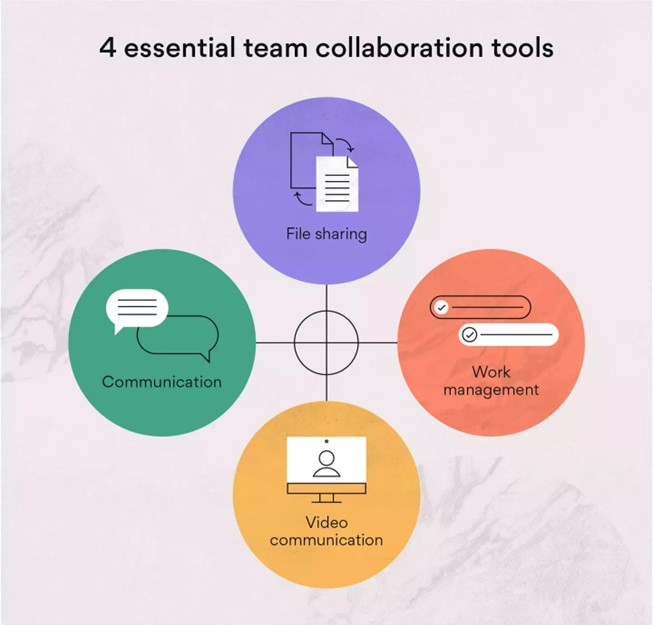
Key Takeaways:
• Collaborative workplaces are becoming more and more popular among employees and open the door to improved idea exchange and more fruitful interactions between coworkers.
• Fostering a collaborative and innovative workplace culture where all ideas are valued will inspire employees to work together and come up with new ideas. Top-down participation and openness are also crucial in inspiring employees to interact with one another.
• Offer team incentives and regular feedback to maintain a high level of collaboration.
• Promote teamwork by offering the necessary technology assistance that will enable rapid and simple participation and idea sharing from all employees.

Exercise 1.5: Building a Collaborative Culture in Diverse Teams
1. Flipchart or whiteboard
2. Markers
1. Introduction:
• Begin the workshop by briefly explaining the challenges associated with collaboration in large, diverse teams as described in the provided description.
• Emphasize the importance of fostering a collaborative culture to unlock the potential of these teams and improve overall team effectiveness.
2. Small Group Discussion:
• Divide participants into small groups of 3-4 individuals.
• Assign each group one or two strategies for building a collaborative culture (e.g., Group 1: Promoting Honesty and Openness, Group 2: Encouraging Cooperation Between Departments, etc.).
• Instruct the groups to discuss and answer the following questions: a. How can we implement this strategy within our organization to foster a collaborative culture in diverse teams? b. What specific actions or practices can we adopt to promote collaboration and overcome the challenges?

Course Manual 6: Attracting Talent
What Makes the Best Employees Want to Work for a Company?
When CEOs see their top performers produce positive business results, they undoubtedly wish they could attract more equally skilled individuals to their organization.
Fortunately, by employing a few straightforward techniques for creating a focused employee value proposition (EVP), any company may draw in candidates who are more likely to be high performers and a strong cultural fit. An EVP, which is closely tied to the idea of a company’s employment brand in this context, articulates the balance between the advantages and compensation that employees receive in exchange for their contributions to a workplace.

Case Study: Apple
Here is an illustration of a successful EVP in action: Some observers may have remarked, “What an extraordinary investment in their employees,” or, “What a great way to develop their workforce and retain talented employees,” when Apple introduced full education reimbursement for employees to its list of employee perks. But in Silicon Valley, those directly involved in the search for top talent soon realized that, similar to how Apple develops novel new products, the company had also developed an attraction strategy that set it apart from its rivals and directly appealed to the kind of employee it wanted to hire. In addition to speaking to candidates with a strong desire to learn and develop, Apple’s wonderfully defined employment brand also reveals a lot about the company’s culture and core principles.
In summary, the proper people are drawn to Apple’s EVP because they want to learn and improve and are likely to be involved in the company’s development-oriented culture.
Talented employees are worth the effort it takes to find and hire them, as Apple clearly understands. According to Gallup’s meta-analysis findings, businesses who hire the top 20% of talent for a position frequently see increases in productivity, sales, profitability, turnover, and unscheduled absences of up to 25% and a 20% gain in profit.
Engaging personnel at all levels can help an organization’s bottom line after bringing in outstanding individuals. According to research by Gallup, business units with the highest levels of engagement are 21% more productive, have 48% fewer safety incidents, are 22% more lucrative, have 10% better customer ratings, and have 37% less absenteeism.
EVP Best Practices from Organizations
The effective management and selection of talent provides a human resource strategy that should be at the heart of each leader’s business plan. This strategy starts with a thoughtfully created EVP that draws in candidates who are most likely to be top achievers and cultural fits.
The best EVP companies use the following best practices:
They are aware of their top performers. Companies may create a clear strategy for attracting candidates with the greatest chance of success by using an evidence-based approach. In order to use this strategy, one must first comprehend the traits of top performers, especially what initially drew them to the business, and then translate those insights into messages that inspire other top performers.
Companies can gather valuable information for creating communications that reflect the specific aspects of the company that appeal to its best employees by conducting interviews and focus groups with high performers. Businesses can attract candidates who are comparable to other high-talent workers by using these customized applicant attraction messages.
They link their culture to their recruitment messages. Not every candidate is a suitable fit for a company’s organizational culture, even if they have the skills to excel in the position. Leaders must make sure that the messaging they use to recruit candidates appropriately depicts the workplace. Employers can attract top talent who are also more likely to be involved with the organization, fit well with coworkers, and support the company mission by using communications that assist applicants understand what to expect from the workplace.
They set themselves apart from the opposition. The messaging a firm uses to attract applicants should make it stand out from the competition and give potential employees strong incentives to choose the company as a place to work. Companies must evaluate the efficacy and authenticity of their employment brand, compare it to that of competitors, and leverage on differentiators to guarantee they are differentiating themselves. When a company’s EVP emphasizes its distinctive features, it may stand out from the competition, attract qualified candidates, and build its brand.

Case Study
Here is an illustration of a best practice in use at a significant, prosperous organization that Gallup researched. The organization found that candidates who were most enthusiastic during their interviews about future-oriented parts of the job, such as possibilities to learn and grow and advance in their careers, were those who were more likely to have successful careers once they were employed. Candidates who were less likely to have successful careers, on the other hand, were most enthusiastic about immediate and surface-level components of the work, like high pay, good benefits, and physical bonuses.
These data enabled the business to create a focused, targeted EVP that appeals to the customers who are most likely to succeed. Even though the company offers excellent salary, it doesn’t include salaries in its job postings since doing so would draw the wrong kind of applicant.
To entice devoted customers, businesses invest a lot of time and money in marketing activities. Unfortunately, they frequently forget to create a similarly potent employment brand to draw in top-tier personnel. First, leaders must research outstanding performers; then, they must create an EVP that accurately captures their organization’s culture and distinguishes it from the competitors.
Leaders may be more picky about who they hire and can fill every post with the appropriate person if the right kind of applicant is knocking on their door. However, leaders drastically miss the goal when they concentrate on obtaining a big number of applications rather than applicants of good caliber.

Groups Will Make or Break the Culture of Your Company
Every employer seeks workers who feel like they belong in their company because those workers are more willing to offer their all every day. Those workers have the confidence to fully commit, take chances, and be who they are at their best.
When a company promotes a culture that makes workers feel allied with the business every day through their experiences at work, that kind of profound belonging results.
Institutional moments, or contacts between employees and the company, and interpersonal moments, or regular encounters between employees, both contribute to the development of organizational culture.
The stages of the employee life cycle from hire through retirement known as institutional moments include onboarding, performance management, promotion, and leadership development.
People who reflect the organization as a whole are the four populations that contribute to the institutional moments that either create or destroy culture:
1. The culture is enabled by leadership.
Leadership establishes the culture’s vision, prioritizes it, and sets the standard for others to follow. Additionally, they are in charge of allocating enough funding for activities that foster responsibility and culture.
2. The culture is facilitated through supporting teams.
Teams from the departments of HR, finance, accounting, legal, and analytics create policies, processes, and programs to carry out the leadership’s vision for the culture. Additionally, they locate and disseminate best practices, offer instruction, and assess results.
3. Regular heroes influence the culture.
Although they might not be publicly recognized inside your firm, champions can and ought to be. They are the catalysts for social contagion as well as influencers and change agents.
Find these hidden gems and teach them how to do what comes easily to them: speak out for culture initiatives, encourage others when they need it, and be an outspoken brand ambassador.
4. The culture is delivered by management.
Managers have a direct impact on how employees perceive the culture because they account for 70% of the variation in employee engagement every day and in every moment. The majority of key events in an employee’s career include direct interaction between the individual and the manager.
However, managers may feel as though their hands are bound and that they are unable to provide what is required on a daily basis if the other three groups are not operating as they should.
The institutional moments these four groups produce when they work together enable, facilitate, activate, and convey a sense of belonging and involvement to every individual.
These groups must deliberately encourage people to join the organization, bringing the brand’s mission to life.
But in the end, it’s up to each employee in a company to contribute in some way. Employees must consciously choose to embrace, participate in, and be a part of the organization’s culture.
The four populations that bring about change and construct the ideal institutional settings play interdependent roles. The success of the other populations will be constrained if one population fails.
There could be a bigger breakdown going on when an HR staff complains that their managers aren’t using the training, procedures, and technology they’ve put in place. Has the change in behavior been successfully enabled by leadership? Are local champions stepping up? The manager finds it much harder to perform without institutional support. This kind of circumstance gives the management and their immediate reports a bad institutional moment.
Throughout the employee life cycle, leadership, support functions, champions, and managers collaborate to develop and implement programs, structures, and processes that have an impact on the employee experience.
For instance:
Onboarding:
Take, for example, a corporation whose renown customer service standards serve to establish its culture. They take it so seriously that they provide new employees a compensation if they don’t feel prepared to accept the cultural norms after 90 days.
Because finding the proper fit is so crucial to them, they would rather take a small risk with turnover than forgo providing excellent customer service.
The funding is provided by the leadership, support functions facilitate the “test drive” policy, champions assist in enacting the choice, and managers ensure that new hires are aware that there is no shame in quitting if they find they are not a good fit.
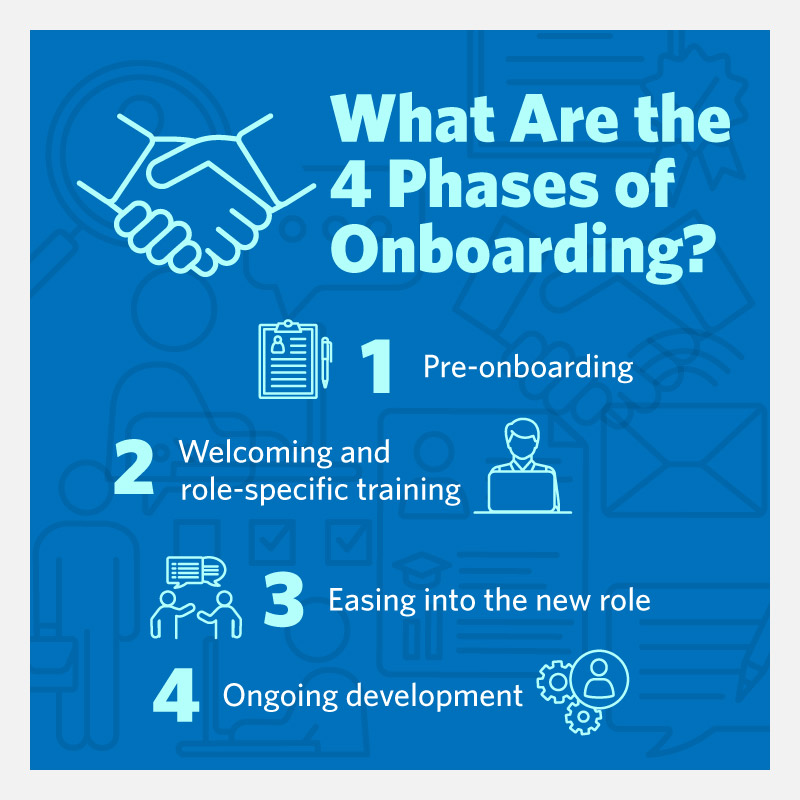
Performance management:
The majority of businesses with strengths-based workplaces delegate education and coaching to HR, while one firm strongly pushes managers to earn a certification in strengths coaching. The business thinks that managers who serve as coaches give their workers a better daily experience.
The company’s division presidents have evolved into strengths coaches, demonstrating how leadership can influence a culture by setting an example of appropriate behavior.
The business values performance development over performance management alone, and they are aware of the importance of coaching in this process. Additionally, the majority of millennial workers anticipate mentorship from their bosses.
Support functions, in this case HR, help to foster the culture by giving managers the chance to become certified. Additionally, they conduct the study and inform managers of the benefits of strengths-based coaching.
Champions are supervisors that push their coworkers to pursue certification, motivating others to act by sharing their own stories of achievement.
Promotion:
A “new house” bonus for employees who stay for at least two years and achieve a second promotion is one way that another organization lives up to their culture of tenacity and diligence.
They expect a lot of commitment and long hours, but they cherish what employees provide and show appreciation in return through this special institutional moment. The culture is one of reciprocity and loyalty.
They understand that many people in that period of life have substantial school debt and desire to own a home, so this reward supports those workers’ financial objectives in the same way that employees support organizational objectives.
Managers establish the culture by assuring workers that their efforts will be rewarded, and champions share personal success stories about the goals they were able to accomplish as a result of the incentive.
Developing leaders:
All employees at one of the best businesses I work for are eligible for unlimited tuition reimbursement.
Their leadership wants individuals to be lifelong learners who get better every day, and their culture places a high importance on learning and development.
While champions disseminate their joy for the degree they obtained and how it enhanced their career with the organization, support functions take care of the benefit’s administrative elements.
Employees can commit to the tangible culture that is created by all of these institutional events in the employee life cycle, bringing the written words to life.

Exercise 1.6: Developing an Effective Employee Value Proposition (EVP)
1. Flipchart or whiteboard
2. Markers
3. Handouts with guiding questions (optional)
1. Introduction:
• Begin the workshop by briefly explaining the importance of developing an EVP that aligns with the company’s culture and appeals to top performers, as described in the provided description.
• Emphasize the role of the EVP in attracting and retaining the best employees.
2. Group Discussion – EVP Development:
• Divide participants into small groups.
• Instruct each group to discuss and answer the following questions: a. What are the key characteristics or qualities of your organization’s best performers? b. How can you translate these characteristics into messages that attract similar high-talent individuals? c. How can you ensure that the EVP aligns with your company’s culture and values? d. What differentiates your company from competitors, and how can you capitalize on these unique qualities in your EVP?
3. Group Sharing – EVP Enhancement :
• Bring the groups back together and provide each group with an opportunity to share their key insights and strategies.
• Facilitate a brief discussion by encouraging participants to reflect on the common themes and ideas generated during the group sharing.
• Prompt participants to build upon or combine ideas from different groups to enhance the EVP development process.

Course Manual 7: Positive Environment
The Influence of a Positive Workplace
Your duties as a a leader include overseeing staff members and preserving a safe work environment. However, it’s crucial to constantly evaluate your practices and search for methods to strengthen them. Positivity in the workplace has a big impact on employee satisfaction and organizational objectives.
In many instances, boosting employee satisfaction can help businesses handle problems with communication, turnover, productivity, and profitability. People who enjoy their work and look forward to going to work are more likely to contribute to the success of your business. The value of positivity at work will be highlighted here, along with suggestions for creating this kind of atmosphere at your business or organization.
What Characterizes a Positive Workplace?
Varied company executives may have varied ideas on exactly what constitutes a positive work environment. Is the work-life balance satisfactory? a setting that is productive? Honest and open dialogue? Some could claim that it is all of the above, and they would be accurate. Support, trust, accountability, and a generally wholesome work culture serve as the foundation of a productive workplace.
However, each team has a unique dynamic, so finding new approaches to ensure that workers feel secure and comfortable may be necessary if you want to foster a productive workplace. Let’s look at some typical traits of a productive work atmosphere.
• Clear communication: Asking questions, getting feedback, and working on ideas with coworkers are all components of successful workplace communication. In an organization, open communication among all participants fosters the development of professional relationships and raises the standard of work output.
• Positive reinforcement: Recognizing employees for their hard work can help create a happy workplace for everyone. Positive reinforcement may take the form of material advantages like pay hikes, bonuses, catered lunches, or other perks.
• Compassionate team members: Upholding an atmosphere of empathy, respect, and understanding among all workers can promote collaboration and help your team members feel heard, supported, and valued at work.
• Possibilities for growth: Encouraging your staff to develop their unique qualities and abilities will help them feel satisfied and happy in their work. Giving your staff the tools they need to advance in their careers can increase their motivation and output.
• Thinking positively: Encouraging positive attitudes among your staff members can help them overcome difficulties and hurdles with a positive approach.
• Healthy work-life balance: It’s important to strike a balance between your personal and professional lives. A supportive workplace culture encourages team members to pursue their personal goals outside of work.

Case Study: Salesforce:
Salesforce, a cloud-based software company, is known for its commitment to employee well-being and its positive work culture. The company provides numerous benefits, including comprehensive healthcare coverage, flexible work arrangements, and generous paid time off. Salesforce also emphasizes employee growth and development through training programs and career advancement opportunities. The company’s positive work environment has contributed to high employee satisfaction, low turnover rates, and a strong company culture centered around trust and collaboration.
Positive Work Atmosphere Types
Businesses can choose to use one of the following work environments or mix components from each environment. Here are two sorts of productive workplaces that organizations may have:
Team-based work environment
Collaboration in the workplace is encouraged by a team-based work environment. Several workplaces with this kind of setting structure their tasks and projects to include teamwork. Instead of having employees complete projects independently, management may, for instance, form multiple teams to do projects jointly. In this setting, a large number of team members share duties and can form friendships with one another while honing their teamwork abilities.
Independent work environment
Employees are encouraged to work independently of their coworkers in an autonomous work environment. Instead of adapting their working style to the members of their team, this might enable them to select the working style that best suits them. Workers in this atmosphere might feel more in control of the work they do and be able to hone their specific skills. In order for individuals to benefit from each work environment, workplaces may ask them to do some tasks alone while assigning others to teams.

Five Advantages of a Positive Workplace
Employee success on both a personal and professional level can result from taking action to promote a healthy work environment. Your business can advance if your staff members arrive at work eager to face the day and function as a cohesive team. Here are some advantages of workplace positivism.
1. Boosts Productivity
Productivity and employee happiness go hand in hand. According to studies, workplace happiness boosts output by 12%. When your staff members are content, they have the skills and motivation needed to work well as a team and interact with one another. You can support the success of your employees and company by fostering a healthy work environment.
2. Promotes Employee Growth and Engagement
A nice work environment can increase productivity as well as employee engagement. According to research, profitable teams increase a company’s profitability by 21%. Your business may lose valued personnel due to low engagement, which has an adverse effect on your bottom line.
In fact, businesses in the U.S. alone lose $550 billion annually due to disengaged workers. Promoting a healthy work environment can increase team engagement by fostering a sense of loyalty, comfort, and trust. This involvement may eventually result in greater prospects for job growth and inspire workers to do better.

Case Study: Marriott International
Marriott International, a leading hotel chain, places a strong emphasis on creating a positive work environment for its employees, known as “associates.” The company focuses on fostering a sense of belonging, recognition, and growth. Marriott offers comprehensive training and development programs, encourages a diverse and inclusive workforce, and provides opportunities for career advancement. The positive work environment at Marriott has been instrumental in driving employee loyalty, guest satisfaction, and financial success.
3. Encourages Teamwork
The success of an organization is frequently built on teamwork. When your staff members experience personal motivation and support, they may automatically start encouraging and supporting others at work. Coworker engagement and cooperation can establish solid professional links and improve relationships all around, just like how a good mood tends to spread. Your team’s ability to innovate, work together, and exchange ideas will directly affect how likely it is for your business to succeed.
4. Enhances Retention
Did you know that 96% of workers believe that one of the most effective ways to boost employee retention is through empathy? Establishing a wholesome, upbeat environment that prioritizes making workers feel valued, respected, and understood will aid in employee retention and keep your bright staff from hunting for new employment.
High turnover rates can result in high expenses, bad morale, and the waste of resources, as you are well aware. You may improve your retention rates by empathizing with your team members and giving them reasons to advance within your business.
5. Encourages Greater Well-Being
It’s no secret that many workers experience stress and burnout today. The American Institute of Stress reports that about 85% of American workers suffer workplace stress, and 25% of respondents rank it as their top stressor.
It might be simpler for your employees to manage stress and anxiety, avoid burnout symptoms, and reduce absenteeism that results in lost productivity if you provide a climate where they feel comfortable opening up, being honest, and asking for help. Most importantly, a happy work atmosphere helps your employees maintain a healthy balance between their personal and professional lives, supporting their physical and mental health.

How to Foster a Positive Workplace
How do you establish a positive work atmosphere now that you are aware of its advantages? Even though putting these changes into practice and establishing new regulations at your firm might seem difficult, it doesn’t have to be a struggle. Let’s examine how you might start small and foster a positive work environment.
• Leave a lasting impression: Be sure to extend a warm welcome to your new hires during onboarding and training. To leave them with a positive image of your corporate culture, give them a tour, make introductions, and make them feel at home.
• Promote collaboration and connection: Encourage your staff to work together and create strong bonds based on trust and respect to make them feel like a team.
• Support your values with actions: Organizational ideals are meaningless if they are not backed up by the appropriate behaviors. To prove to your staff that you mean what you say, be sure to live up to your company’s principles and goals.
• Give diversity and inclusion top priority: Everyone is valued in a positive work atmosphere, regardless of their culture, ethnicity, gender, or religion. Promoting diversity is essential for fostering a strong workplace culture because it invites various viewpoints and experiences, which can increase employee comfort and foster a forward-thinking business.
• Conduct routine check-ins: A productive, happy workplace depends on the welfare of your staff. Make sure you regularly check in with every team member to demonstrate your concern and interest. These simple forms of communication can increase output and provide workers a sense of support.
• Create a friendly environment: Consider your physical environment and how it may impact your staff’s attitude. Think about offering more natural lighting, cozy chairs, open-concept workstations, or collaborative locations where workers may form relationships and be more effective.

Exercise 1.7: Building a Positive Work Environment
1. Flipchart or whiteboard
2. Markers
3. Sticky notes (optional)
1. Introduction:
• Begin the workshop by explaining the importance of creating a positive work environment for HR directors and the overall success of the company, as described in the provided description.
• Emphasize the key elements of a positive work environment, such as clear communication, positive reinforcement, compassion, growth opportunities, positive thinking, and work-life balance.
2. Group Brainstorming – Strategies for a Positive Work Environment:
• Divide participants into small groups.
• Instruct each group to brainstorm and write down strategies or initiatives that can contribute to creating a positive work environment.
• Encourage participants to consider strategies related to effective communication, positive reinforcement, empathy and respect, growth opportunities, positive mindset, work-life balance, and other relevant aspects.
• Participants can write their ideas on sticky notes and place them on a flipchart or whiteboard for group sharing.
3. Group Sharing – Strategies Discussion:
• Bring the groups back together and provide each group with an opportunity to share their strategies.
• Facilitate a brief discussion by encouraging participants to discuss the effectiveness and feasibility of the shared strategies.
• Prompt participants to identify common themes or patterns among the strategies shared by different groups.

Course Manual 8: Customer Experience
The Human Touch Is The Key To Exceptional Customer Service
Due to the clear advantage it offers in a market that is becoming more and more competitive, businesses and business executives are placing a greater emphasis on customer attention than ever before. Businesses are aware that in order to succeed, they must draw in and keep customers who can access reviews, rankings, and other information with increasing ease.
More organizations are attempting to integrate the most recent technologies—often from different industries—into their evolving end-to-end client journeys. Examples include adopting ride-hailing applications as a model for tracking field staff or developing the virtual try-on experiences made popular by cosmetics companies.
However, this tech-driven quest for client centricity has a drawback: It is simple to become competitive in the pursuit of the newest “breakthroughs” and tools, regardless of whether they contribute to the effective problem-solving of consumers. Even if investing in cutting-edge technologies may seem to be useful, doing so will not make a company genuinely customer-centric.
So, how can businesses truly put their customers first? Leading customer-experience companies’ experiences demonstrate that customer centricity begins at the top with a clear goal that pervades every organizational level and motivates people. Critical enablers like tools and technology are only represented when this goal has been translated into the appropriate organization, product, and services.
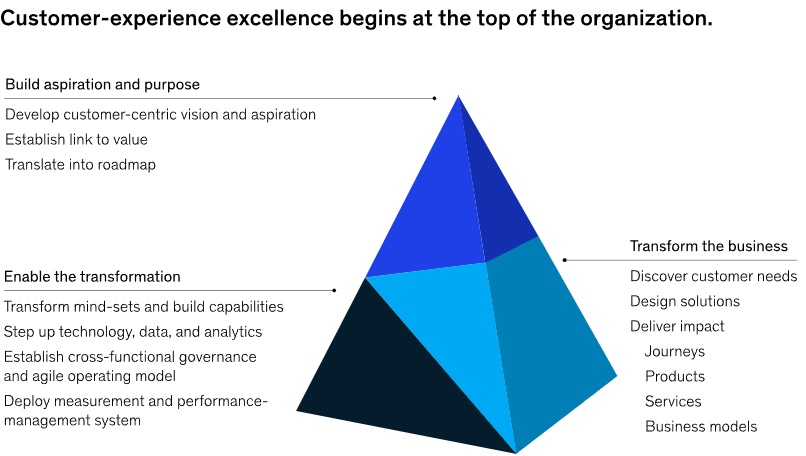
The lesson that this pyramid-shaped process is still necessary is reinforced by an analysis of innumerable examples of customer-centric changes. However, this holds true only when a people-first culture is at the core. A distinctively customer-centric firm, defined as one where all employees collectively and individually prioritize customer requirements in all they do every day, is one where culture is often disregarded yet is a key basis.
The Importance Of Culture In Customer Centricity
It may seem contradictory to prioritize culture as a main strategy for enhancing customer centricity. But before these signals ever turn into a recognisable, trackable data pattern in a company’s systems, it is employees that contact with consumers, hear their worries first, and watch what thrills them. Therefore, a positive work atmosphere has a direct impact on clients.
Two important realities were revealed when the connection between culture and performance was examined.
Performance is driven by culture. Across all industries, healthy businesses perform three times better than sick ones. We define “health” as the capacity of the organization to unite around a shared purpose, effectively carry out that vision, and continually reinvent itself via innovation and creative thought.
Culture supports transformational achievement. In order to implement widespread change, people-related activities that support culture are essential. Companies that correctly address them boost their chances of a successful transformation by 30% to 79%.
Additionally, the Organizational Health Index (OHI) study of our colleagues demonstrates that customer-centric enterprises display behaviors that set them apart from businesses with lower net promoter scores (NPSs).
The data therefore clearly shows that culture might be the greatest competitive advantage in a world when company models are easily copied. However, “culture” is hardly a management secret. Organizations have a variety of alternatives for creating a culture that influences behaviors that, when tactically executed, result in a unique customer experience, depending on their strategic aims.
In contrast to a high-end hotel, a quick-service restaurant will usually place an emphasis on providing quick, dependable service. To match the industry requirement for constant, quick innovation in creating the next market-shaping product, a consumer electronics company will probably need a totally distinct set of fundamental behaviors.
However, our examination across industries reveals that companies that prioritize their customers share a set of behaviors, as demonstrated by the contrast between “hardened hierarchies” and the “empowerment engines” that thrive.
Service Is Hampered By Rigid Hierarchies
Companies that fall short when it comes to customer experience make the same mistake: they neglect to put the employee at the heart of the process. Instead, to provide the necessary guidance, these organizations typically rely on the design of their customer systems, KPIs, and feedback channels. However, without much to motivate staff members or in some cases even equip them to put the needs of the client first, the structure may end up being more of a burden than a benefit. As a result, the executives of these businesses frequently struggle to translate their vision and design tenets into specific goals and understandable KPIs.
These organizations frequently have oppressive process and compensation structures with little regard for the consumer. Instead of attempting to incorporate the client experience into employee conduct, they frequently use centrally collected customer data to precisely direct employees’ behaviors. However, this top-down system does not give the employee the ability to deliver a top-notch experience.

Case Study
Think about Sal, a call center agent, who is speaking to an irate client on the phone. Sal is in front of a screen that displays the length of the conversation as well as a script of prewritten responses to frequent questions. According to data from the company’s customer study, shorter wait times are preferable. Sal wishes to put an end to this irate customer’s call as soon as possible because escalations to management lengthen wait times.
Sal goes over the pre-written responses. When these don’t help the consumer, he promptly escalates the matter to a more senior staff that has access to more information. He transfers the call to the new team while opening a ticket. Sal finished the call swiftly, as instructed by his employer. However, the client is now on hold while awaiting the subsequent group of assistants. She is devoting more time and energy to the issue.
Empowerment mechanisms produce exceptional experiences
Successful customer-centric businesses place a strong emphasis on open and honest communication among employees and have strong leaders who connect with them. These companies are led by encouraging leaders who push their workers to think outside the box and creatively rather than settle for providing mediocre service. They delegate decision-making to front-line employees and engage in open discussions about what’s important to them, their teams, and the consumers.
Employees have a voice in topics that affect them in this setting. Businesses that encourage employee ownership of solutions develop leaders who serve as enablers and mentors, setting up the proper frameworks for solutions and stepping aside to let their customer-centric engines function.

Case Study
For Larry, a call center worker at an empowerment-engine company, the situation Sal experienced seemed to be entirely different. When a disgruntled client calls, Danny begins by taking responsibility for the issue. He attempts the script he has in front of him, but when the problem persists, instead of continuing aimlessly, he realizes that the solution won’t be typical. Danny adds the issue to a team chat and asks if anybody else has come across anything similar, rather than just passing the call forward to someone else and making the consumer wait in yet another line for assistance. Gloria, one of his coworkers, offers that she just happened to notice the same problem and comes over to help him find the answer. The consumer is happy and the call ends.
Danny is not yet finished, though. Then, he reports the problem to a central team for them to update the script materials with the updated instructions after adding the solution to his list for future reference. Danny and Gloria’s shared experience is used by the shift manager to illustrate how customers are impacted at the following shift change after the materials have been updated.
Fostering A Customer-Focused Culture
The contrast between the two contact center workers demonstrates how culture influences how customers behave. It takes a lot of work to create a customer-centric business culture, but businesses may make the effort worthwhile by using a strict three-stage approach of explore, design, and deliver.
Determining What Is Important To Your Clients And Employees
In the “discover” stage, businesses examine the ingrained behavioral patterns of their staff to determine which ones promote customer centricity and which ones can get in the way. In order to guide precise, observable behavior improvements in how frontline personnel interact with customers, they identify the behaviors that are most important for their business’ customer-experience design and articulate them as principles.
Even more crucially, leaders look for the underlying reasons of the mindsets they wish to alter when it comes to the actions that get in the way. Otherwise, once the initial excitement about the potential for transformation starts to dissipate, the negative behaviors are far more likely to reappear. An overview of mindsets that undermine or promote customer centricity is given in the image below.
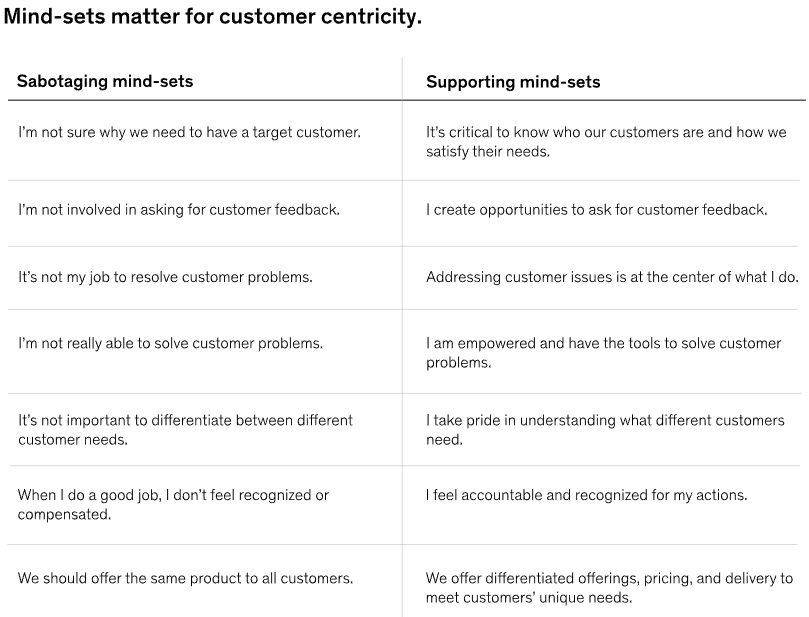
Creating A Fresh Culture
The next step is to create and implement a company-wide initiative to support the desired culture. This effort should start with a plan to drive the change and include significant business projects that will serve as examples of the new culture and help to reinforce it.
To comprehend and reinvent the entire client experience, one business developed a customer-experience factory. It established cross-functional customer experience teams and provided them with agile, design thinking, and problem-solving training. Then, these teams collaborated to build and implement solutions at scale that were the result of the customer experience factory’s cultural shift toward putting the needs of the customer first. To encourage the appropriate actions and behaviors, the organization has also integrated customer-experience measurements from the beginning. The business saw chances to increase top-line revenues by 10 to 15 percent and profitability by 15 to 20 percent overall.
Keeping The Promise Of Customer Centricity
With the necessary groundwork in place, businesses can encourage a customer-centric culture that provides staff with the encouragement and rewards they require to enhance the customer experience. Successful businesses frequently concentrate on modifying several areas:
Make changes to the workplace to improve the employee experience.

Case Study
Southwest Airlines staff members establish workplace standards that affect how employees feel on a daily basis: Leaders and clients can commend employees for excellent service, especially hospitality, using SWA Gratitude (SWAG). The ride-hailing app Grab employs the adage “your problem is my problem” as one of its guiding principles to motivate workers and shift mindsets from “that’s not my job” to “I’ve got your back.” The greatest honor within the company, “takumi,” which translates to “master craftsperson,” is also how Lexus approaches customer centricity. A takumi is someone who has spent more than 60,000 hours honing their skill and is able to identify manufacturing faults that are only apparent to the trained eye.
Give workers the chance to get beyond their own obstacles more quickly. It’s not always as easy as telling staff to act differently.

Case Study
One automotive corporation required dealership managers to meet with the sales team every morning to discuss customer-service data and potential improvements. After a few weeks of only little uptake, executives came to the conclusion that some managers simply weren’t at ease giving formal presentations to their staff. They were worried that if the presentations were done poorly, they would lose the respect of their peers. The managers accepted the new paradigm after receiving individualized instruction, which included practice presentations, and the customer experiences were immediately faster and improved.
Set a good example for others to follow and show a strong commitment to the change. Senior executives and managers must set an example for the new culture to follow and show that they care about the client.

Case Study
Leaders at a regional bank in Europe set high standards for performance, customer satisfaction, and organizational health. The CEO and other top executives gave the company’s goal of being the best employer in the area top emphasis. They actively promoted and set an example for organizational health throughout the business, for example, by paying surprise visits to the call center and taking calls alongside ordinary staff members. Middle managers now had an easier time leading the transition with their teams as a result of these measures. In addition to lowering employee turnover by one-third, producing much greater profitability, and achieving a double-digit rise in organizational health, the bank became the market leader in terms of customer preference.

Exercise 1.8: Building a Customer-Centric Culture
1. Flipchart or whiteboard
2. Markers
3. Sticky notes (optional)
1. Introduction:
• Begin the workshop by explaining the significance of culture in customer centricity, as outlined in the provided description.
• Emphasize that employees play a crucial role in delivering exceptional customer experiences and that a healthy organizational environment directly impacts customers.
• Share the research findings that healthy companies outperform unhealthy ones and organizations prioritizing culture increase their odds of successful transformation.
2. Group Discussion – Customer-Centric Behaviors:
• Divide participants into small groups.
• Instruct each group to discuss and identify behaviors that distinguish customer-centric organizations from those with lower net promoter scores (NPS).
• Encourage participants to share examples from their own experiences or observations.
• Participants can write down their identified behaviors on sticky notes and place them on a flipchart or whiteboard for group sharing.
3. Group Sharing – Customer-Centric Behaviors Discussion:
• Bring the groups back together and provide each group with an opportunity to share the behaviors they identified.
• Facilitate a brief discussion by highlighting common themes and important behaviors that emerged from the group sharing.

Course Manual 9: Differentiating from Competitors
In today’s highly competitive business landscape, where products and services are often similar, establishing a competitive advantage is crucial for long-term success. While factors like pricing, quality, and marketing strategies are important, an often-underestimated element that can set a business apart from its competitors is its unique organizational identity and culture. A strong organizational identity and culture contribute to a company’s differentiation by shaping its values, behaviors, and overall approach. This article explores how a distinct organizational identity and culture can serve as a competitive advantage, helping businesses differentiate themselves from competitors in the market. It will delve into the impact on brand image, attracting and retaining top talent, enhancing customer loyalty, driving innovation, and fostering adaptability.
Understanding Organizational Identity and Culture
To comprehend the role of organizational identity and culture as a competitive advantage, it is crucial to define and understand these concepts. Organizational identity refers to the unique characteristics and attributes that define a company’s essence, including its values, purpose, mission, vision, and overall brand identity. It represents the DNA of the organization and helps stakeholders understand what the company stands for. Organizational culture, on the other hand, encompasses the shared beliefs, values, behaviors, and practices within an organization that shape the mindset and actions of its employees. It influences how work is done, how decisions are made, and the overall work environment.

Case Study
Google has established a unique organizational identity and culture that differentiates it from competitors in the technology industry. The company’s mission to organize the world’s information and make it universally accessible and useful reflects its identity and shapes its culture. Google’s work environment is characterized by a flat hierarchy, a focus on innovation, and employee empowerment. The company encourages creativity through initiatives such as “20% time,” allowing employees to spend a portion of their workweek on personal projects. This culture of innovation has led to the development of groundbreaking products and services, such as Gmail and Google Maps. Google’s strong organizational identity and culture have attracted top talent and fostered a reputation for being an innovative and dynamic company, giving it a competitive advantage in the market.
Shaping Brand Image and Reputation
A unique organizational identity and culture play a significant role in shaping a company’s brand image and reputation. When an organization clearly communicates its identity, values, and purpose, it creates a distinct brand positioning that resonates with its target audience. Customers are more likely to connect with brands that share their values and beliefs, leading to stronger brand loyalty and advocacy. Moreover, a strong brand image built on a consistent organizational culture can enhance a company’s reputation, making it more attractive to customers and stakeholders. When a company aligns its actions and behaviors with its declared values, it builds trust and credibility, resulting in a competitive advantage over rivals.

Case Study: Zappos
Zappos, an online retailer specializing in footwear and apparel, has differentiated itself through its strong organizational culture and commitment to exceptional customer service. The company has a well-defined organizational identity centered around delivering happiness to its customers and employees. Zappos’ culture fosters a customer-centric approach, emphasizing employee empowerment and providing exceptional support. The company’s “Zappos Core Values” guide its employees’ behavior and decision-making processes. Zappos’ unique organizational culture has contributed to its reputation for outstanding customer service, resulting in high customer satisfaction, repeat business, and positive word-of-mouth referrals. By prioritizing its organizational culture, Zappos has set itself apart from competitors and gained a competitive advantage in the online retail industry.
Attracting and Retaining Top Talent
In today’s talent-driven marketplace, attracting and retaining top talent is crucial for organizational success. A unique organizational identity and culture can be a powerful tool for attracting and retaining high-performing employees. When a company’s identity is well-defined and distinctive, it becomes an attractive proposition for individuals seeking alignment with their own values and aspirations. Talented professionals are more likely to choose organizations that resonate with their beliefs and provide a sense of purpose beyond monetary rewards. Furthermore, a strong organizational culture that fosters employee development, engagement, and inclusivity creates a positive work environment that attracts and retains top talent. Employees feel a sense of belonging, job satisfaction, and personal growth opportunities, leading to higher productivity and reduced turnover rates.
Enhancing Customer Loyalty
A unique organizational identity and culture can significantly impact customer loyalty, providing a competitive edge. When customers connect with a company’s values and purpose, they develop an emotional attachment and affinity towards the brand. This emotional connection goes beyond transactional interactions, leading to stronger customer loyalty and repeat business. By aligning its products, services, and overall customer experience with its organizational identity and culture, a business can create a differentiated value proposition that resonates with its target audience. Furthermore, a strong organizational culture that emphasizes customer-centricity and responsiveness empowers employees to provide exceptional customer service, further strengthening customer loyalty and advocacy.

Case Study
Patagonia, an outdoor apparel company, has successfully differentiated itself through its organizational identity and culture. The company’s commitment to environmental sustainability and social responsibility is deeply ingrained in its identity and reflected in its culture. Patagonia actively promotes ethical practices, transparency, and a strong sense of environmental stewardship. For instance, it has implemented initiatives like the “Worn Wear” program, encouraging customers to repair and reuse their garments to minimize waste. Patagonia’s strong organizational identity and culture have resonated with environmentally conscious consumers, enhancing customer loyalty and attracting a niche market segment. By staying true to its values and creating a unique brand image, Patagonia has established a competitive advantage over its competitors.
Driving Innovation and Adaptability
Innovation and adaptability are essential for success in today’s fast-paced and ever-changing market. A unique organizational identity and culture can foster a culture of innovation and drive adaptability within an organization. When a company’s identity encourages experimentation, creativity, and a growth mindset, it inspires employees to think outside the box and contribute innovative ideas. A strong culture that supports risk-taking, collaboration, and continuous learning creates an environment where employees feel empowered to explore new solutions and challenge the status quo. This culture of innovation helps organizations stay ahead of the curve and differentiate themselves in the market.
Moreover, a distinct organizational culture enhances adaptability by promoting agility and flexibility. In a rapidly changing business landscape, organizations must be quick to respond to new challenges and opportunities. A strong culture that embraces change, encourages learning, and fosters open communication enables businesses to adapt swiftly to market shifts, emerging technologies, and evolving customer needs. This adaptability provides a competitive advantage, allowing companies to remain relevant and thrive amidst uncertainty.

Case Study: Southwest Airlines
Southwest Airlines has leveraged its organizational identity and culture to differentiate itself in the highly competitive airline industry. The company’s identity revolves around being the low-cost carrier with a fun and friendly approach. Southwest Airlines’ culture emphasizes employee engagement, teamwork, and a sense of humor. Employees are encouraged to bring their authentic selves to work and engage with customers in a warm and personable manner. This unique organizational culture has contributed to Southwest’s strong customer loyalty and positive brand perception. The company’s friendly and efficient service has become a key differentiating factor, attracting customers who value a positive travel experience. Southwest’s organizational identity and culture have given it a competitive advantage, allowing the airline to thrive amidst intense competition.
Conclusion
In a competitive market, a unique organizational identity and culture can serve as a powerful differentiator, helping businesses stand out from their competitors. By shaping brand image and reputation, attracting and retaining top talent, enhancing customer loyalty, driving innovation, and fostering adaptability, a strong organizational identity and culture provide a holistic competitive advantage. Organizations that invest in defining and cultivating their identity and culture are better equipped to differentiate themselves and build lasting success in the marketplace. By aligning their actions, behaviors, and strategies with their organizational identity, businesses can create a distinct value proposition that resonates with their target audience and sets them apart from the competition.

Exercise 1.9: Differentiating Through Strong Organizational Culture
1. Flipchart or whiteboard
2. Markers
3. Sticky notes
4. Handout with key points on the importance of organizational culture (optional)
1. Introduction:
• Begin the workshop by briefly discussing the importance of having a strong organizational culture in differentiating from competitors.
• Emphasize that a unique and well-defined culture can attract and retain top talent, enhance customer loyalty, and drive innovation and adaptability.
• Optional: Provide participants with a handout containing key points on the importance of organizational culture for reference throughout the exercise.
2. Group Discussion – Analyzing Competitors’ Cultures:
• Divide participants into small groups.
• Instruct each group to choose a few competitors or companies in their industry and analyze their organizational cultures.
• Encourage participants to consider factors such as values, behaviors, communication styles, employee engagement, and customer focus.
• Participants can write down their findings on sticky notes and place them on a flipchart or whiteboard for group sharing.
3. Group Sharing – Competitors’ Culture Discussion:
• Bring the groups back together and provide each group with an opportunity to share their findings about the competitors’ cultures.
• Facilitate a discussion by highlighting commonalities and differences in how competitors portray their cultures.

Course Manual 10: Managing Change
In today’s rapidly changing business environment, organizations face the constant need to adapt to evolving market trends, technological advancements, and customer preferences. Successful adaptation requires effective change management strategies and a culture of adaptability. A strong organizational identity and culture can play a pivotal role in facilitating change management and promoting adaptability within an organization. This article explores how a robust organizational identity and culture can enable change, support organizational resilience, encourage innovation, foster employee engagement, and drive long-term success in a dynamic business environment.
Understanding Organizational Identity and Culture
To grasp the role of organizational identity and culture in change management and adaptability, it is essential to define and understand these concepts. Organizational identity encompasses the core values, purpose, mission, vision, and brand identity that define a company’s essence. It reflects the organization’s unique identity and guides its strategic direction. On the other hand, organizational culture encompasses the shared beliefs, values, behaviors, and practices within an organization that shape the mindset and actions of its employees. It represents the social fabric and norms that govern how work is done within the organization.

Case Study: Zara
Zara, a global fashion retailer, is known for its fast-fashion business model and ability to respond quickly to changing fashion trends. Zara’s organizational identity and culture promote agility and adaptability. The company’s culture encourages constant communication and collaboration across departments, allowing them to swiftly respond to customer preferences and adjust production accordingly. Zara’s strong organizational identity, centered around speed, responsiveness, and a relentless focus on customer satisfaction, has positioned the company as a leader in the fast-fashion industry.
Enabling Change Management
A strong organizational identity and culture provide a solid foundation for effective change management. When a company has a well-defined identity and shared values, it becomes easier to communicate the need for change and garner support from employees. The organizational identity serves as a guiding force during times of change, allowing leaders to align the change initiatives with the organization’s purpose and vision. Moreover, a strong culture that promotes adaptability and openness to change creates an environment where employees are more receptive to new ideas and willing to embrace change. It helps overcome resistance and fosters a collective willingness to navigate through change successfully.
Supporting Organizational Resilience
In a dynamic business environment, organizational resilience is crucial for survival and long-term success. A strong organizational identity and culture contribute to building resilience within an organization. When a company has a clear sense of identity and purpose, it provides a unifying force during times of uncertainty and disruption. Employees feel connected to something bigger than themselves, fostering a sense of stability and determination. Moreover, a strong culture that encourages learning, collaboration, and adaptability enables organizations to respond swiftly and effectively to challenges. It helps employees develop the resilience necessary to navigate through change, bounce back from setbacks, and embrace new opportunities.
Encouraging Innovation and Agility
Innovation and agility are critical in a dynamic business environment. A strong organizational identity and culture can foster a culture of innovation and encourage agility within an organization. When employees understand and embrace the organization’s identity, they feel empowered to think creatively and contribute new ideas. A culture that values experimentation, risk-taking, and continuous learning provides the necessary support and resources for innovation to thrive. Moreover, a strong organizational culture that promotes open communication, collaboration, and cross-functional teamwork enhances agility. It allows organizations to quickly adapt to market changes, capitalize on emerging opportunities, and stay ahead of competitors.

Case Study: IBM
IBM is a renowned technology company that has undergone significant transformation over the years. In the early 1990s, IBM faced challenges due to changing market dynamics and a need for strategic realignment. The company recognized the importance of organizational change and developed a strong organizational identity and culture focused on innovation and adaptability. IBM shifted its focus from hardware to software and services, embracing a culture of continuous learning and experimentation. This cultural shift enabled IBM to adapt to the changing technology landscape and remain a leading player in the industry.
Fostering Employee Engagement and Commitment
Employee engagement and commitment are vital for organizational success, particularly during times of change. A strong organizational identity and culture contribute to fostering employee engagement and commitment. When employees feel a strong sense of identity and alignment with the organization’s purpose, they are more likely to be engaged and committed to their work. A culture that promotes transparency, trust, and employee development enhances engagement. Moreover, during change initiatives, a strong culture that values employee well-being and provides support and resources helps employees navigate through the challenges and maintain their commitment to the organization’s goals.
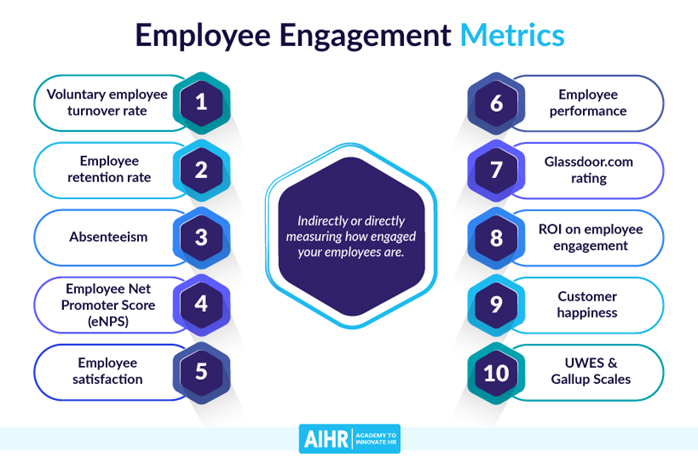

Case Study: General Electric (GE)
General Electric is a multinational conglomerate that has consistently adapted to changing market conditions. GE’s former CEO, Jack Welch, implemented a cultural transformation known as “Work-Out” in the 1990s. This initiative aimed to break down silos, encourage open communication, and promote a culture of collaboration and innovation. By instilling a strong organizational culture focused on adaptability, GE successfully managed numerous business portfolio changes, including divestitures and acquisitions, to stay ahead of market disruptions.
Driving Long-Term Success
Organizational identity and culture are critical for driving long-term success in a dynamic business environment. When an organization has a clear and strong identity, it guides strategic decision-making and ensures consistency in actions and behaviors. A culture that promotes adaptability and embraces change enables organizations to remain relevant and competitive in a rapidly evolving market. By fostering a culture of innovation, employee engagement, and resilience, organizations can build a sustainable competitive advantage. Moreover, a strong organizational identity and culture contribute to attracting and retaining top talent, enhancing customer loyalty, and cultivating a positive brand image, all of which are crucial for long-term success.

Case Study: Netflix
Netflix, a global entertainment company, experienced a dramatic shift from a DVD-by-mail service to a streaming platform. This transformation required a strong organizational identity and culture that embraced innovation and adaptability. Netflix fostered a culture of freedom and responsibility, where employees were encouraged to take risks and challenge traditional industry norms. The company’s commitment to its core values, such as customer obsession and continuous improvement, facilitated successful change management and enabled Netflix to become a dominant force in the streaming industry.
Conclusion
In a dynamic business environment, change management and adaptability are imperative for organizational success. A strong organizational identity and culture provide the foundation for effective change management, organizational resilience, innovation, employee engagement, and long-term success. By aligning change initiatives with the organization’s purpose, fostering a culture of adaptability, promoting innovation and agility, and cultivating employee engagement and commitment, organizations can navigate through change, seize opportunities, and thrive in a rapidly changing market. By embracing a strong organizational identity and culture, businesses can create a sustainable competitive advantage and position themselves for long-term success in a dynamic business landscape.

Exercise 1.10: Driving Change Management and Adaptability through Organizational Identity and Culture
1. Flipchart or whiteboard
2. Markers
3. Sticky notes
1. Introduction:
• Start the workshop by providing a brief overview of the importance of organizational identity and culture in driving change management and adaptability.
• Emphasize the impact of identity and culture on change readiness, employee engagement, communication, and innovation.
• Explain that the exercise will involve exploring these aspects and identifying strategies to leverage identity and culture for successful change management.
2. Group Activity – Impact Assessment:
• Divide participants into small groups.
• Assign each group one aspect impacted by organizational identity and culture: change readiness, employee engagement, communication, or innovation.
• Instruct groups to discuss and identify specific ways in which a strong organizational identity and culture influence their assigned aspect.
• Participants can write down their ideas on sticky notes and place them on a flipchart or whiteboard.
3. Group Sharing – Impact Discussion:
• Bring the groups back together and provide each group with an opportunity to share their findings.
• Facilitate a discussion by highlighting the key points from each aspect.
• Encourage participants to provide examples or anecdotes from their own experiences to support their observations.

Course Manual 11: Ethical Framework
An ethical framework in a company refers to a set of principles, values, and guidelines that guide the behavior and decision-making processes within the organization. It serves as a moral compass, providing a framework for employees to understand what is considered right and wrong, and how they should act in various situations.
An ethical framework typically includes the following components:
Core Values
These are the fundamental principles that define the company’s ethical stance. Core values often encompass integrity, honesty, respect, fairness, transparency, and accountability. They serve as the foundation upon which ethical behavior is built.
Code of Conduct
A code of conduct outlines specific guidelines and rules that employees are expected to follow. It provides detailed instructions on how to behave in various business contexts, including interactions with colleagues, customers, suppliers, and other stakeholders. The code of conduct may cover areas such as conflicts of interest, bribery, discrimination, harassment, data privacy, and environmental responsibility.
Ethical Decision-Making Process
An ethical framework should provide employees with a structured approach to making ethical decisions. This may involve assessing the potential impact of decisions on various stakeholders, considering legal and regulatory requirements, evaluating potential risks and consequences, and seeking guidance or advice when faced with ethical dilemmas.
Training and Education
Companies with a strong ethical framework invest in training and education programs to ensure that employees understand the company’s ethical standards and know how to apply them in their day-to-day work. Training sessions may cover topics such as ethical behavior, compliance with laws and regulations, reporting unethical conduct, and fostering a culture of integrity.
Ethical Leadership
Leaders within the organization play a critical role in setting the tone for ethical behavior. They are responsible for modeling ethical conduct, promoting a culture of integrity, and ensuring that the ethical framework is upheld throughout the company. Ethical leadership involves demonstrating transparency, accountability, and making ethical decisions even in challenging situations.
Compliance and Enforcement
An ethical framework should include mechanisms for monitoring compliance with ethical standards and enforcing consequences for violations. This may involve establishing reporting channels for ethical concerns, conducting internal audits or investigations, and implementing disciplinary measures when ethical misconduct occurs.
By establishing an ethical framework, companies aim to create a culture of integrity, trust, and responsible behavior. It helps guide employees in making ethical choices, ensures consistency in decision-making across the organization, and protects the company’s reputation and relationships with stakeholders.
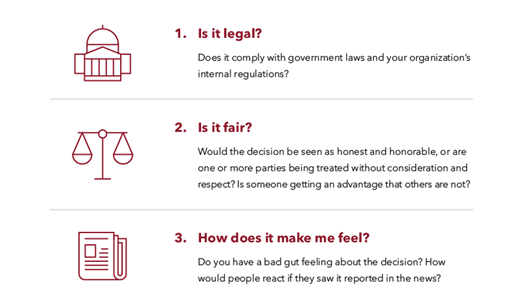
The Importance of Establishing an Ethical Framework
Establishing an ethical framework is important for several reasons, and it brings several benefits to a company. Here are some key reasons why it is important to establish an ethical framework and how it benefits the company:
Guiding Behavior and Decision-Making
An ethical framework provides a clear set of principles and guidelines that help employees understand what is expected of them in terms of ethical behavior. It serves as a moral compass, guiding their actions and decision-making processes. This clarity reduces ambiguity and promotes consistency in behavior across the organization.
Fostering a Culture of Integrity
An ethical framework sets the tone for a culture of integrity within the company. It communicates the company’s values, expectations, and commitment to ethical conduct. When employees have a shared understanding of ethical behavior and feel supported in upholding those standards, it creates a positive work environment built on trust, respect, and fairness.
Enhancing Reputation and Trust
Operating with integrity and ethical behavior enhances a company’s reputation and builds trust among its stakeholders. Customers, employees, investors, and business partners are more likely to engage with and support a company that demonstrates a commitment to ethical conduct. A strong reputation for ethical behavior can lead to increased customer loyalty, positive brand perception, and long-term sustainability.
Mitigating Risks and Legal Compliance
Establishing an ethical framework helps companies identify and address potential ethical risks and compliance issues proactively. By setting clear guidelines and expectations, the framework helps employees recognize and navigate ethical dilemmas, reducing the likelihood of misconduct or legal violations. This can protect the company from reputational damage, legal liabilities, and financial losses.
Attracting and Retaining Talent
Companies with a strong ethical framework tend to attract and retain top talent. Employees are increasingly looking for organizations that align with their values and prioritize ethical behavior. A well-defined ethical framework demonstrates the company’s commitment to ethical standards, making it an attractive workplace for individuals who value integrity and ethical conduct.
Improving Decision-Making and Problem-Solving
An ethical framework provides a structured approach to decision-making, particularly in complex or ambiguous situations. It helps employees consider the ethical implications of their choices and make decisions that align with the company’s values. By encouraging ethical decision-making, the framework promotes sound judgment and problem-solving skills within the organization.
Engaging Stakeholders and Building Relationships
Companies that prioritize ethics and integrity in their operations are more likely to build strong and long-lasting relationships with stakeholders. Ethical behavior fosters trust, transparency, and open communication with customers, suppliers, investors, and the community. This positive engagement can lead to collaboration, partnerships, and mutually beneficial relationships that contribute to the company’s success.
In summary, establishing an ethical framework is important for setting clear expectations, fostering a culture of integrity, protecting the company’s reputation, mitigating risks, attracting and retaining talent, improving decision-making, and building strong relationships with stakeholders. It ultimately contributes to the long-term success and sustainability of the company.

Case Study: Volkswagen
In 2015, Volkswagen, a leading German car manufacturer, faced a major scandal known as the “Dieselgate” scandal. The company was found to have installed software in its diesel vehicles to manipulate emissions test results, deceiving regulators and customers. This deliberate violation of ethical standards resulted in massive fines, legal actions, damaged reputation, and loss of customer trust for Volkswagen.

Case Study: Wells Fargo
Wells Fargo, one of the largest banks in the United States, faced a scandal in 2016 related to the creation of unauthorized customer accounts. Employees opened millions of fraudulent accounts without customers’ knowledge or consent to meet aggressive sales targets. This unethical behavior resulted in significant reputational damage, regulatory penalties, lawsuits, and a loss of customer trust.

Case Study: Theranos
Theranos, a health technology company, faced a high-profile scandal in 2015 when it was revealed that the company’s blood testing technology did not work as claimed. The founder and CEO, Elizabeth Holmes, misled investors, patients, and regulators about the capabilities and accuracy of the technology. This lack of ethical framework led to the company’s downfall, criminal charges against its founder, and the dissolution of the company.
These examples highlight the severe consequences that companies can face when they lack a strong ethical framework. Ethical misconduct can lead to financial losses, legal consequences, damaged reputation, loss of customer trust, and negative impacts on employees and stakeholders. It underscores the importance of establishing and upholding strong ethical standards and practices within organizations.

Exercise 1.11: Creating an Ethical Framework for Your Company
1. Flipchart or whiteboard
2. Markers
3. Sticky notes
1. Introduction:
• Begin the workshop by explaining the importance of establishing an ethical framework for the company and the benefits it brings.
• Briefly describe the key components of an ethical framework, including core values, a code of conduct, an ethical decision-making process, training and education, ethical leadership, and compliance mechanisms.
2. Group Activity – Defining Core Values:
• Divide participants into small groups.
• Instruct each group to discuss and identify the core values that should be included in the company’s ethical framework.
• Encourage participants to consider the company’s mission, vision, and desired organizational culture.
• Participants can write each core value on a sticky note and place them on a flipchart or whiteboard for group sharing.
3. Group Sharing – Core Values Discussion:
• Bring the groups back together and provide each group with an opportunity to share the core values they identified.
• Facilitate a discussion to identify common themes and values among the groups.
• Encourage participants to explain the rationale behind their chosen core values and how they align with the company’s mission and vision.

Course Manual 12: Measuring Identity
Why Measuring Your Company’s Identity Is Important
Clarity and Alignment
Measuring your company’s identity helps you gain a clear understanding of what your organization stands for, its purpose, values, and overall brand identity. It allows you to assess whether there is alignment between the desired identity and the actual perception of your company by employees, customers, and stakeholders. This alignment ensures consistency in messaging, decision-making, and actions, which is crucial for building trust and credibility.
Differentiation
In a competitive marketplace, having a strong and distinct identity sets your company apart from others. Measuring your company’s identity helps you identify what makes your organization unique and valuable to your target audience. It enables you to highlight your competitive advantages, key strengths, and value proposition, which can be leveraged in marketing, branding, and positioning strategies.
Employee Engagement and Retention
A clear and well-communicated company identity fosters employee engagement and loyalty. When employees understand and connect with the company’s identity, they feel a sense of purpose, pride, and belonging. Measuring your company’s identity allows you to gauge employee perception and alignment, identify areas where communication or clarification is needed, and address any gaps that may affect employee satisfaction and retention.
Customer Perception and Loyalty
Your company’s identity plays a vital role in shaping how customers perceive and relate to your brand. Measuring your company’s identity helps you assess whether your intended identity is effectively conveyed to your target audience. It allows you to understand customer perceptions, preferences, and expectations, helping you refine your branding and marketing strategies to enhance customer loyalty and satisfaction.
Strategic Decision-Making
Measuring your company’s identity provides valuable insights for strategic decision-making. It helps leaders and managers understand the core values and guiding principles that should inform business strategies, product development, customer interactions, and partnerships. By aligning decisions with the company’s identity, you ensure that actions and initiatives are in line with the overall vision and purpose, driving long-term success.
Adaptability and Innovation
Measuring your company’s identity on an ongoing basis allows you to monitor changes and trends in the external environment and assess whether adjustments to your identity are necessary. It enables you to evaluate the relevance and effectiveness of your current identity in light of evolving market conditions, customer needs, and emerging opportunities. This adaptability ensures that your company remains agile, innovative, and responsive to changing dynamics.
In summary, measuring your company’s identity provides valuable insights for strategic decision-making, employee engagement, customer perception, and differentiation in the marketplace. It helps maintain consistency, relevance, and alignment between the desired identity and the actual perception of your organization, fostering a strong and resilient brand image.
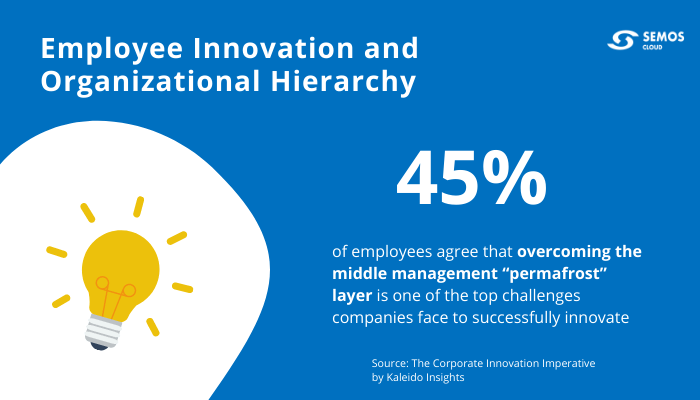
Measuring Your Company’s Identity
Assessing the cultural identity of a company involves evaluating the shared values, beliefs, behaviors, and norms that shape the organization’s overall culture. Here are some steps you can take to assess your company’s cultural identity:
1. Define your company’s mission, vision, and values: Start by clarifying the purpose, goals, and core values of your organization. These foundational elements provide a framework for understanding the cultural identity you aim to cultivate.
2. Conduct employee surveys and feedback sessions: Gather input from employees through surveys, focus groups, or one-on-one discussions. Ask questions related to their perceptions of the company’s culture, values, and behaviors. Seek feedback on whether they feel aligned with the organization’s cultural identity and if they believe it is consistently practiced throughout the company.
3. Observe employee behavior and interactions: Pay attention to the daily behaviors, interactions, and practices exhibited by employees. Observe how they communicate, collaborate, and make decisions. Look for patterns and consistent behaviors that reflect the desired cultural identity.
4. Assess leadership and management practices: Evaluate how leaders and managers uphold and promote the company’s cultural identity. Assess their actions, communication styles, and decision-making processes to determine if they align with the desired culture. Strong leadership commitment to the cultural identity is crucial for it to be embedded throughout the organization.
5. Review organizational policies and practices: Examine the policies, procedures, and practices in place within your company. Assess whether they align with the desired cultural identity. For example, policies related to employee recognition, performance management, diversity and inclusion, and work-life balance can provide insights into the company’s cultural values.
6. Analyze employee engagement and satisfaction data: Look at metrics related to employee engagement, satisfaction, and retention. High levels of employee engagement and satisfaction are often indicators of a positive cultural identity. Conversely, low engagement and high turnover rates might suggest misalignment with the desired cultural identity.
7. Seek external perspectives: Consider obtaining external perspectives through surveys, customer feedback, or industry recognition. Assess how your company is perceived by clients, partners, and other stakeholders. This external viewpoint can offer valuable insights into your company’s cultural identity and reputation.
8. Compare aspirations to reality: Compare the cultural identity you aspire to have with the cultural identity that is actually practiced and experienced within the organization. Identify any gaps or areas for improvement and develop action plans to bridge those gaps.
By following these steps, you can gain a better understanding of your company’s cultural identity and identify areas where improvements may be needed. Remember that cultural identity is an ongoing process, and it requires continuous effort, reinforcement, and alignment throughout the organization.
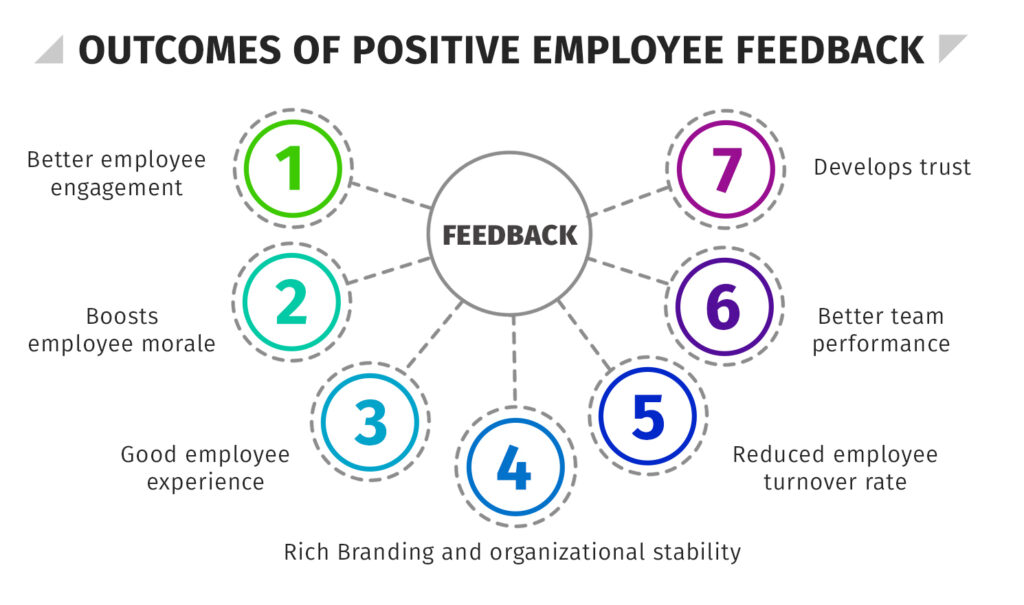
The Risks in Failing to Measure Company Identity
Not knowing your company’s identity or failing to have a clear understanding of it can pose several risks:
Inconsistent Brand Messaging
Without a clear identity, it becomes challenging to communicate a consistent message about your company’s values, purpose, and offerings. Inconsistency in brand messaging can confuse customers and stakeholders, leading to a lack of trust and a weakened brand reputation.
Employee Disengagement
When employees are uncertain about the company’s identity, purpose, and values, it becomes difficult for them to align their work with the organization’s goals. This lack of alignment can result in decreased employee engagement, motivation, and productivity, ultimately impacting overall performance and retention.
Customer Confusion and Loss
Without a well-defined identity, customers may struggle to understand what sets your company apart from competitors. This confusion can lead to decreased customer loyalty and a loss of potential business opportunities. Customers are more likely to connect with and remain loyal to brands that have a clear and compelling identity.
Ineffective Decision-Making
A lack of clarity regarding the company’s identity can lead to inconsistent and ineffective decision-making. Without a clear understanding of the company’s values, purpose, and long-term goals, decision-makers may make choices that are not aligned with the organization’s core identity, potentially hindering progress and growth.

Case Study: Uber
Uber, the ride-hailing company, has faced criticism for its lack of a clear corporate identity, which has resulted in confusion and controversy among its drivers. Many drivers have expressed frustration over issues such as inconsistent policies, unclear communication, and a perceived lack of support from the company. The lack of a clear identity and consistent messaging from Uber has led to discontent and a strained relationship with its driver community.
Difficulty Attracting and Retaining Talent
In today’s competitive job market, talented professionals are often attracted to companies that have a strong identity and a clear sense of purpose. Without a defined identity, it can be challenging to attract and retain top talent who are seeking organizations that align with their own values and career aspirations.
Missed Opportunities
Not knowing your company’s identity can result in missed opportunities to leverage your unique strengths, differentiate yourself from competitors, and connect with your target audience. It becomes difficult to identify and capitalize on market trends, emerging customer needs, and industry developments, potentially limiting growth and innovation.
Lack of Organizational Cohesion
A company without a clear identity may struggle to foster a sense of unity, purpose, and collaboration among employees. Without a shared understanding of the company’s identity, departments and teams may operate in silos, leading to a lack of cohesion, coordination, and synergy across the organization.

Case Study: Enron
Enron, an energy company that infamously collapsed in 2001, had a culture characterized by ambiguity and unclear identity. The company’s emphasis on financial performance and questionable accounting practices overshadowed its core values and ethical standards. Employees were caught up in a culture that prioritized profits above all else, leading to unethical behavior and ultimately the downfall of the company. The lack of a clear and ethical identity contributed to the erosion of trust among employees and stakeholders.
Cultural Alignment Metrics
What is the first step to achieving cultural alignment, then? Of course, by measuring it. An easy solution, but not so easy to implement. If you’re unsure about where to begin, consider these possibilities.
• Off-the-Shelf Surveys
Numerous surveys that are available off the shelf are based on research models. Although these offer reliable models of culture, they can fail to capture culture in a way that is pertinent to a particular or unique business (such as Facebook’sTM Hacker Way).
• Specifically Designed Surveys
An alternate strategy would be to design a custom survey that takes into account the particular requirements of your firm if off-the-shelf surveys don’t give you the pertinent questions or models you need. Custom surveys give you the chance to connect corporate strategy and culture measurement. However, due to their special nature, customised measures frequently entail large expenditures of resources (both time and money) and are not necessarily appropriate for comparing the organizational culture to that of other businesses (a benefit of some off-the-shelf surveys).
• Crowdsourced Culture
A cutting-edge, straightforward four-step approach to gauging culture is called Crowdsourced Culture. This tool measures culture through the voice of your employees and is much less resource-intensive than alternative approaches.

Exercise 1.12: Measuring Your Company’s Culture and Identity
1. Flipchart or whiteboard
2. Markers
3. Sticky notes
4. Handout or worksheet with relevant questions and metrics (prepared in advance)
1. Introduction:
• Start the workshop by explaining the importance of measuring and understanding the company’s culture and identity.
• Emphasize how a clear understanding of culture and identity can guide decision-making, foster employee engagement, and contribute to the overall success of the organization.
2. Group Discussion: Defining Culture and Identity:
• Facilitate a group discussion to collectively define and clarify what culture and identity mean within the context of the organization.
• Encourage participants to share their perspectives and insights on how culture and identity manifest in day-to-day operations, behaviors, and values.
Project Studies
Project Study (Part 1) – Customer Service
The Head of this Department is to provide a detailed report relating to the Corporate ID process that has been implemented within their department, together with all key stakeholders, as a result of conducting this workshop, incorporating process: planning; development; implementation; management; and review. Your process should feature the following 12 parts:
01. Defining Identity
02. Strong Culture
03. Cultural Alignment
04. Building Engagement
05. Enhancing Collaboration
06. Attracting Talent
07. Positive Environment
08. Customer Experience
09. Differentiating from Competitors
10. Managing Change
11. Ethical Framework
12. Measuring Identity
Please include the results of the initial evaluation and assessment.
Project Study (Part 2) – E-Business
The Head of this Department is to provide a detailed report relating to the Corporate ID process that has been implemented within their department, together with all key stakeholders, as a result of conducting this workshop, incorporating process: planning; development; implementation; management; and review. Your process should feature the following 12 parts:
01. Defining Identity
02. Strong Culture
03. Cultural Alignment
04. Building Engagement
05. Enhancing Collaboration
06. Attracting Talent
07. Positive Environment
08. Customer Experience
09. Differentiating from Competitors
10. Managing Change
11. Ethical Framework
12. Measuring Identity
Please include the results of the initial evaluation and assessment.
Project Study (Part 3) – Finance
The Head of this Department is to provide a detailed report relating to the Corporate ID process that has been implemented within their department, together with all key stakeholders, as a result of conducting this workshop, incorporating process: planning; development; implementation; management; and review. Your process should feature the following 12 parts:
01. Defining Identity
02. Strong Culture
03. Cultural Alignment
04. Building Engagement
05. Enhancing Collaboration
06. Attracting Talent
07. Positive Environment
08. Customer Experience
09. Differentiating from Competitors
10. Managing Change
11. Ethical Framework
12. Measuring Identity
Please include the results of the initial evaluation and assessment.
Project Study (Part 4) – Globalization
The Head of this Department is to provide a detailed report relating to the Corporate ID process that has been implemented within their department, together with all key stakeholders, as a result of conducting this workshop, incorporating process: planning; development; implementation; management; and review. Your process should feature the following 12 parts:
01. Defining Identity
02. Strong Culture
03. Cultural Alignment
04. Building Engagement
05. Enhancing Collaboration
06. Attracting Talent
07. Positive Environment
08. Customer Experience
09. Differentiating from Competitors
10. Managing Change
11. Ethical Framework
12. Measuring Identity
Please include the results of the initial evaluation and assessment.
Project Study (Part 5) – Human Resources
The Head of this Department is to provide a detailed report relating to the Corporate ID process that has been implemented within their department, together with all key stakeholders, as a result of conducting this workshop, incorporating process: planning; development; implementation; management; and review. Your process should feature the following 12 parts:
01. Defining Identity
02. Strong Culture
03. Cultural Alignment
04. Building Engagement
05. Enhancing Collaboration
06. Attracting Talent
07. Positive Environment
08. Customer Experience
09. Differentiating from Competitors
10. Managing Change
11. Ethical Framework
12. Measuring Identity
Please include the results of the initial evaluation and assessment.
Project Study (Part 6) – Information Technology
The Head of this Department is to provide a detailed report relating to the Corporate ID process that has been implemented within their department, together with all key stakeholders, as a result of conducting this workshop, incorporating process: planning; development; implementation; management; and review. Your process should feature the following 12 parts:
01. Defining Identity
02. Strong Culture
03. Cultural Alignment
04. Building Engagement
05. Enhancing Collaboration
06. Attracting Talent
07. Positive Environment
08. Customer Experience
09. Differentiating from Competitors
10. Managing Change
11. Ethical Framework
12. Measuring Identity
Please include the results of the initial evaluation and assessment.
Project Study (Part 7) – Legal
The Head of this Department is to provide a detailed report relating to the Corporate ID process that has been implemented within their department, together with all key stakeholders, as a result of conducting this workshop, incorporating process: planning; development; implementation; management; and review. Your process should feature the following 12 parts:
01. Defining Identity
02. Strong Culture
03. Cultural Alignment
04. Building Engagement
05. Enhancing Collaboration
06. Attracting Talent
07. Positive Environment
08. Customer Experience
09. Differentiating from Competitors
10. Managing Change
11. Ethical Framework
12. Measuring Identity
Please include the results of the initial evaluation and assessment.
Project Study (Part 8) – Management
The Head of this Department is to provide a detailed report relating to the Corporate ID process that has been implemented within their department, together with all key stakeholders, as a result of conducting this workshop, incorporating process: planning; development; implementation; management; and review. Your process should feature the following 12 parts:
01. Defining Identity
02. Strong Culture
03. Cultural Alignment
04. Building Engagement
05. Enhancing Collaboration
06. Attracting Talent
07. Positive Environment
08. Customer Experience
09. Differentiating from Competitors
10. Managing Change
11. Ethical Framework
12. Measuring Identity
Please include the results of the initial evaluation and assessment.

Project Study (Part 9) – Marketing
The Head of this Department is to provide a detailed report relating to the Corporate ID process that has been implemented within their department, together with all key stakeholders, as a result of conducting this workshop, incorporating process: planning; development; implementation; management; and review. Your process should feature the following 12 parts:
01. Defining Identity
02. Strong Culture
03. Cultural Alignment
04. Building Engagement
05. Enhancing Collaboration
06. Attracting Talent
07. Positive Environment
08. Customer Experience
09. Differentiating from Competitors
10. Managing Change
11. Ethical Framework
12. Measuring Identity
Please include the results of the initial evaluation and assessment.

Project Study (Part 10) – Production
The Head of this Department is to provide a detailed report relating to the Corporate ID process that has been implemented within their department, together with all key stakeholders, as a result of conducting this workshop, incorporating process: planning; development; implementation; management; and review. Your process should feature the following 12 parts:
01. Defining Identity
02. Strong Culture
03. Cultural Alignment
04. Building Engagement
05. Enhancing Collaboration
06. Attracting Talent
07. Positive Environment
08. Customer Experience
09. Differentiating from Competitors
10. Managing Change
11. Ethical Framework
12. Measuring Identity
Please include the results of the initial evaluation and assessment.

Project Study (Part 11) – Logistics
The Head of this Department is to provide a detailed report relating to the Corporate ID process that has been implemented within their department, together with all key stakeholders, as a result of conducting this workshop, incorporating process: planning; development; implementation; management; and review. Your process should feature the following 12 parts:
01. Defining Identity
02. Strong Culture
03. Cultural Alignment
04. Building Engagement
05. Enhancing Collaboration
06. Attracting Talent
07. Positive Environment
08. Customer Experience
09. Differentiating from Competitors
10. Managing Change
11. Ethical Framework
12. Measuring Identity
Please include the results of the initial evaluation and assessment.

Project Study (Part 12) – Education
The Head of this Department is to provide a detailed report relating to the Corporate ID process that has been implemented within their department, together with all key stakeholders, as a result of conducting this workshop, incorporating process: planning; development; implementation; management; and review. Your process should feature the following 12 parts:
01. Defining Identity
02. Strong Culture
03. Cultural Alignment
04. Building Engagement
05. Enhancing Collaboration
06. Attracting Talent
07. Positive Environment
08. Customer Experience
09. Differentiating from Competitors
10. Managing Change
11. Ethical Framework
12. Measuring Identity
Please include the results of the initial evaluation and assessment.
Program Benefits
Human Resources
- Inclusive Environment
- Diversity
- Cultural Awareness
- Sensitivity Training
- Cross-Cultural Communication
- Collaboration
- Develop Policies
- Inclusion
- Diverse Talent Pool
- Employee Engagement
Marketing
- Market Research
- Consumer Behaviors
- Relevant Campaigns
- Cultural Perspectives
- Market Reach
- Brand Perception
- Stronger Connections
- Innovation
- Improved Engagement
- Cultural Sensitivity
R&D
- Diverse Perspectives
- Broader Insights
- Cross-Cultural Collaboration
- Promotes Innovation
- Market Relevance
- Best Practices
- New Concepts
- Risk-Taking
- Push Boundaries
- Breakthrough Solutions
Client Telephone Conference (CTC)
If you have any questions or if you would like to arrange a Client Telephone Conference (CTC) to discuss this particular Unique Consulting Service Proposition (UCSP) in more detail, please CLICK HERE.

























